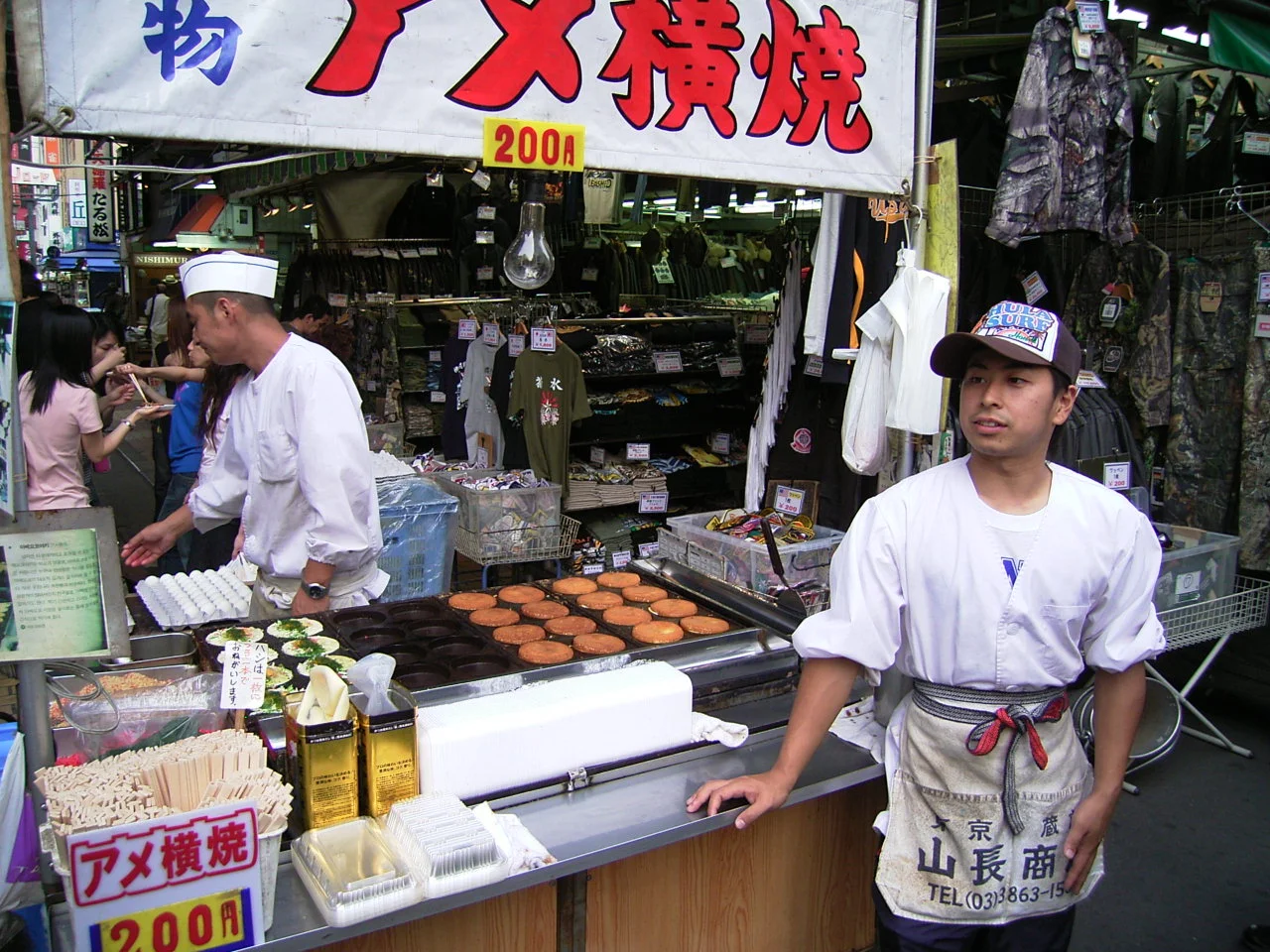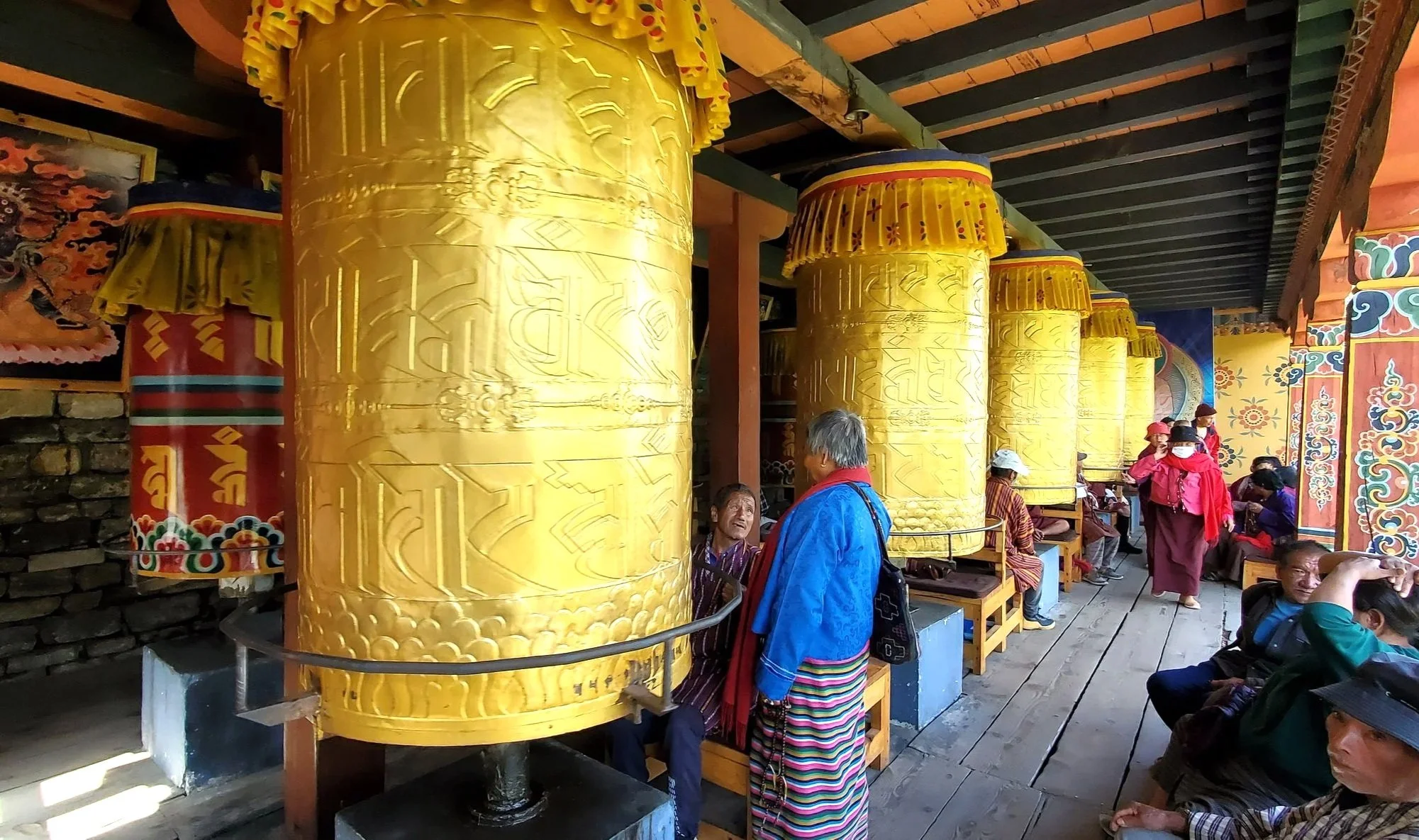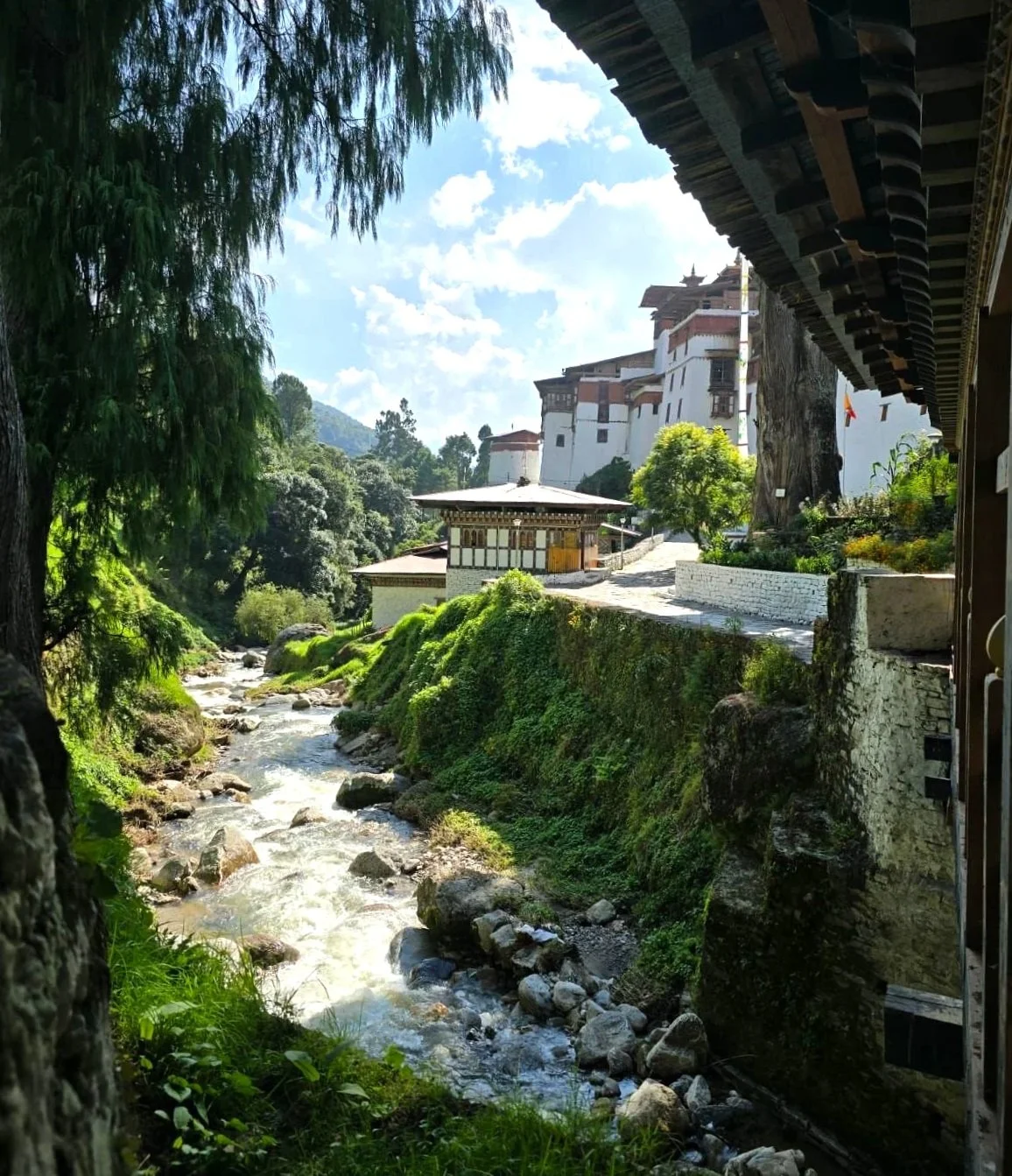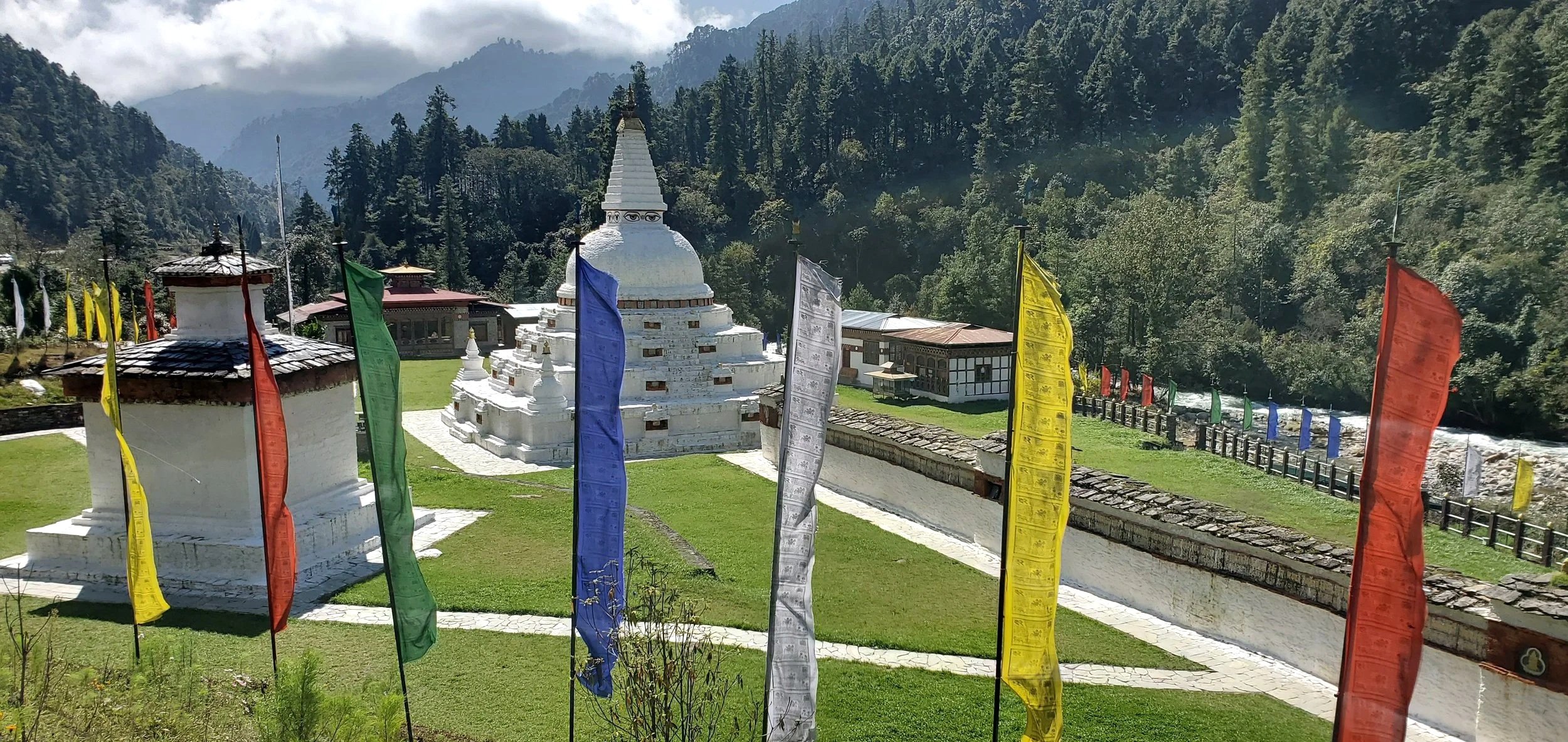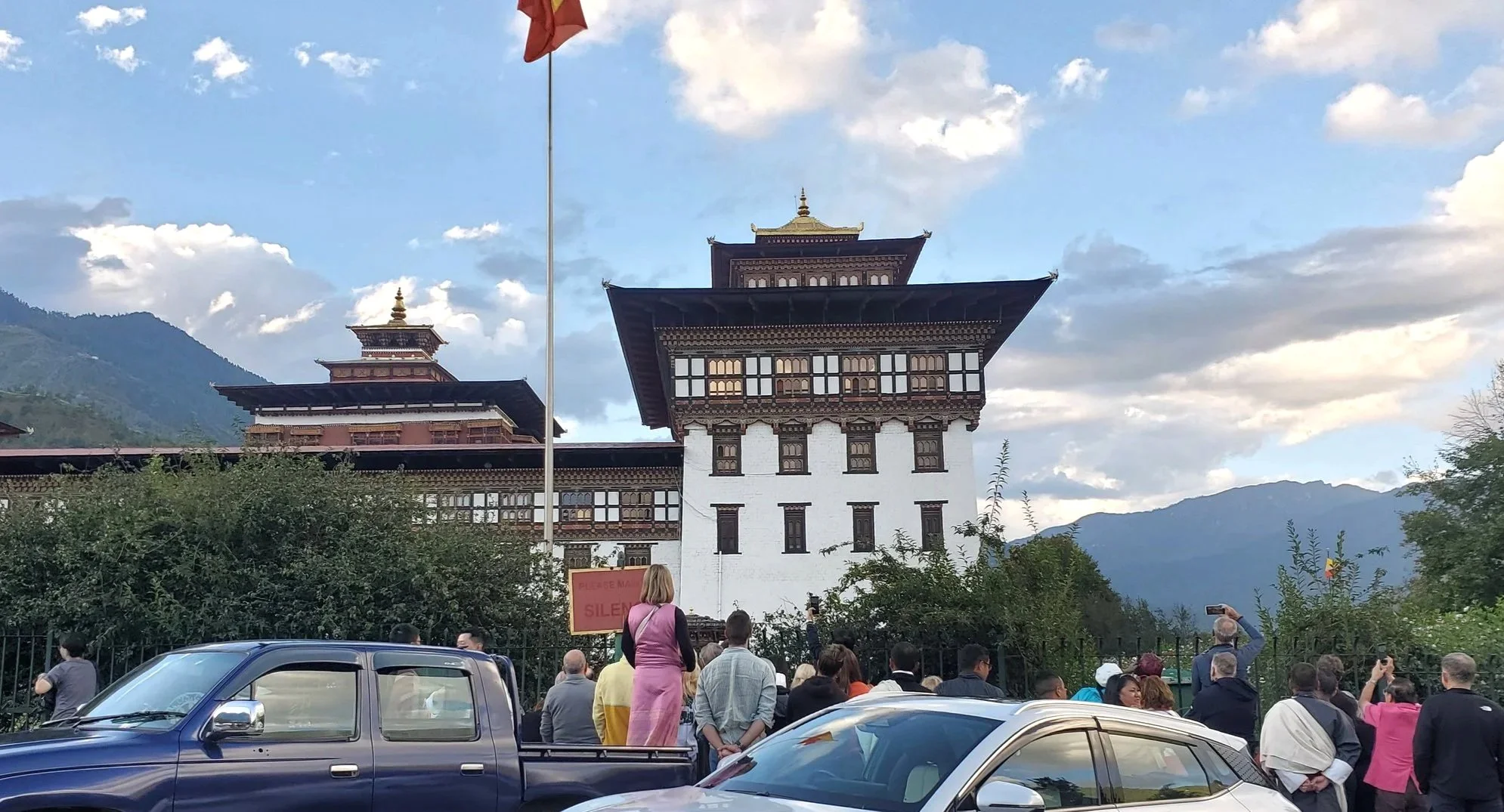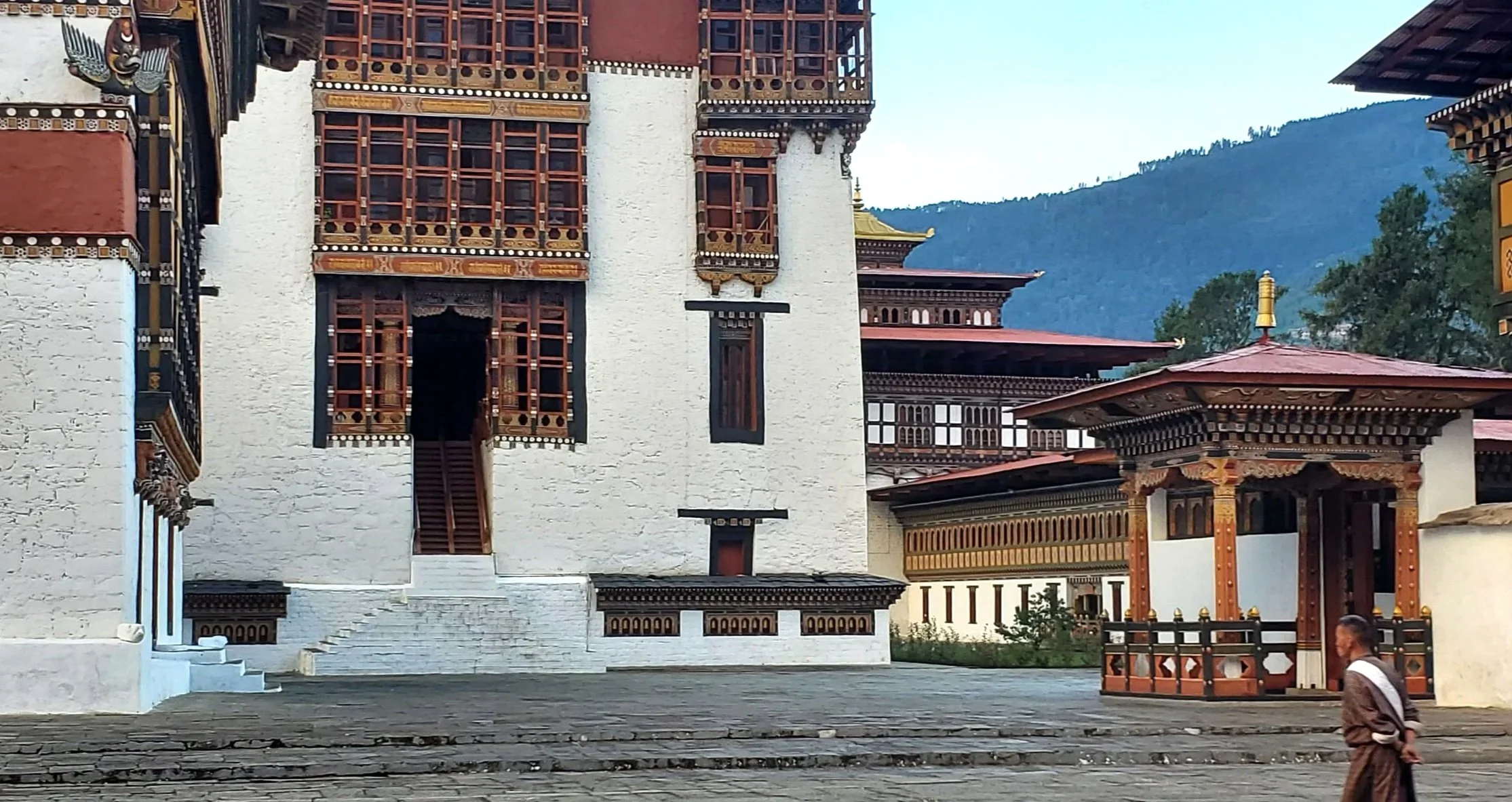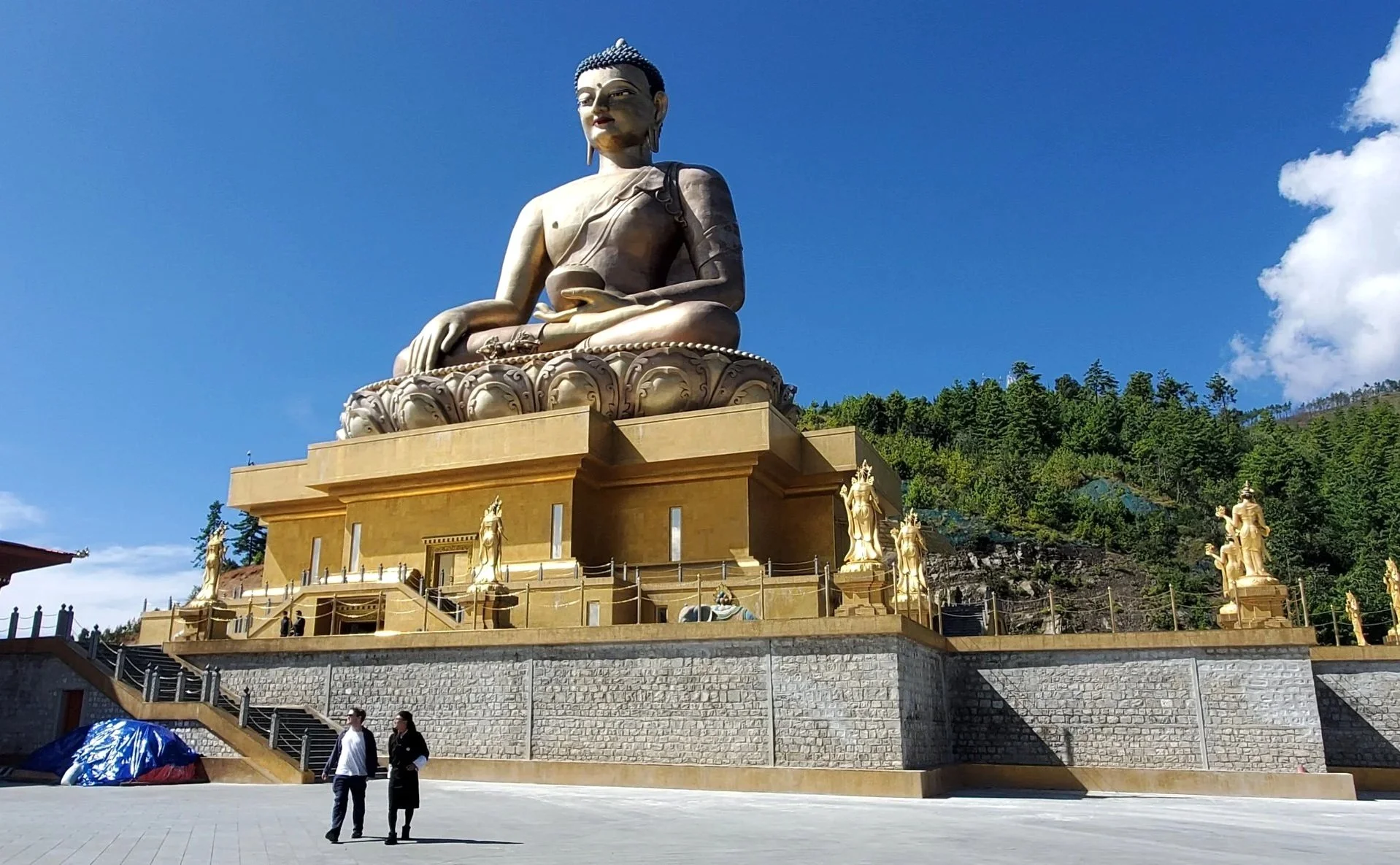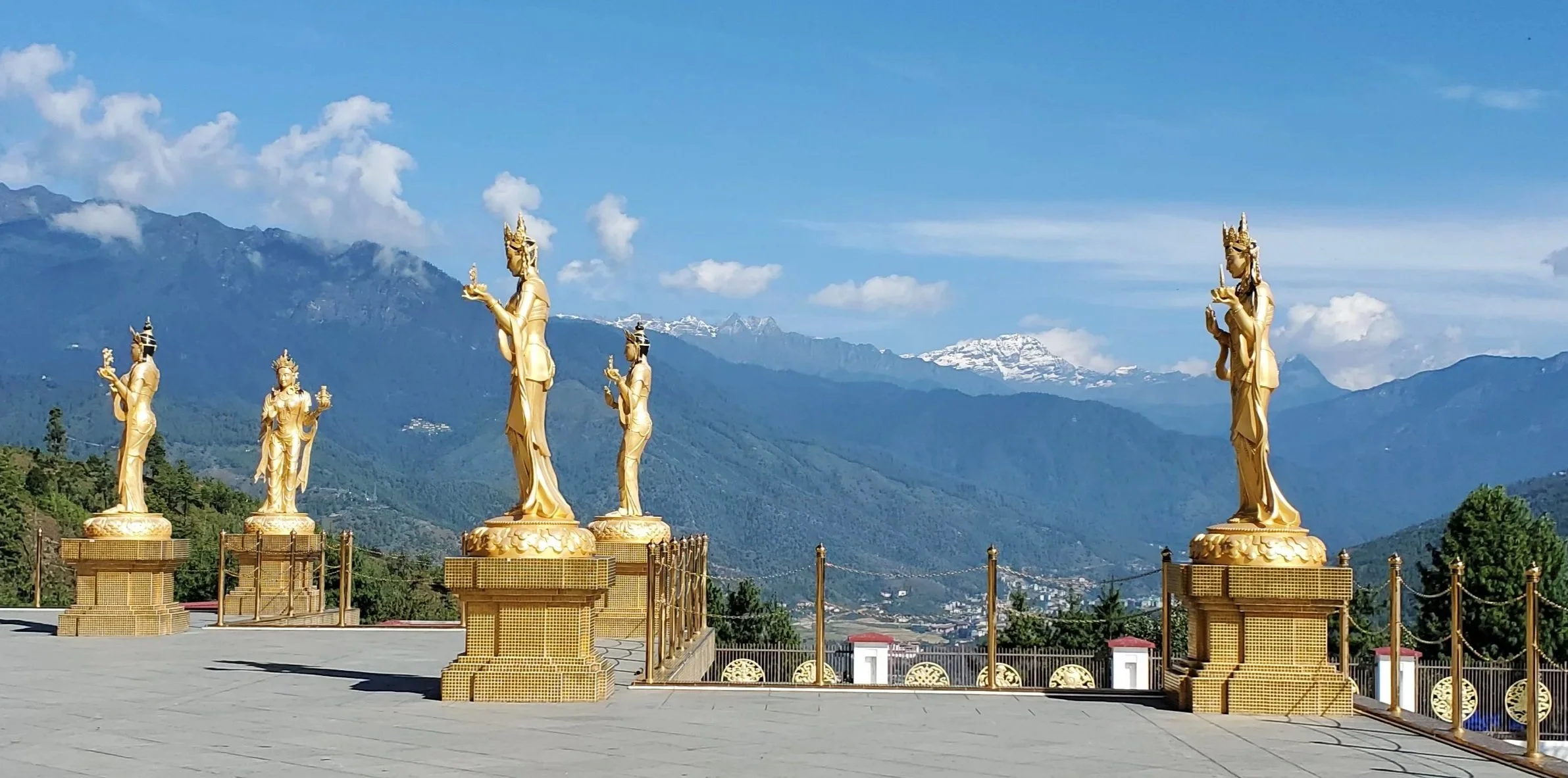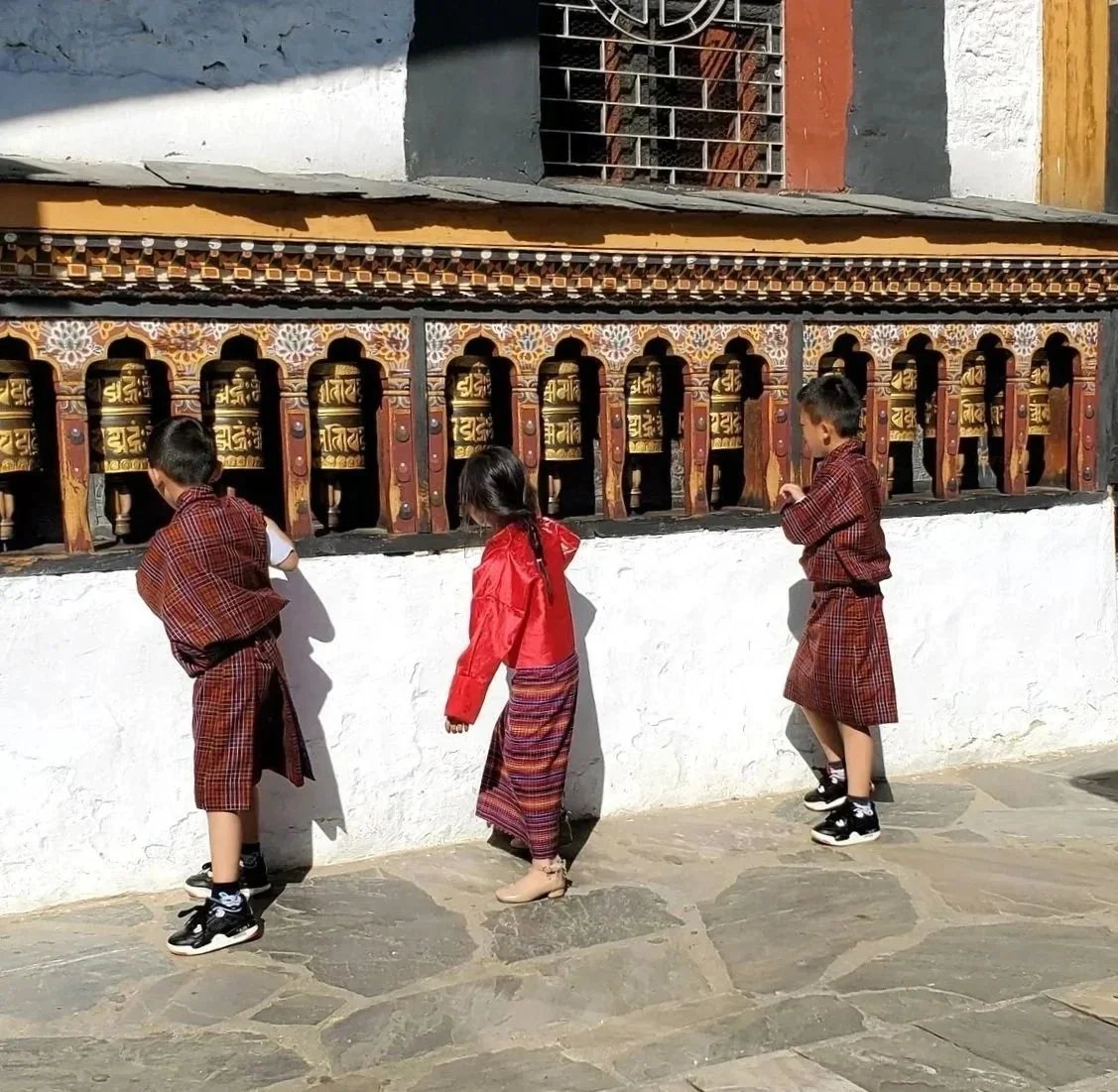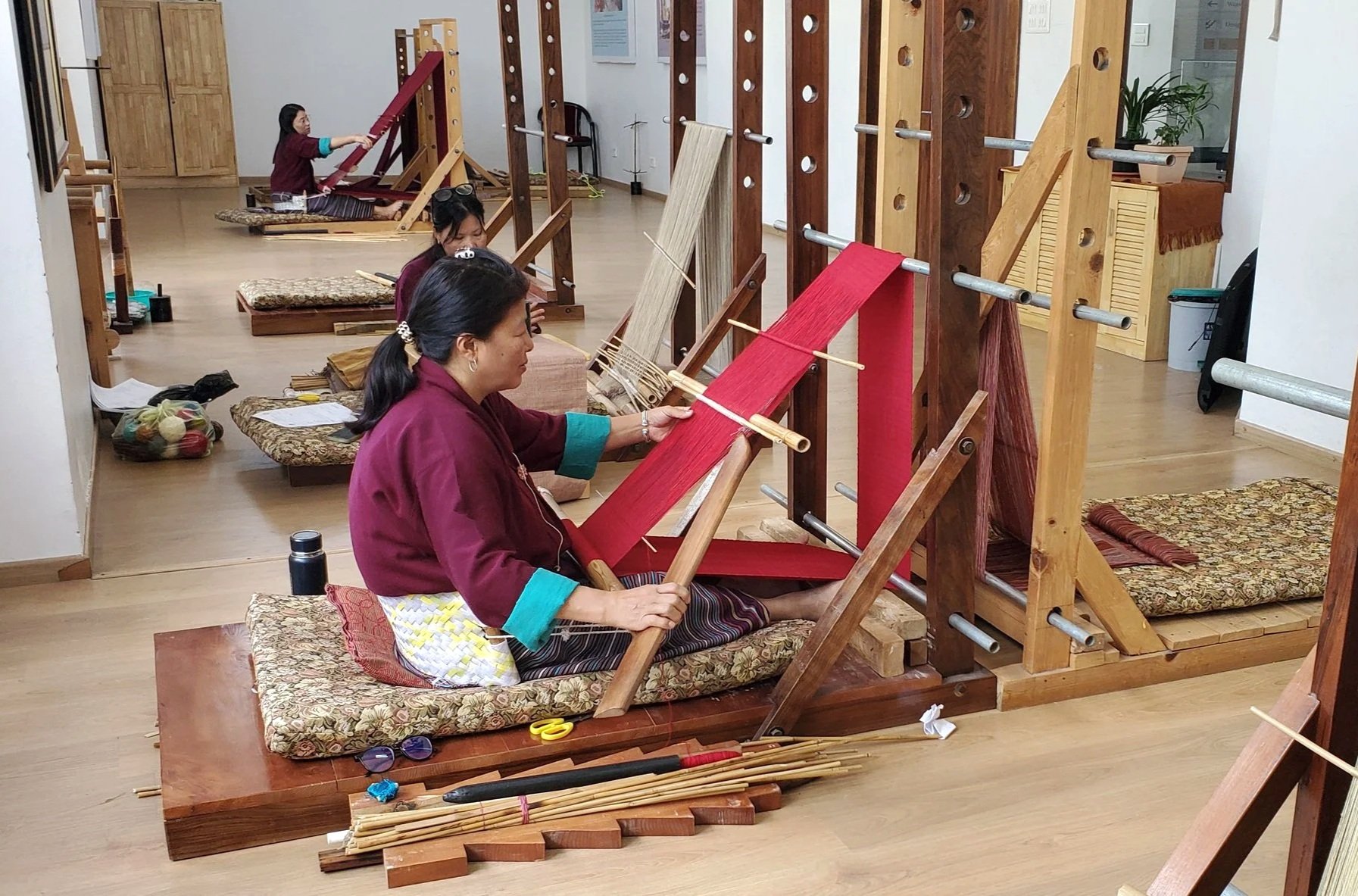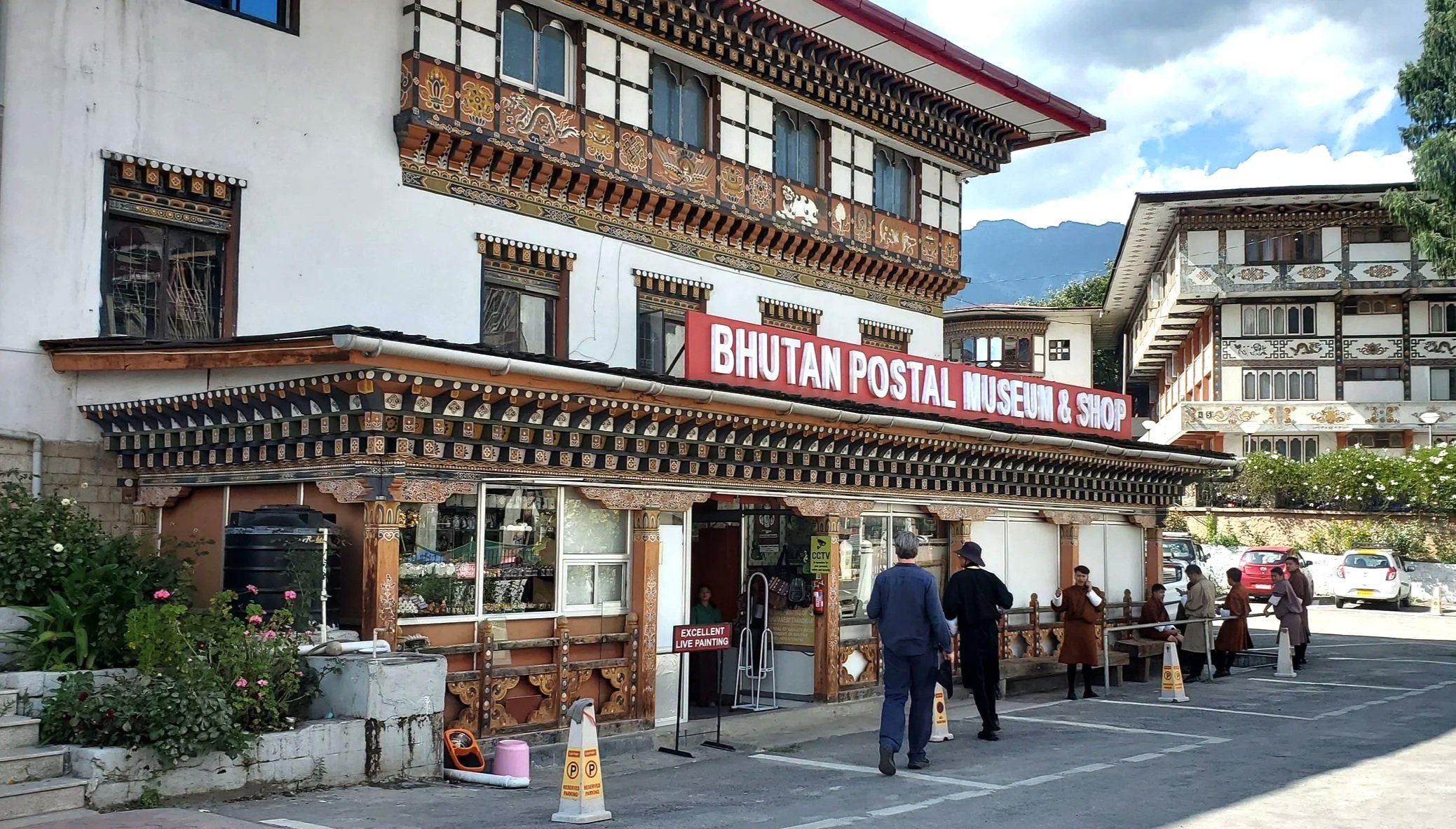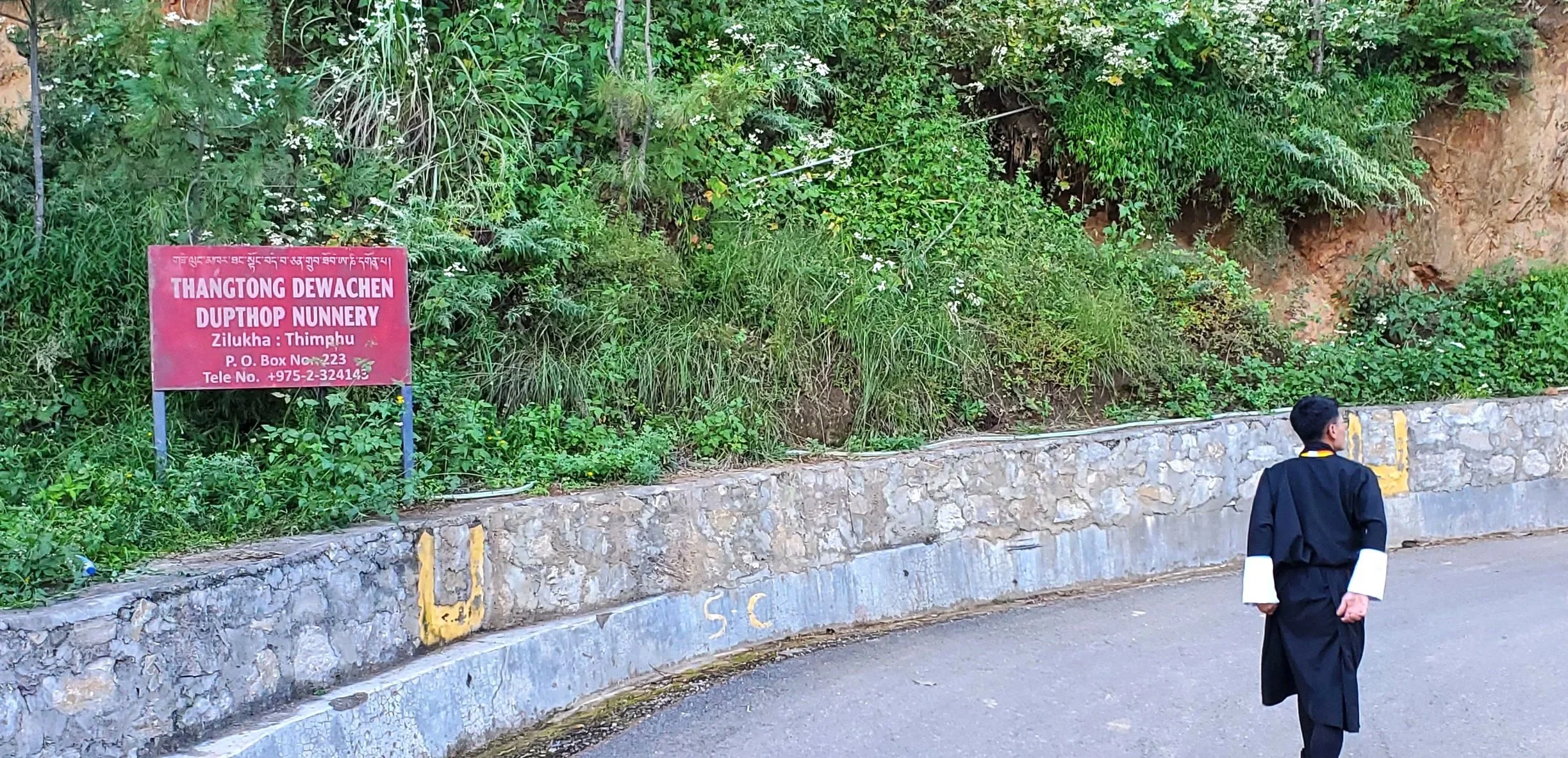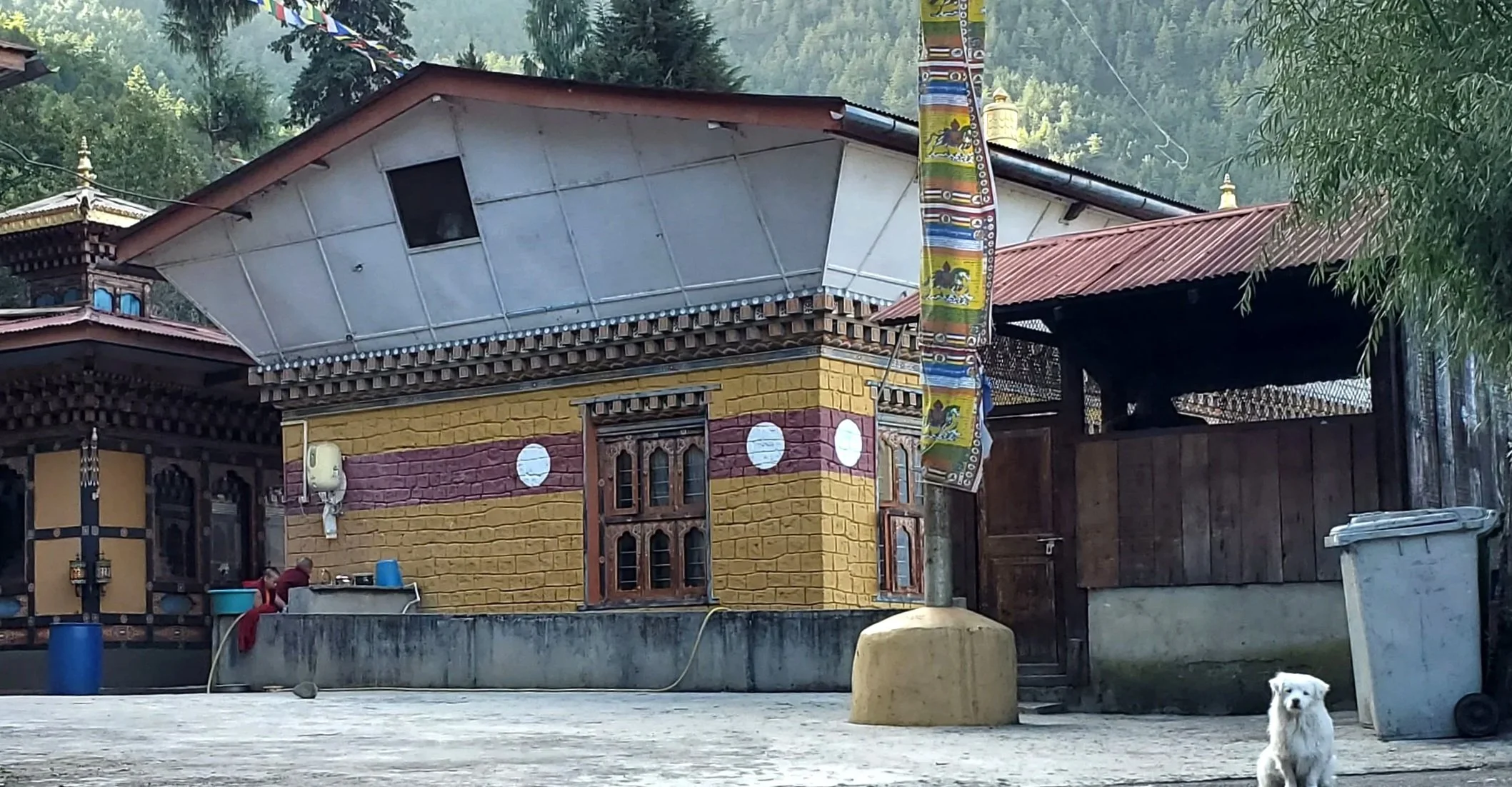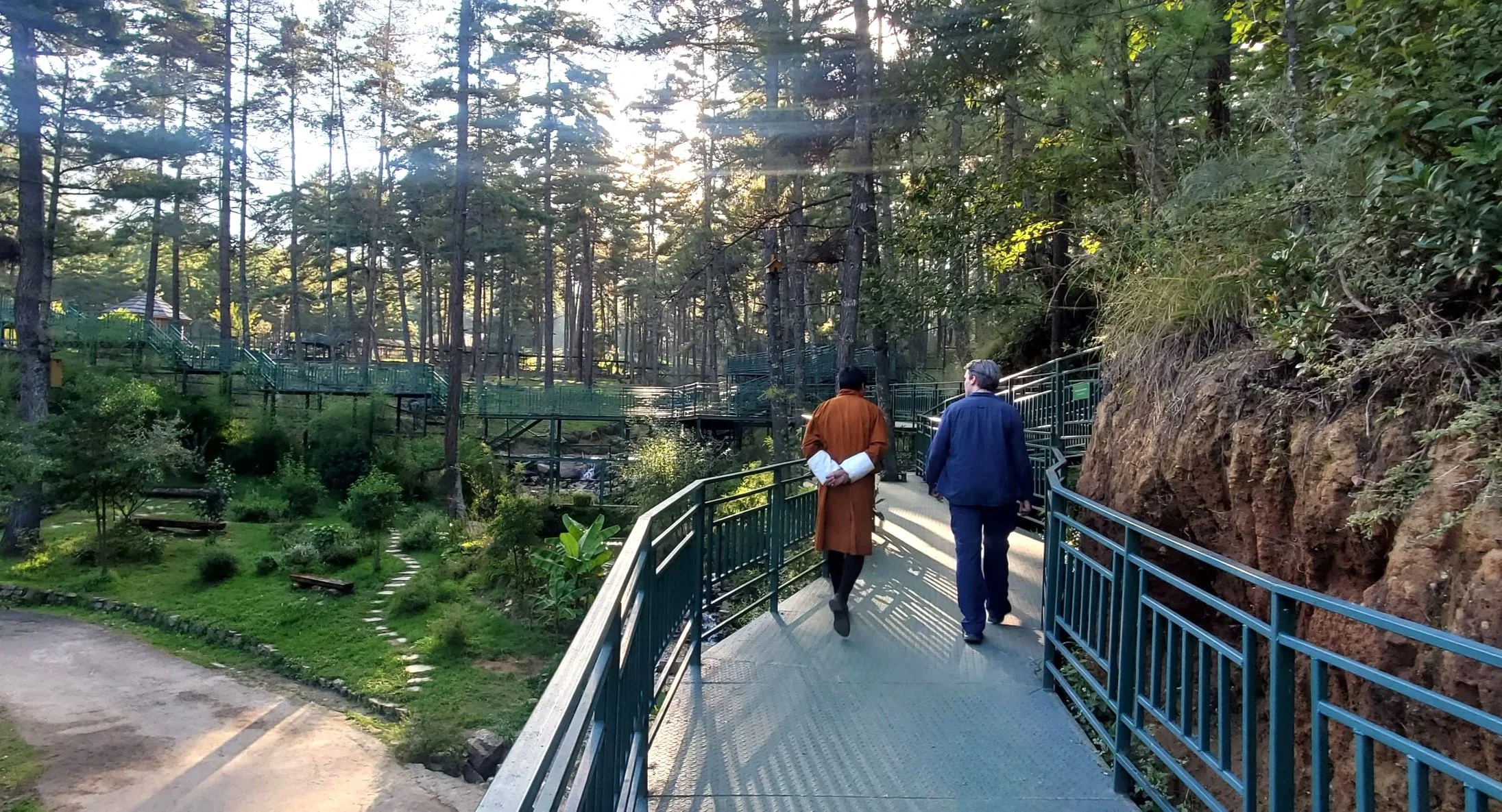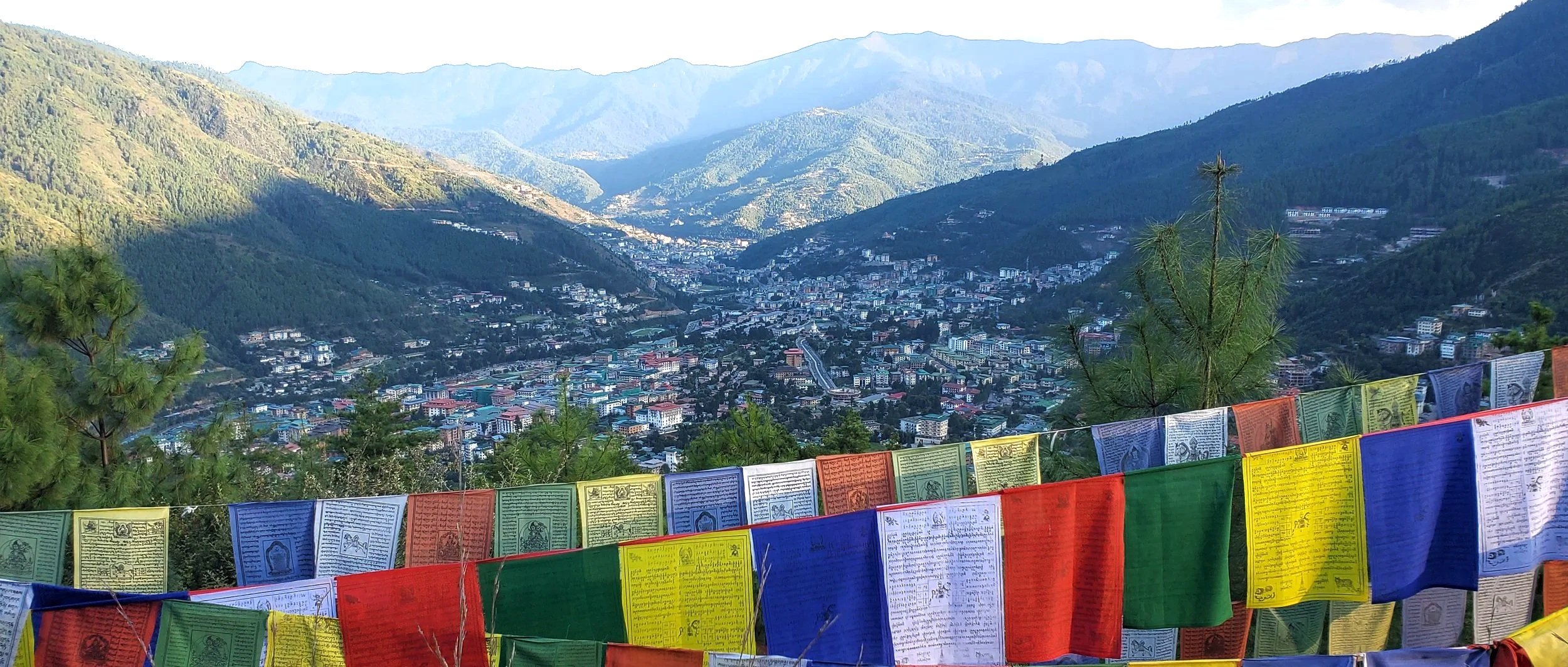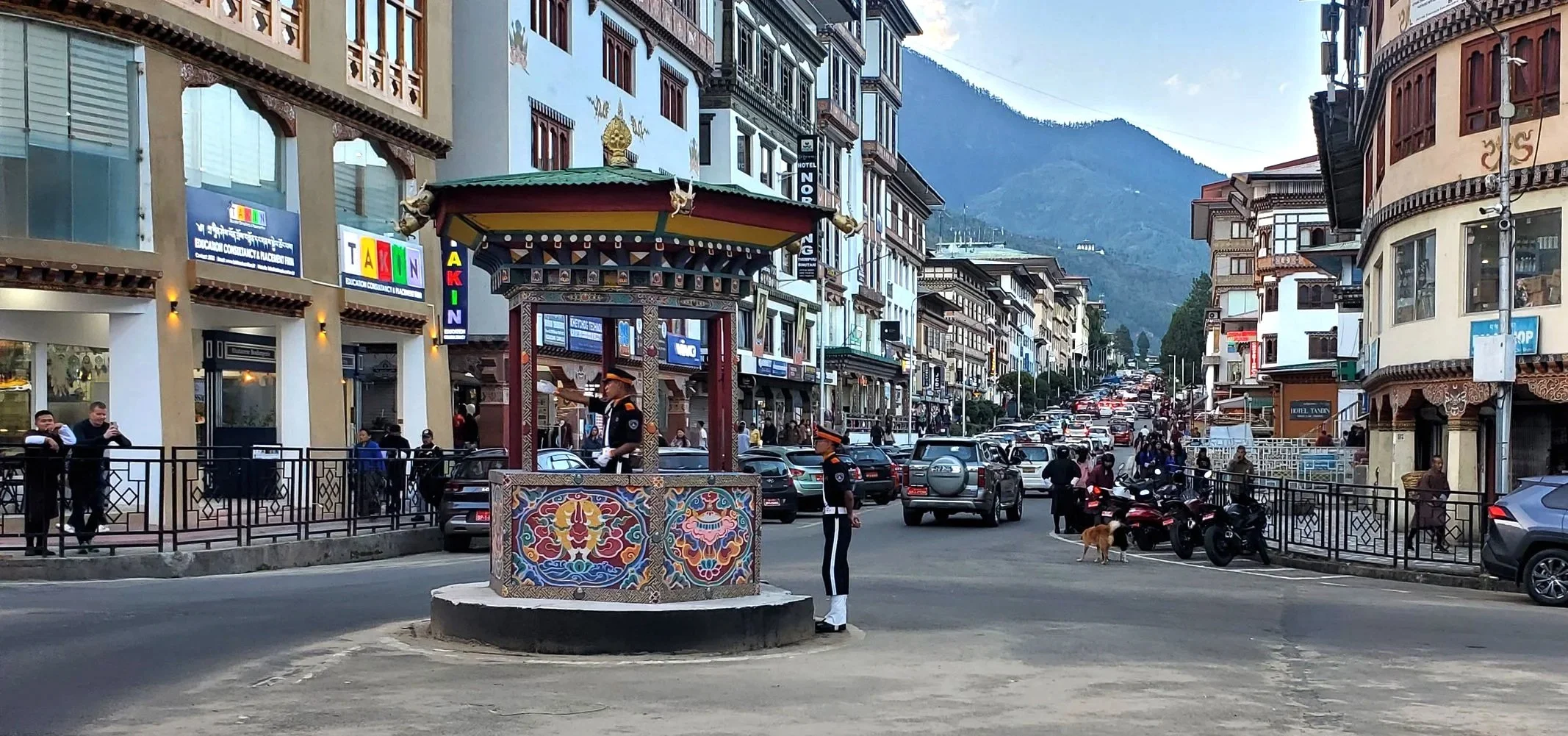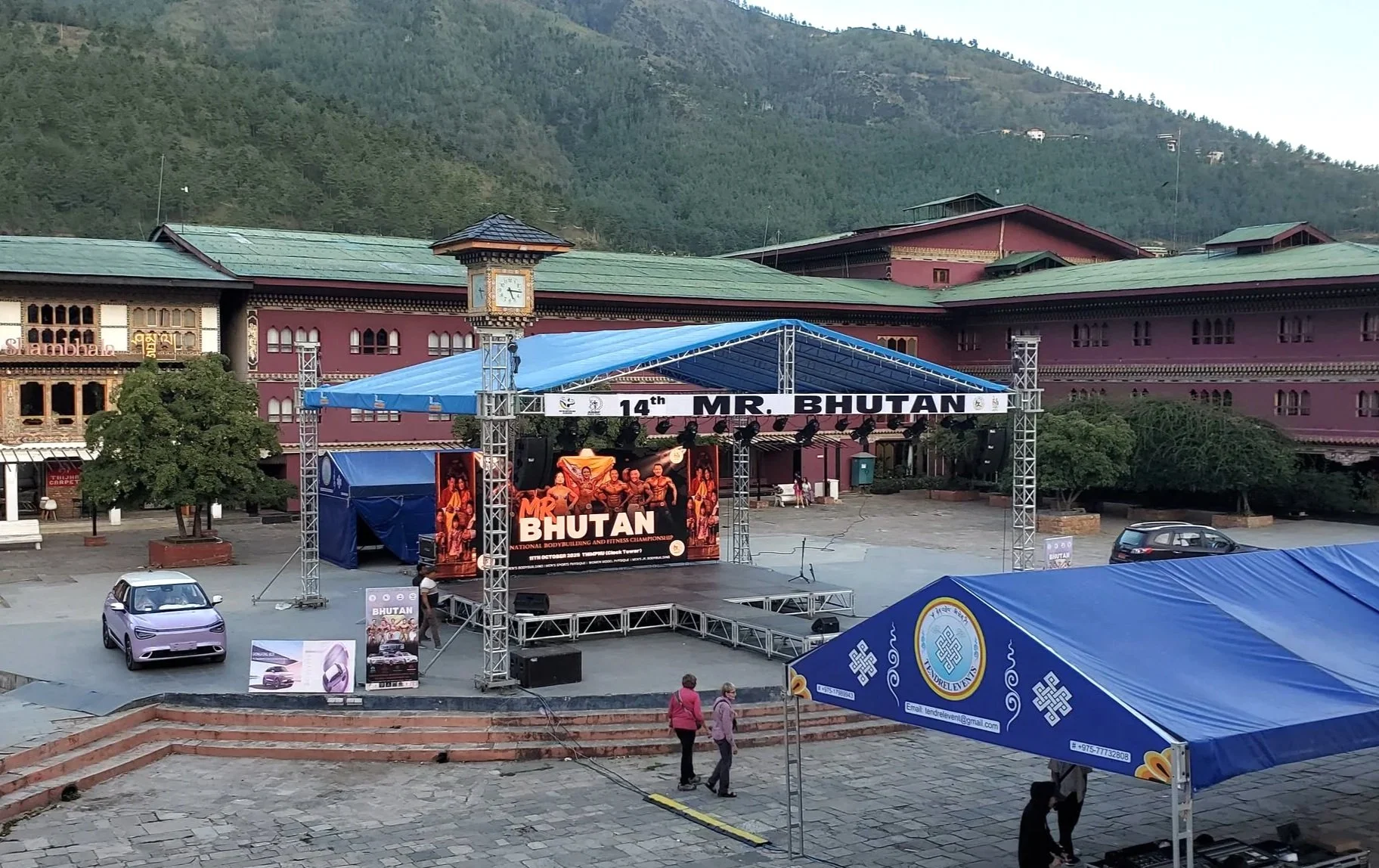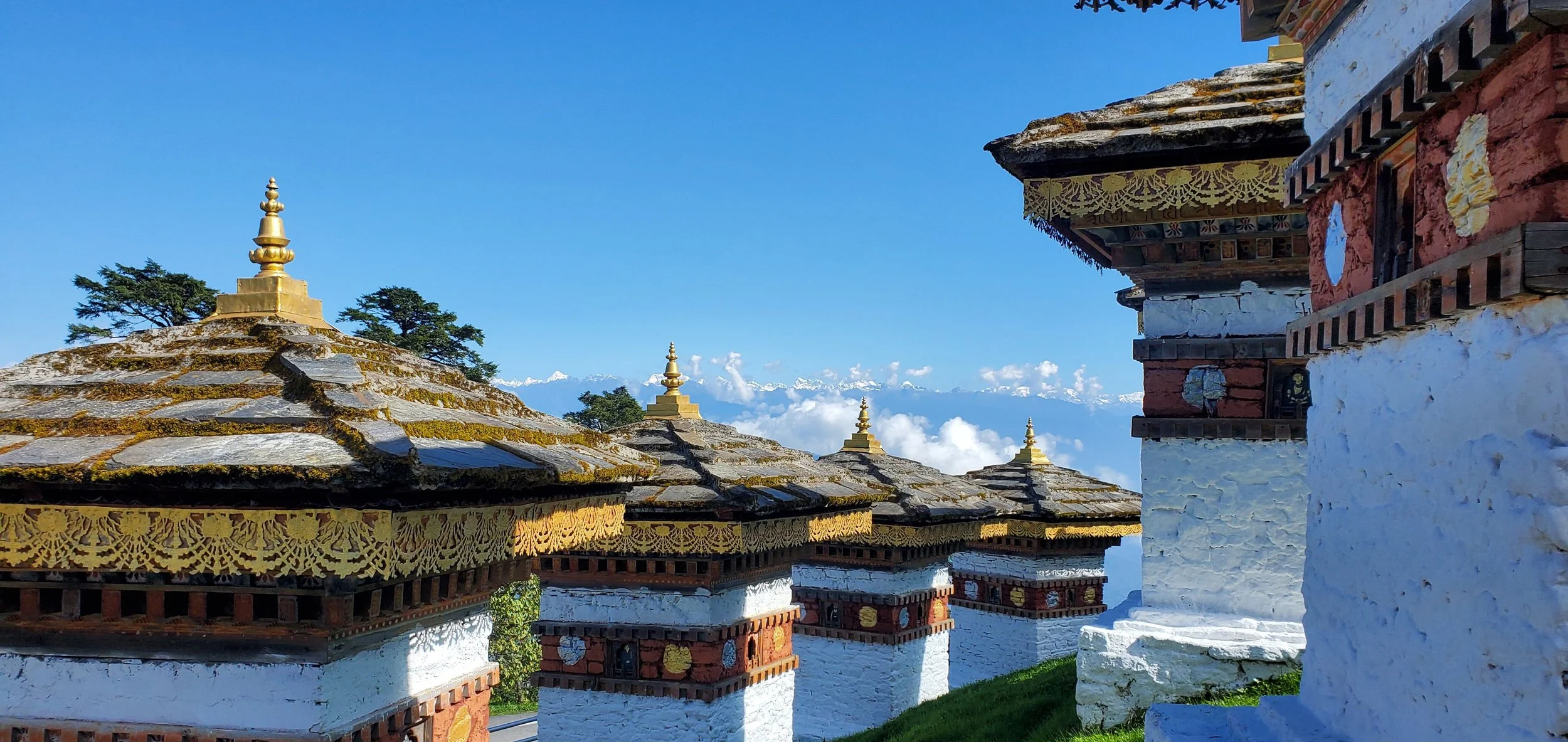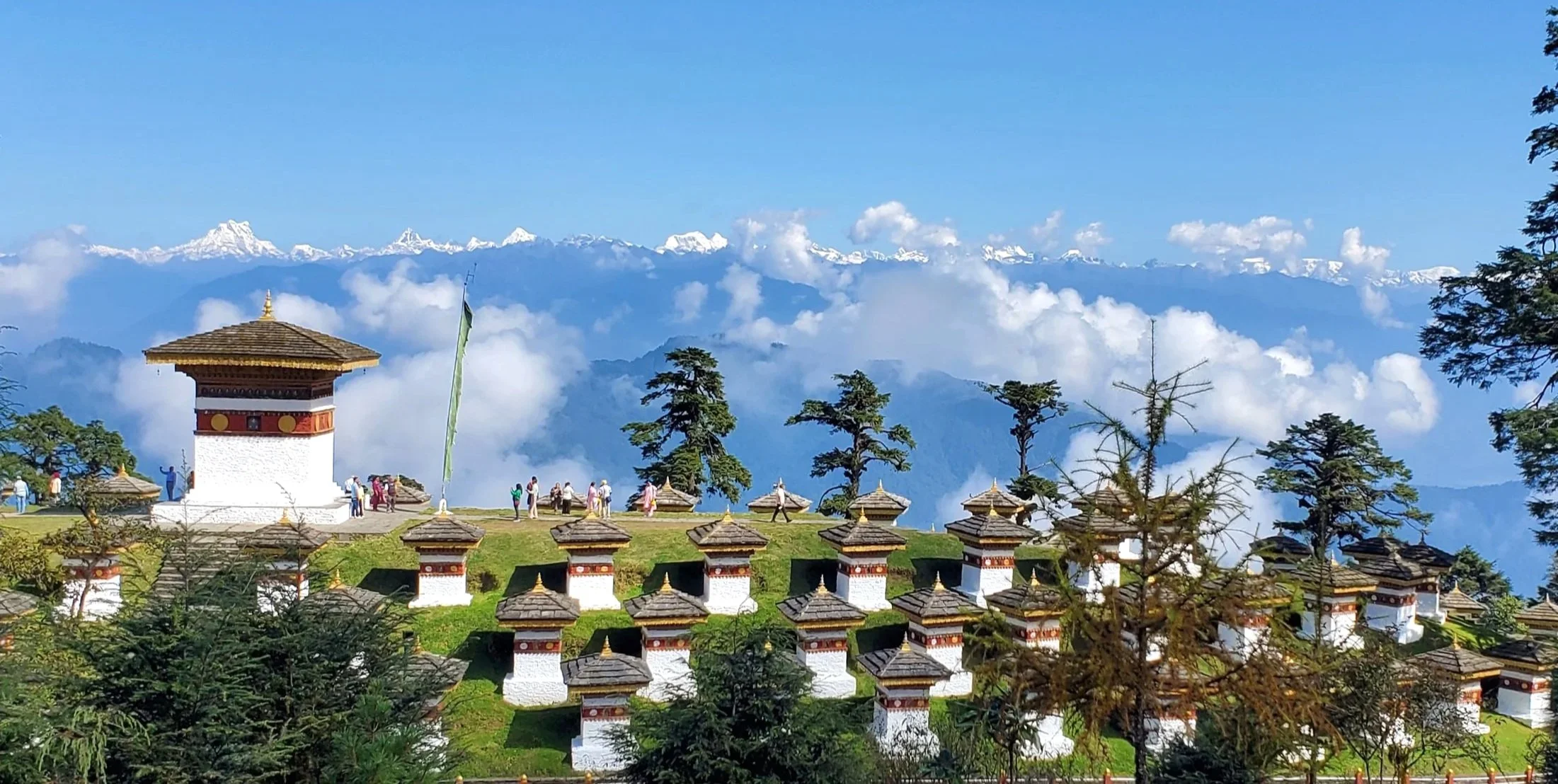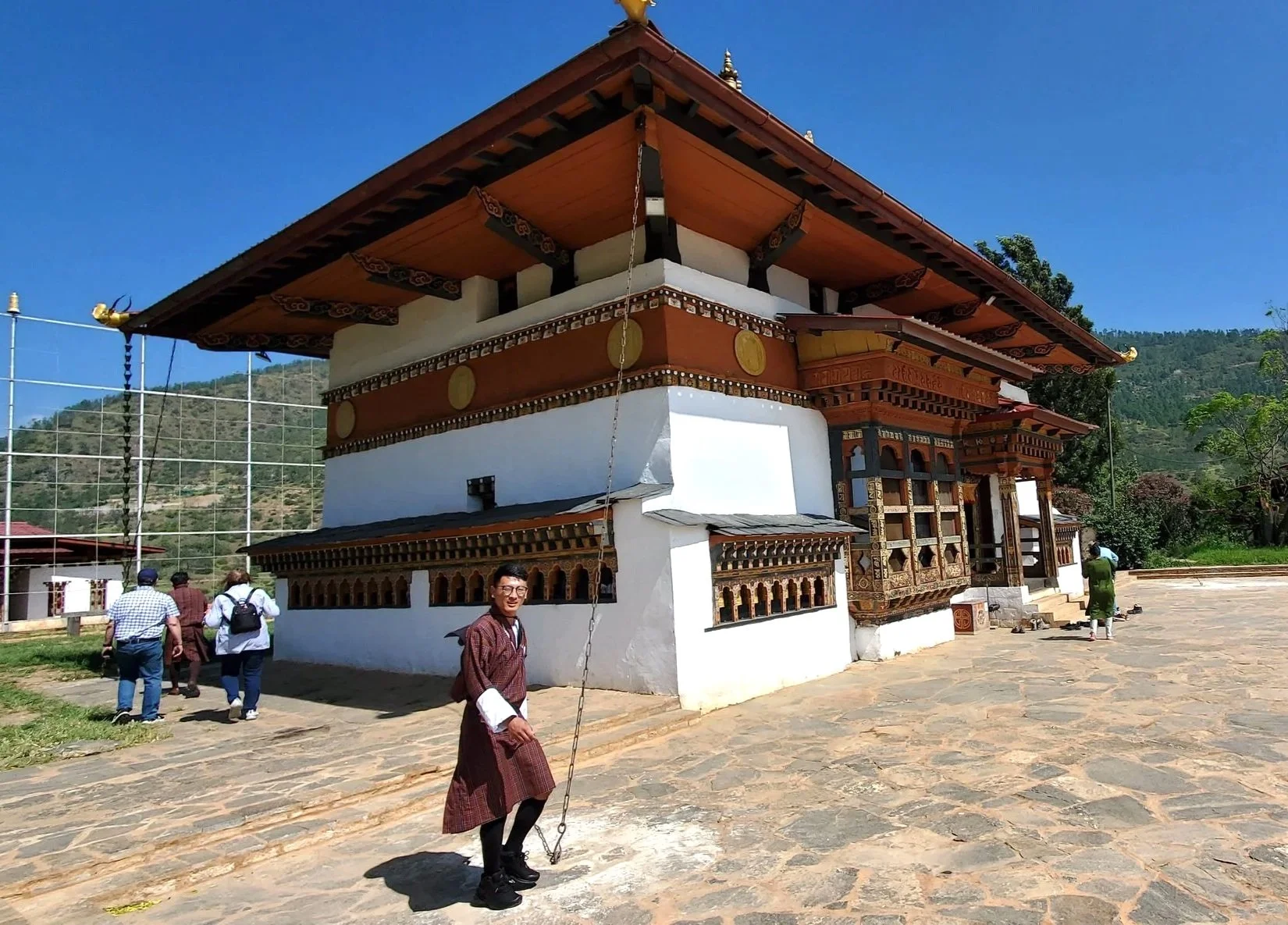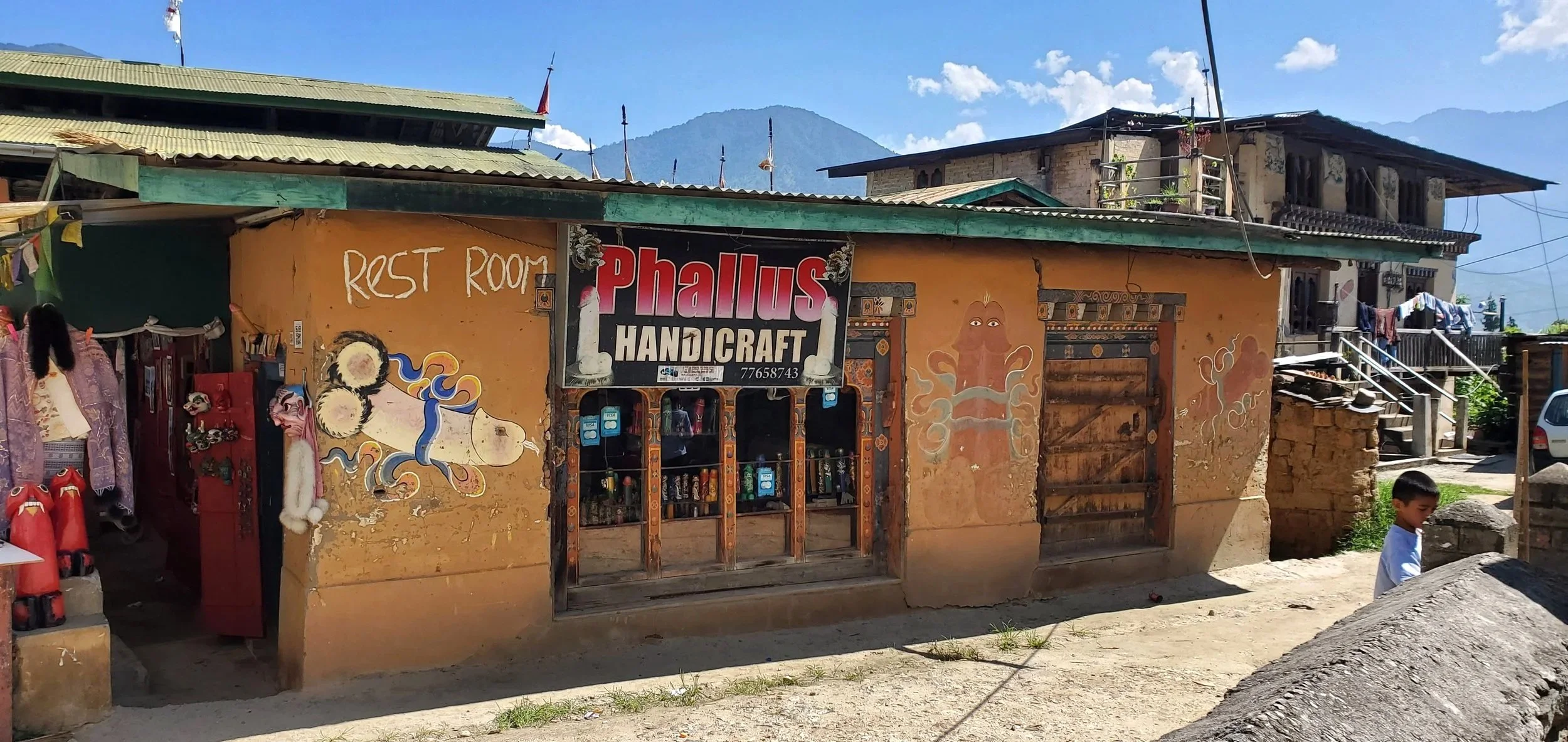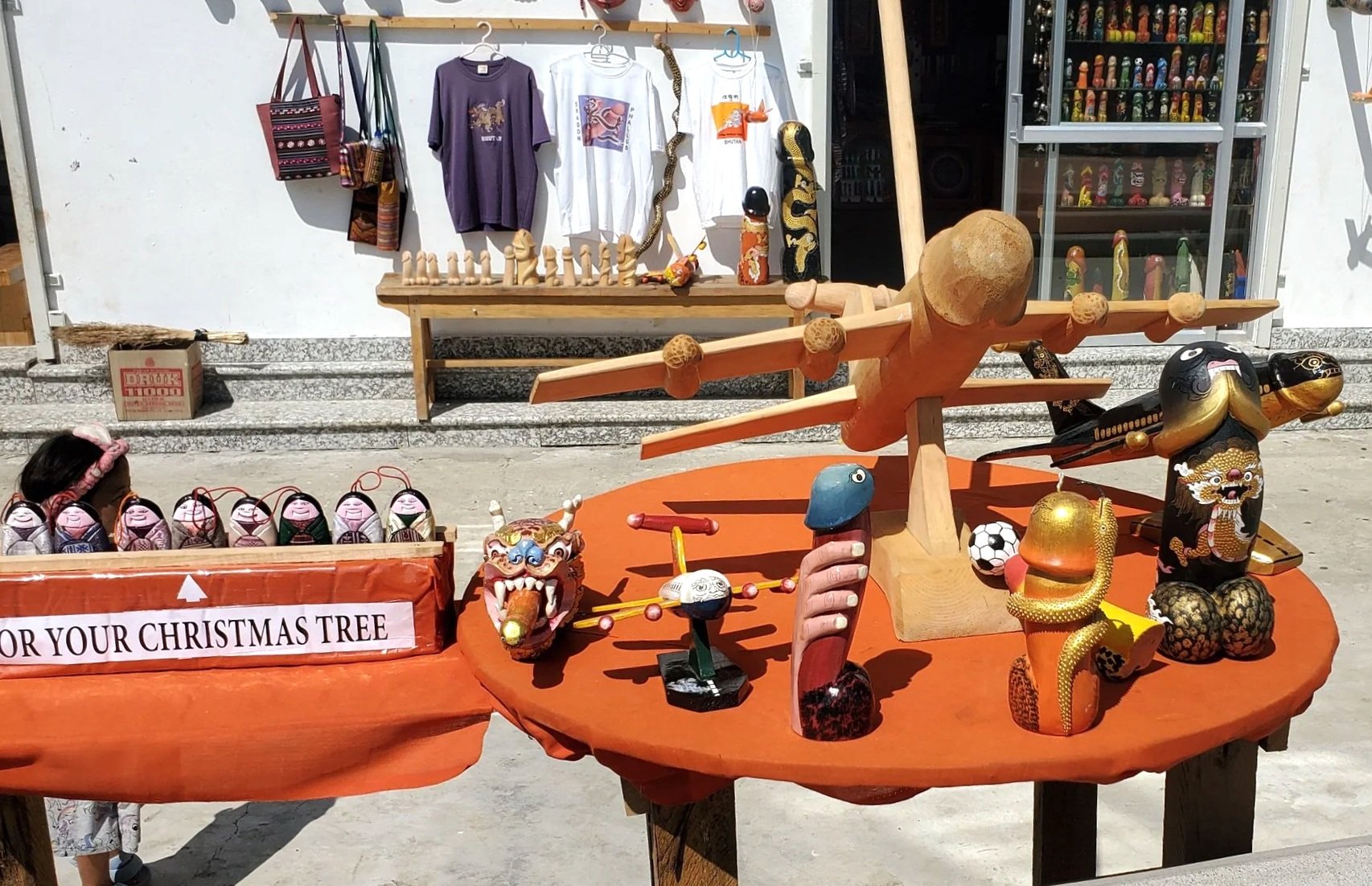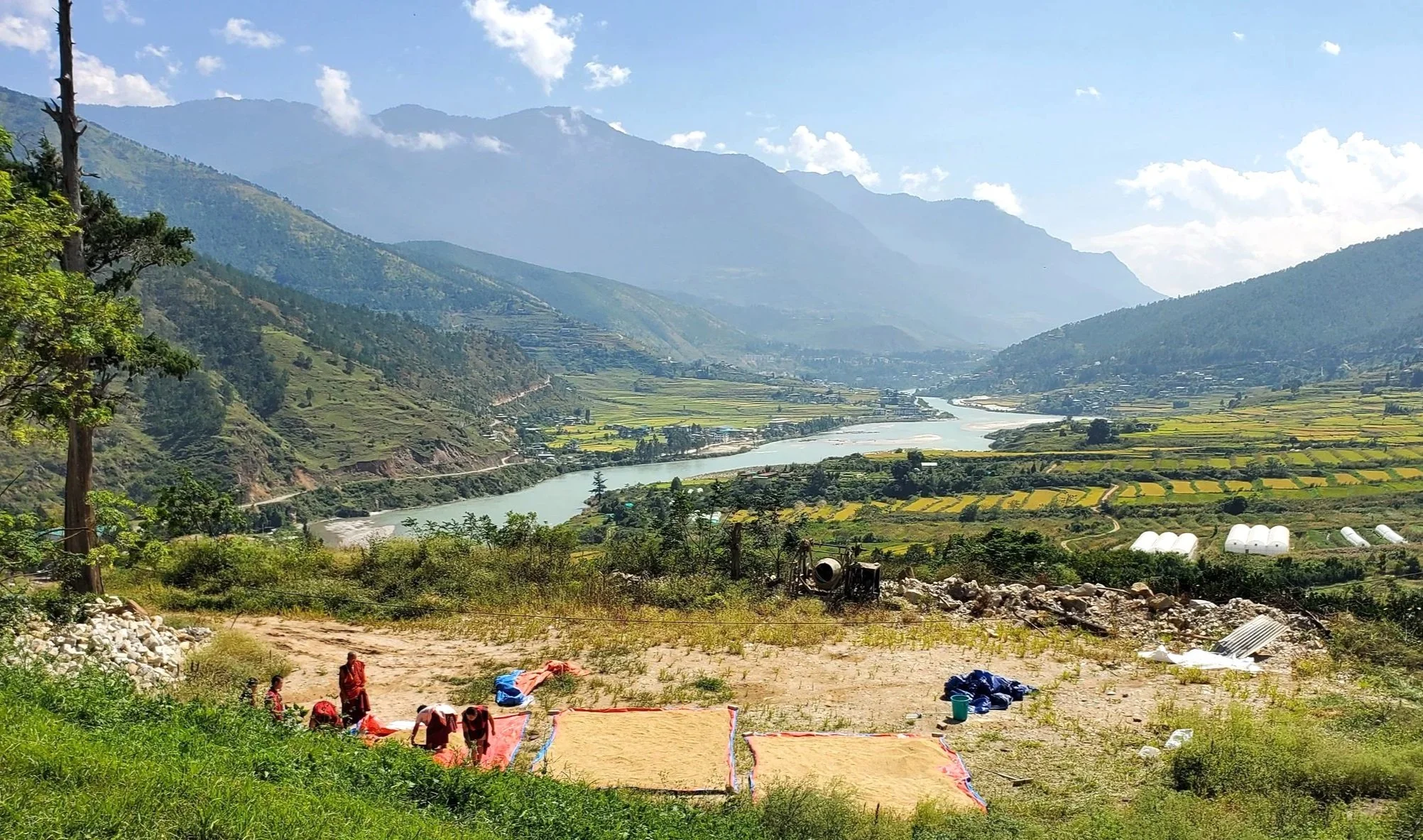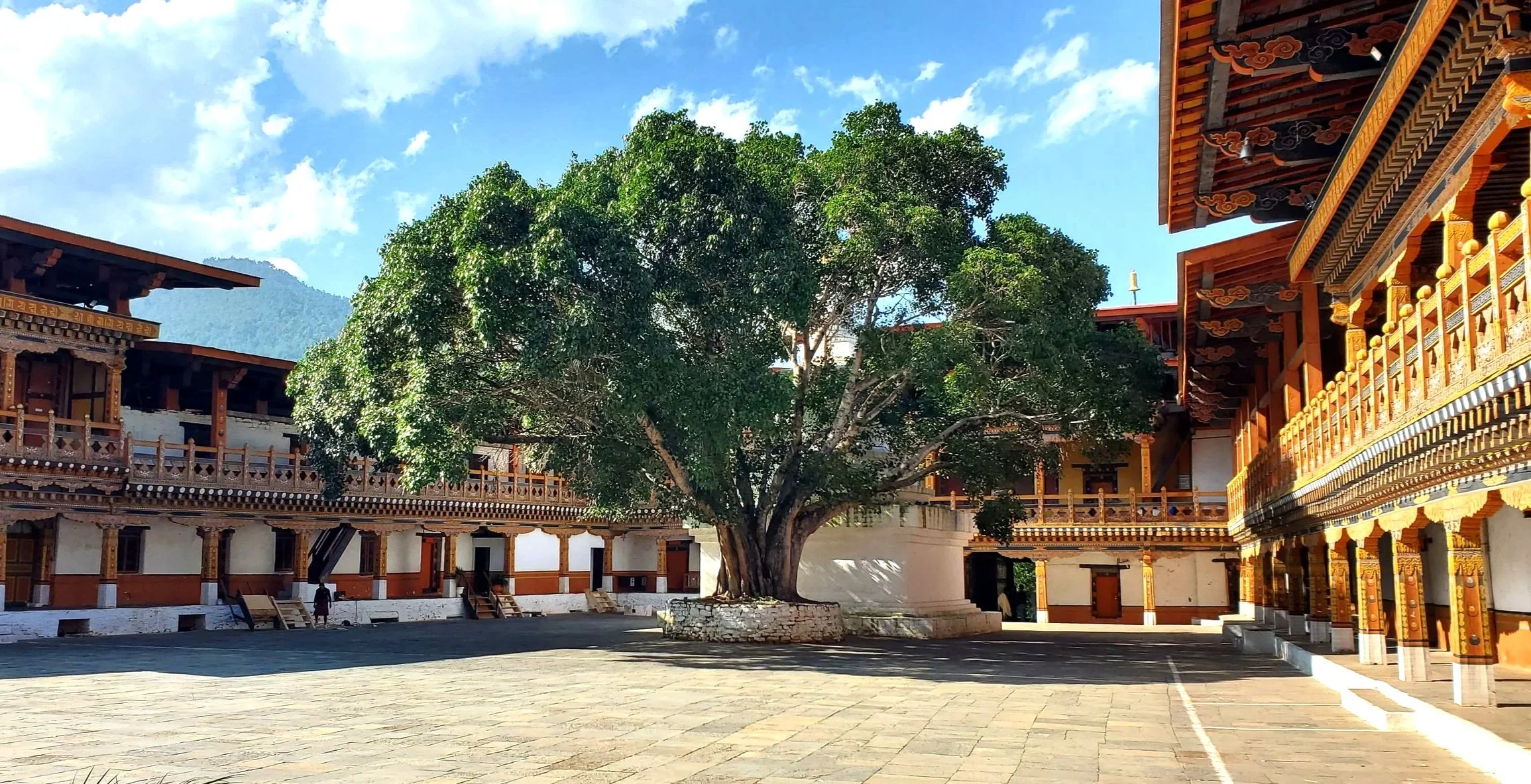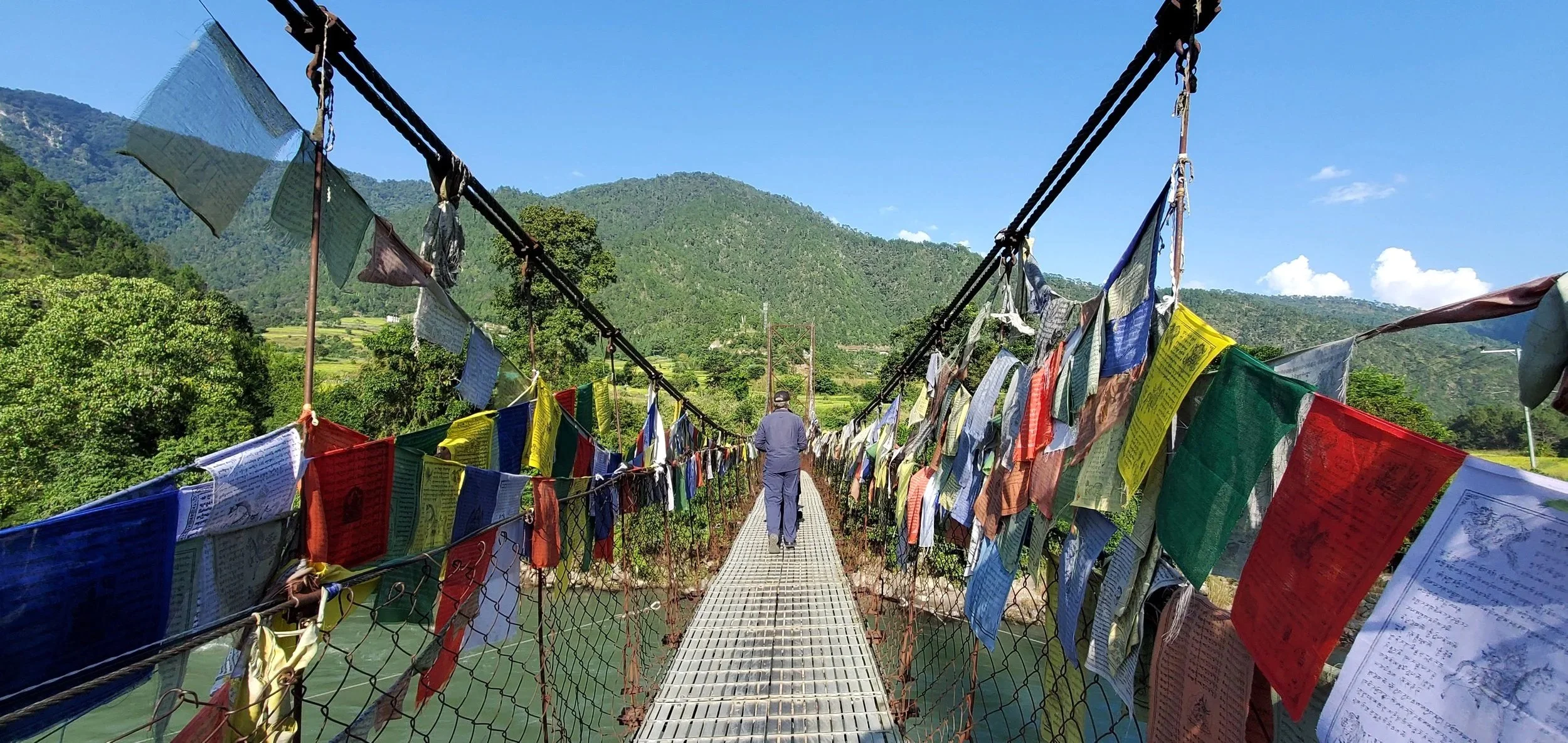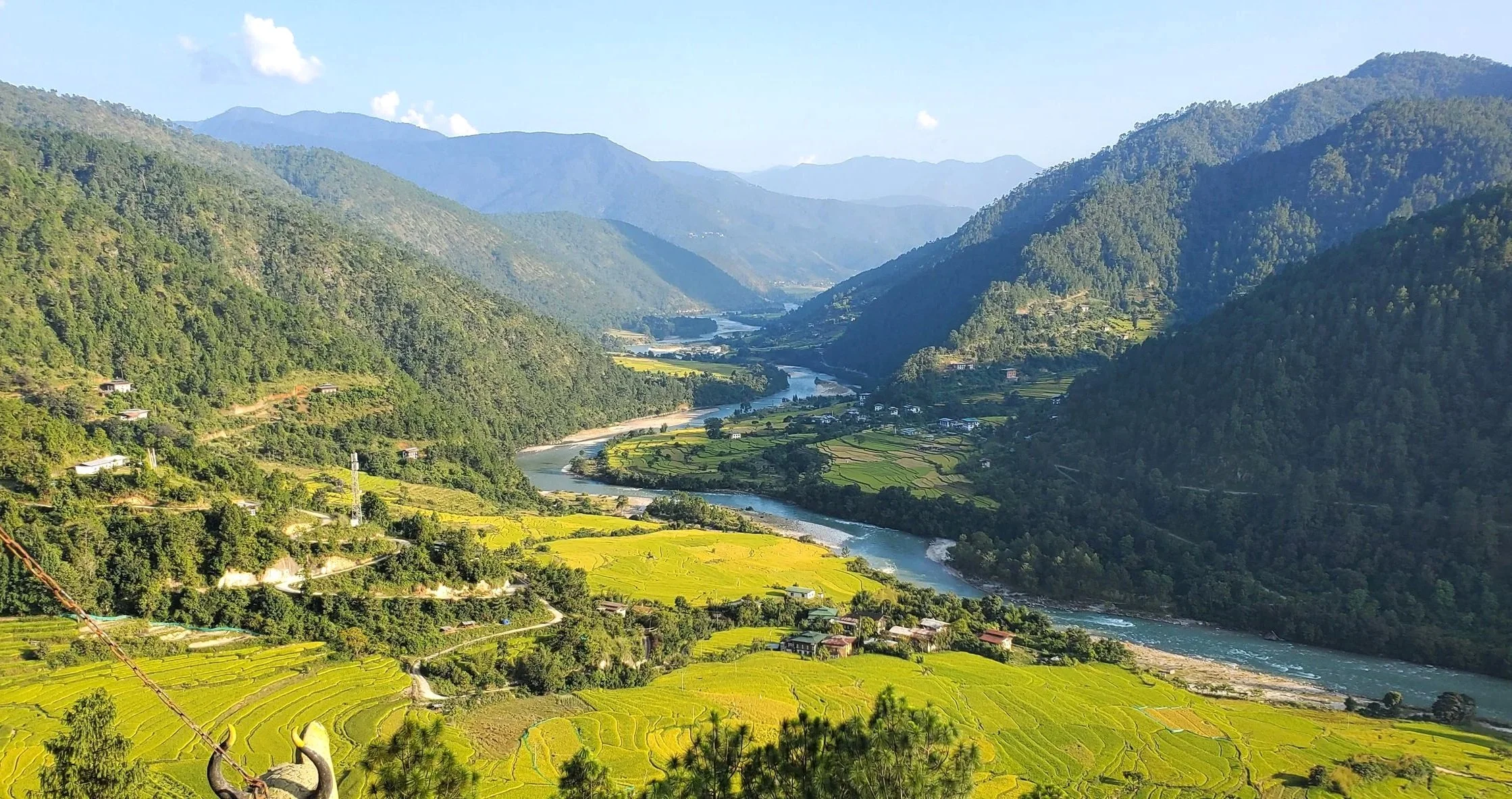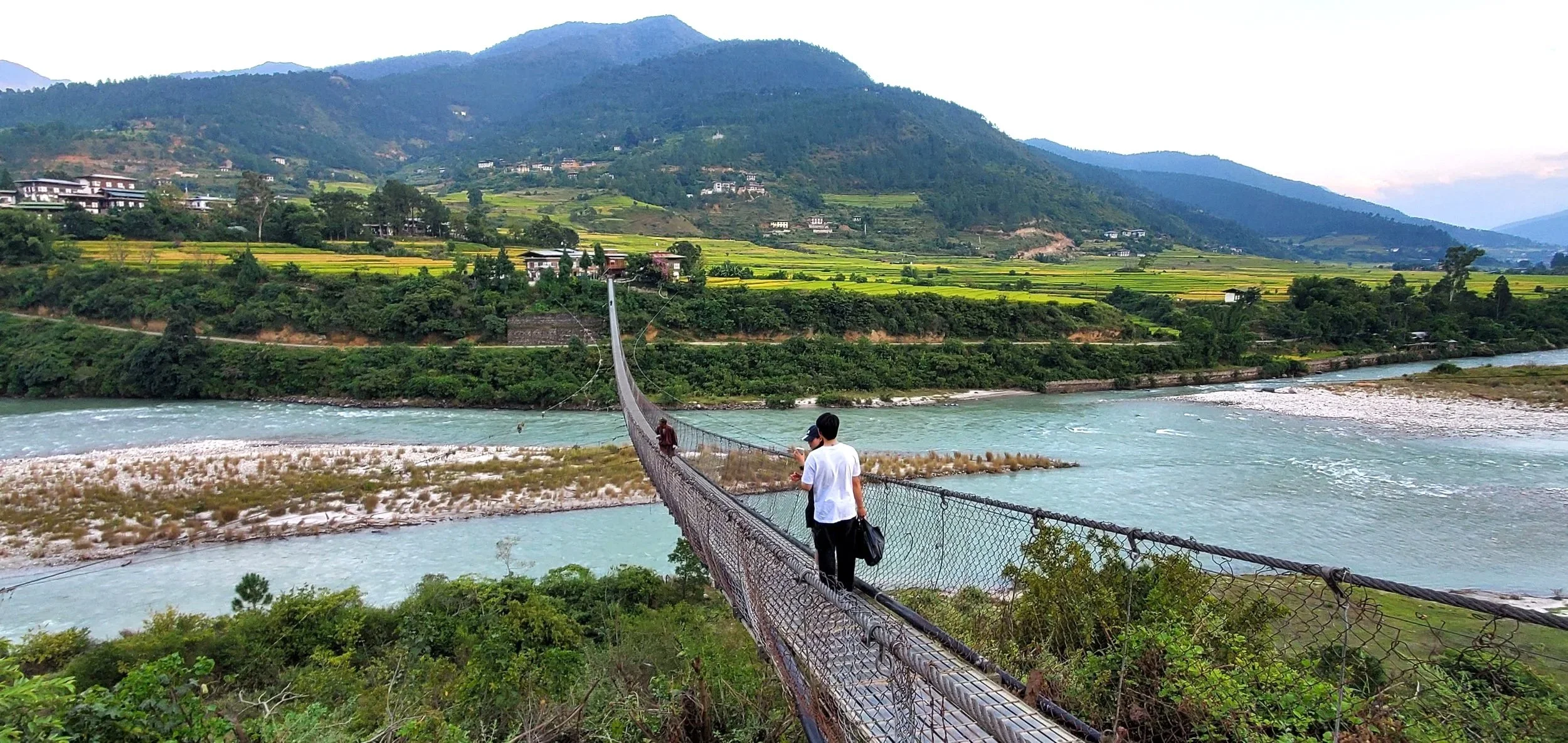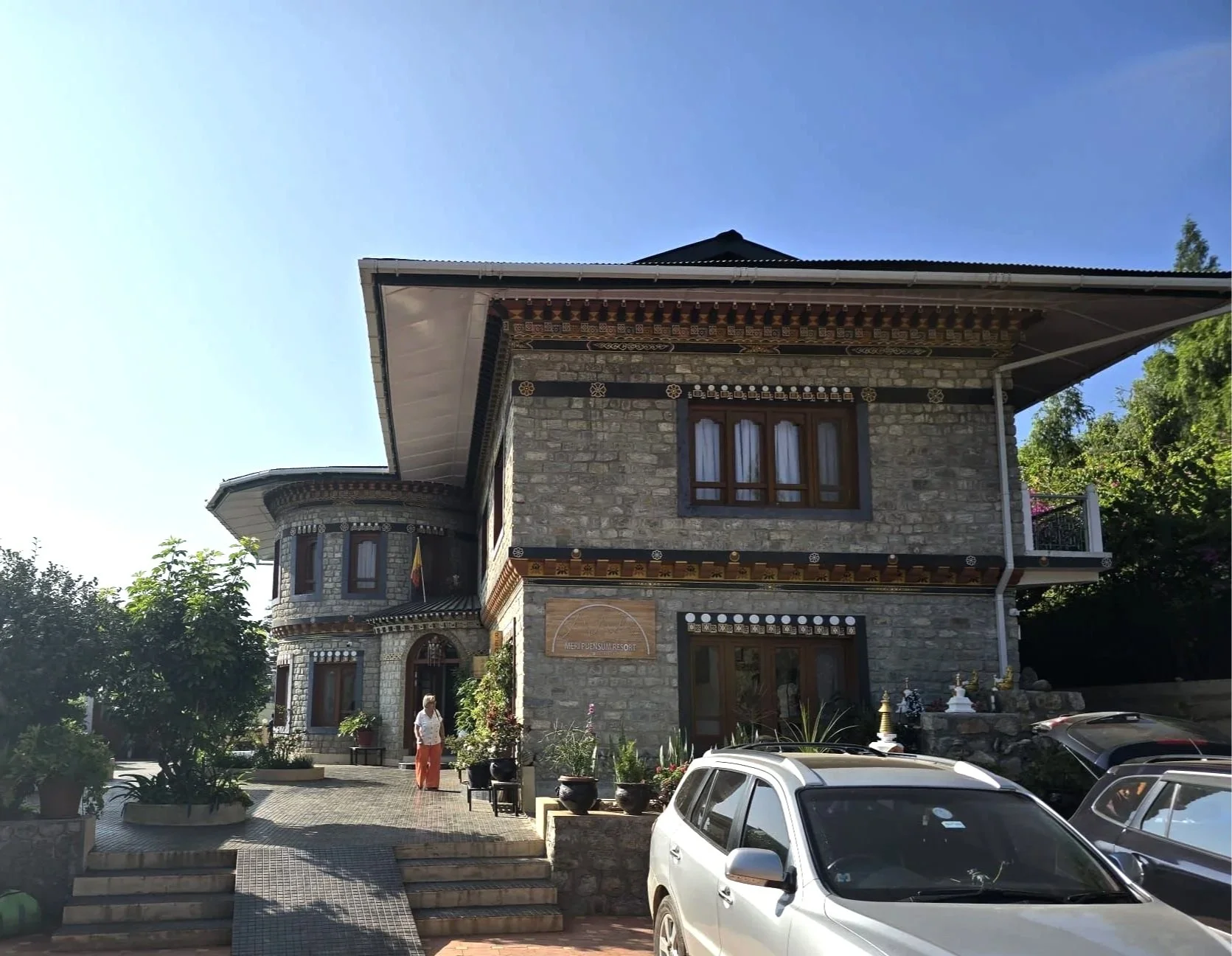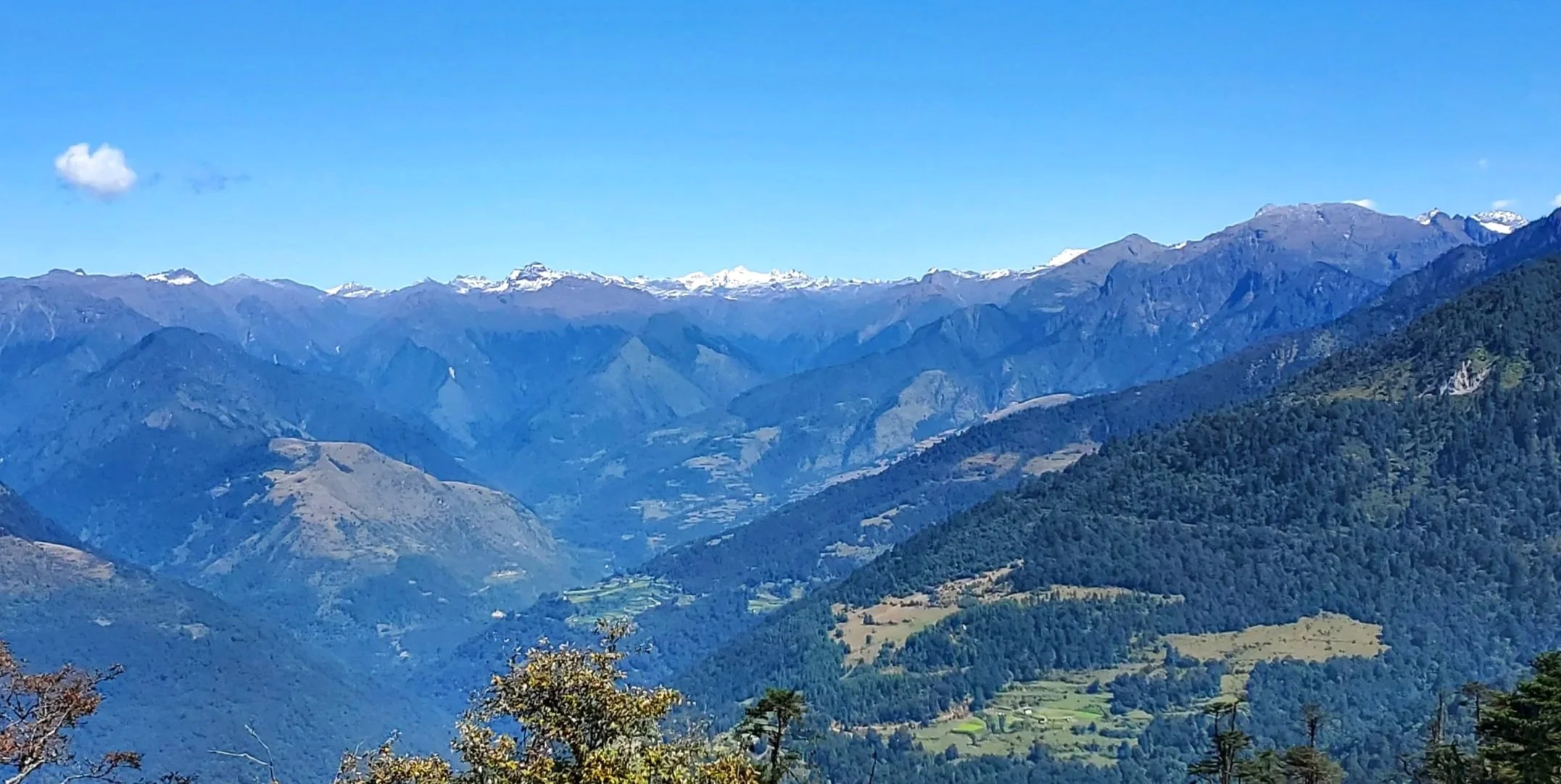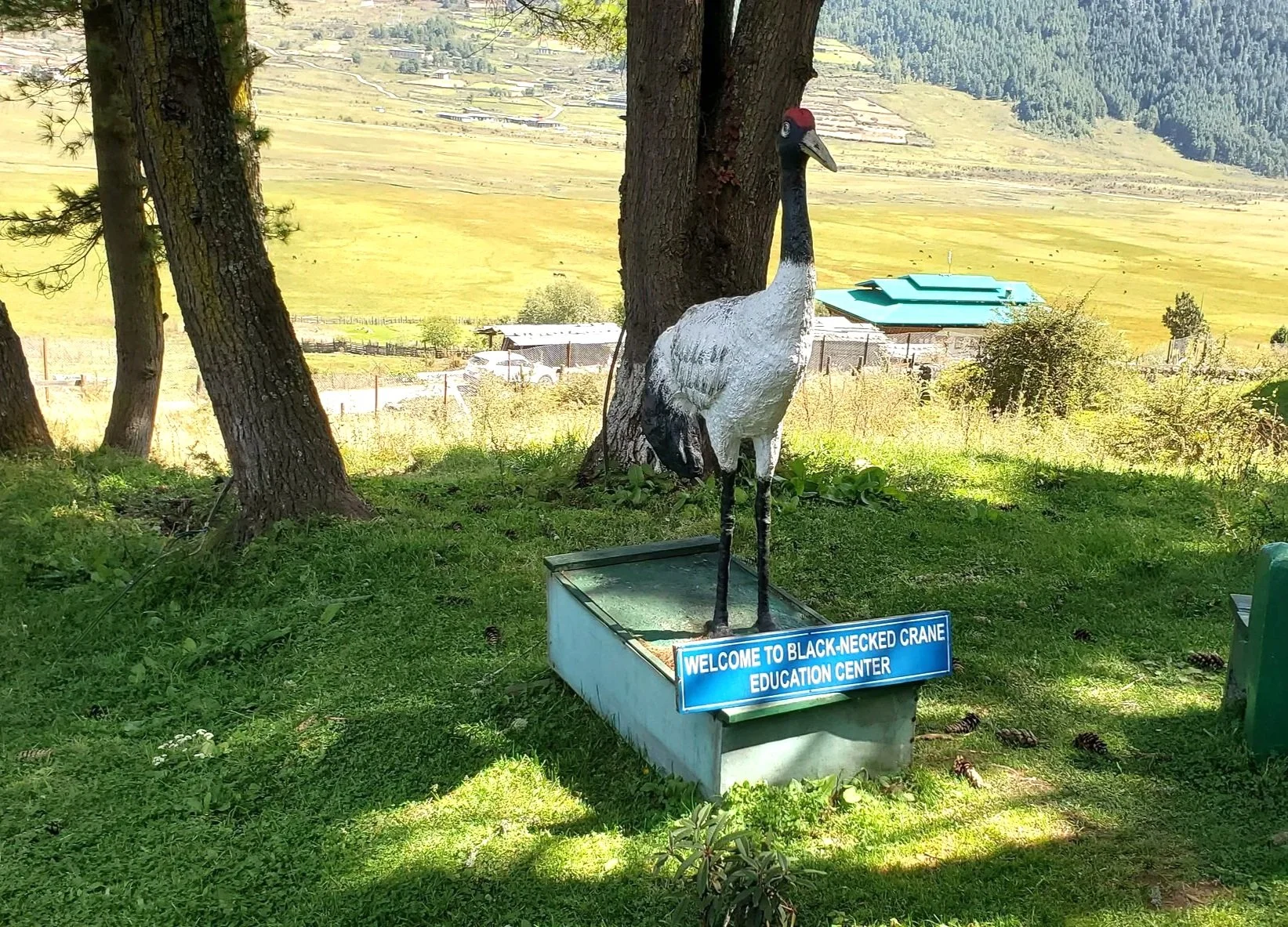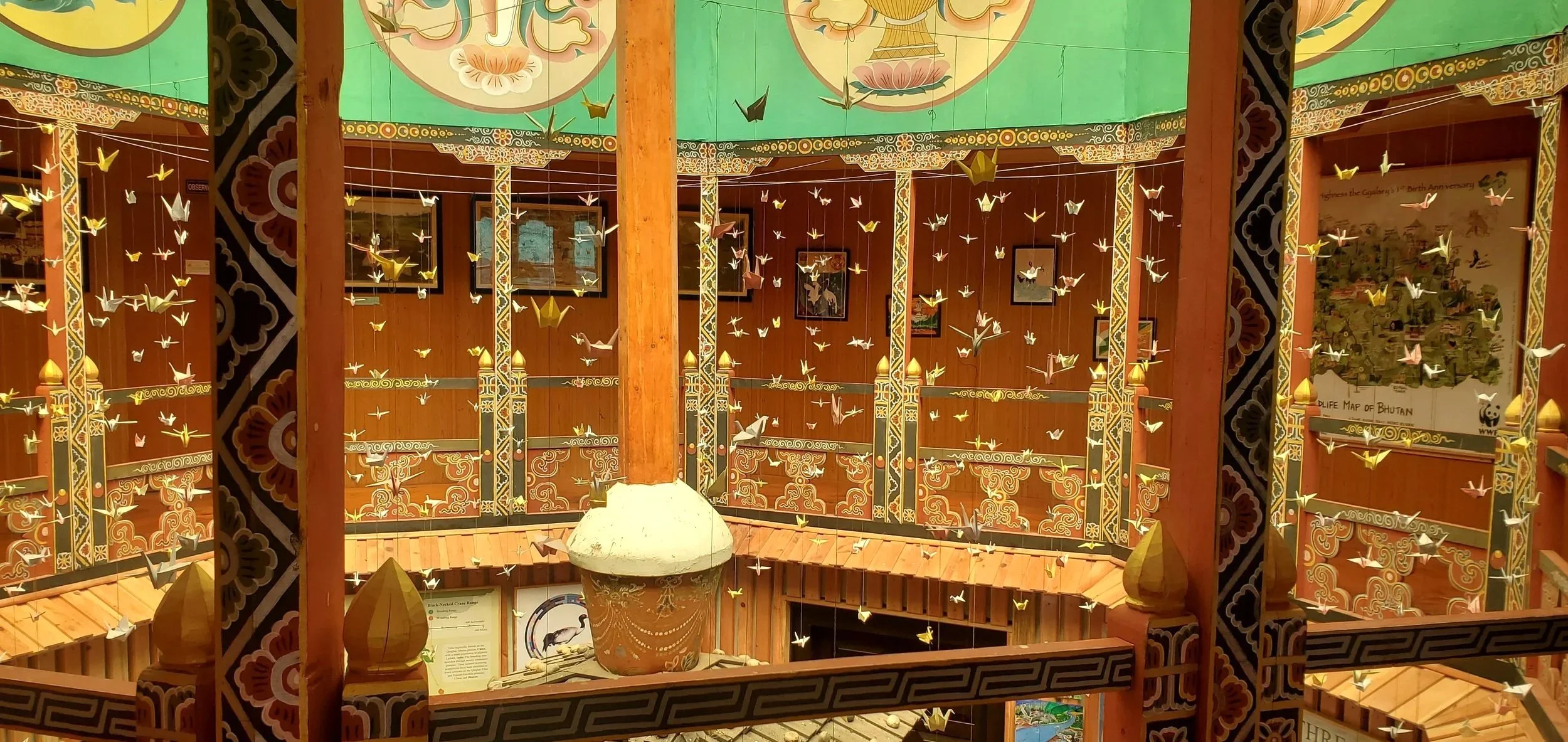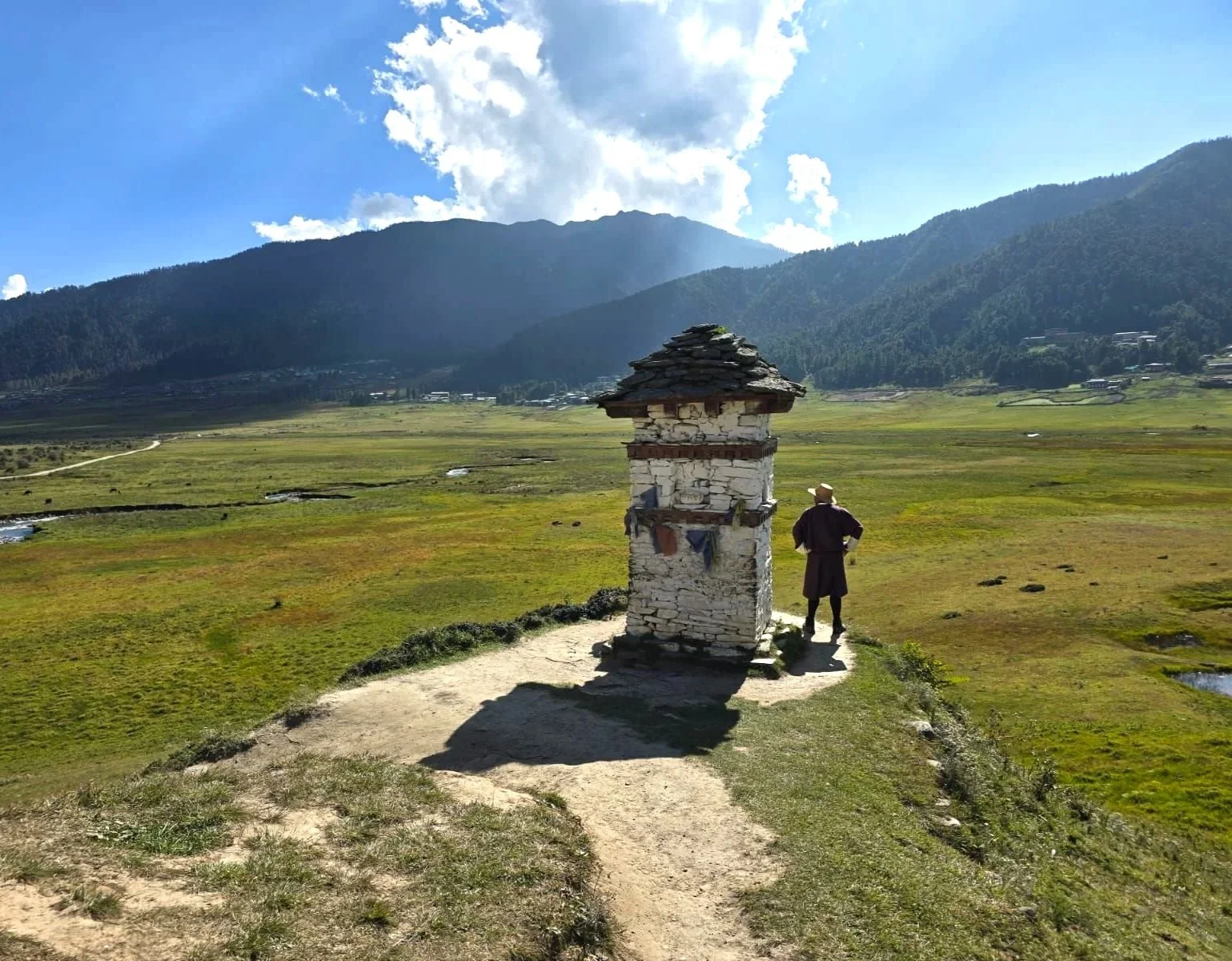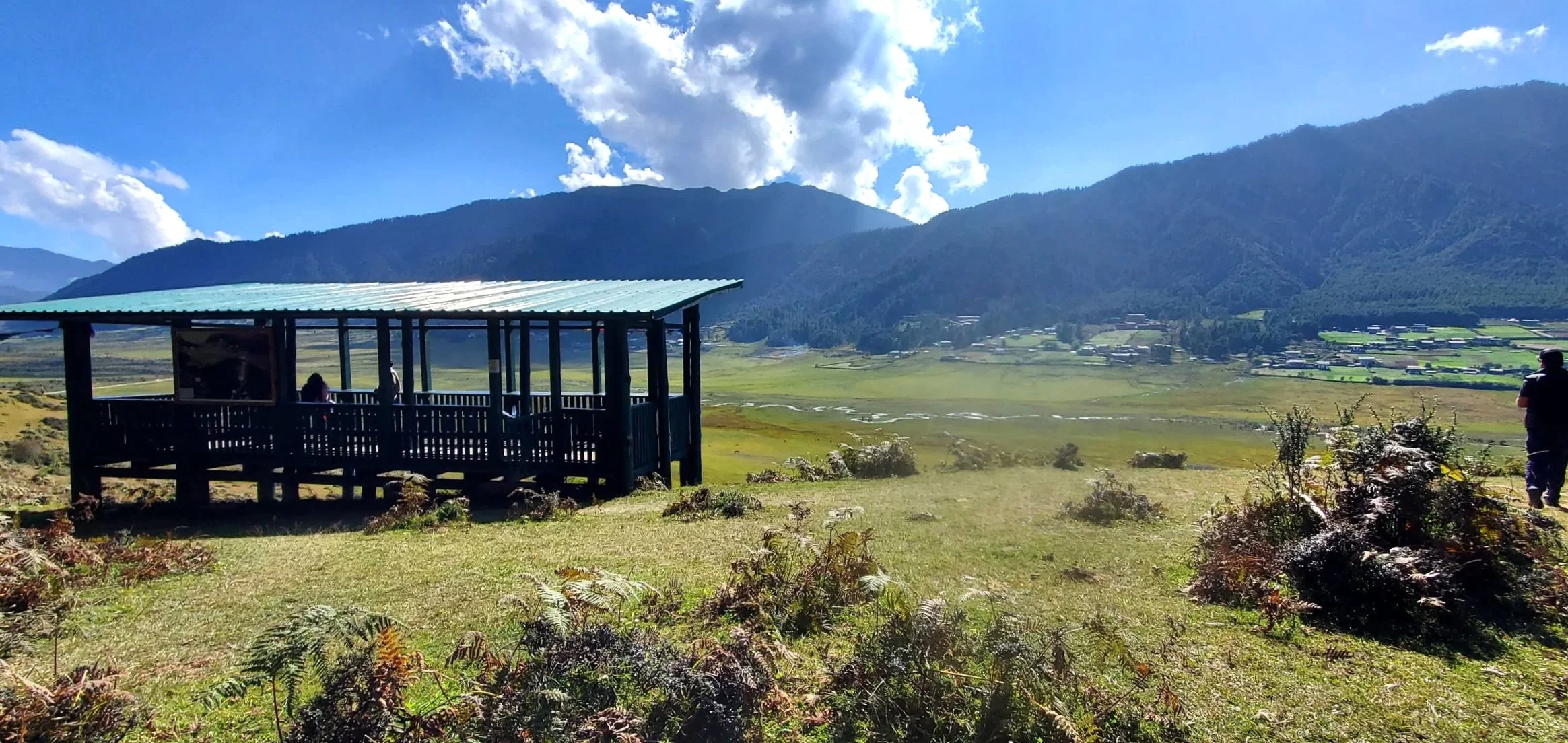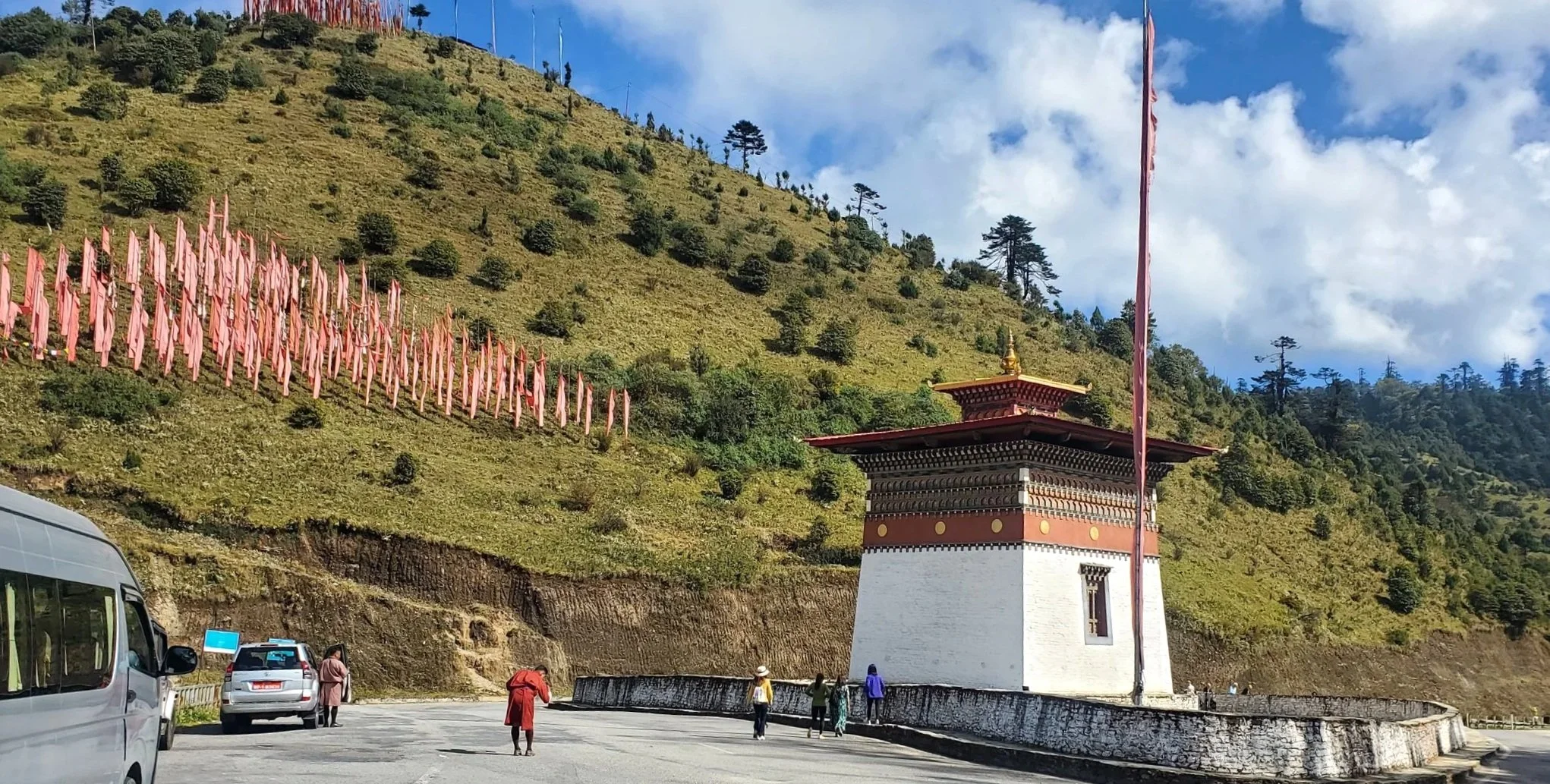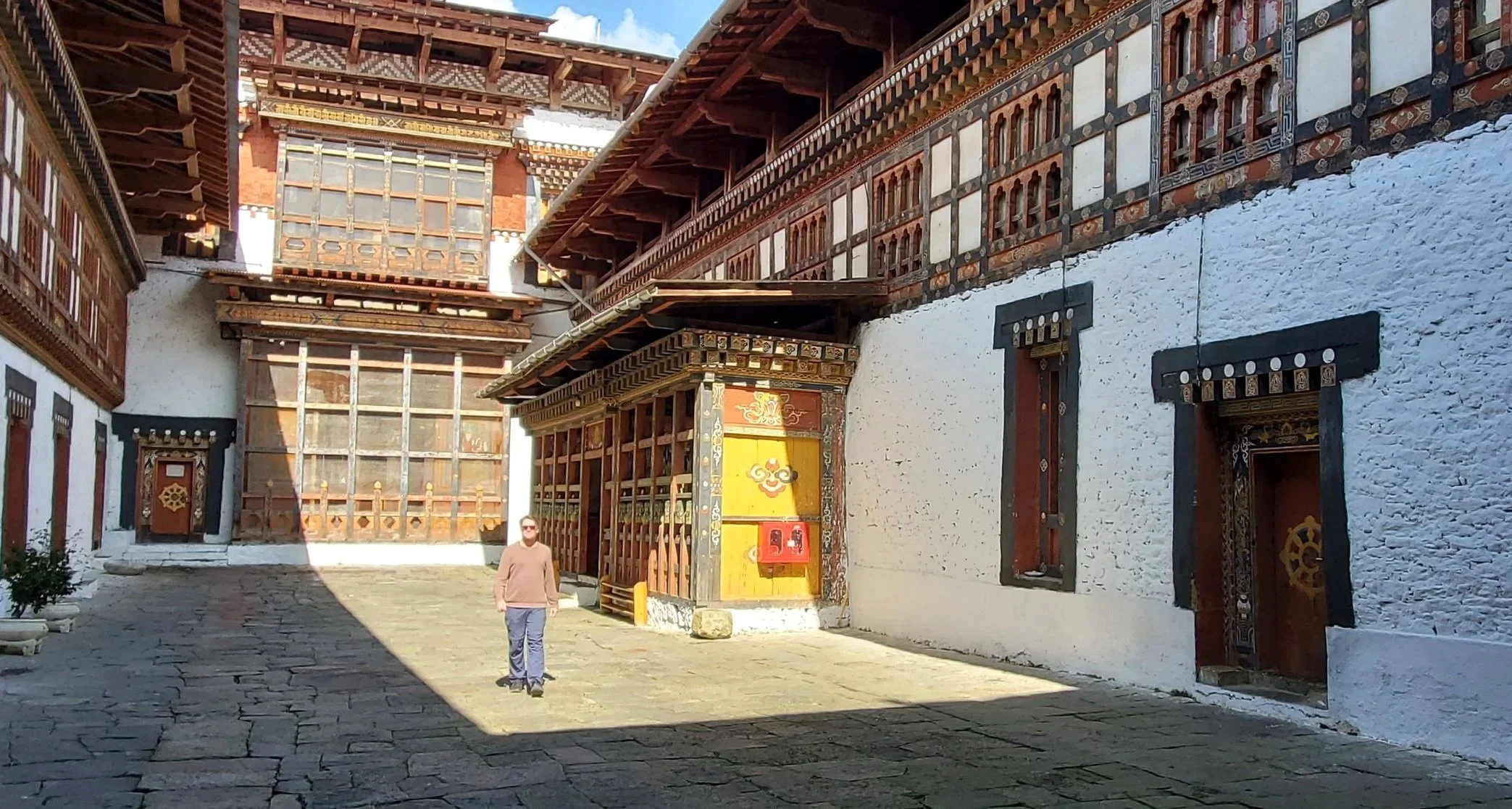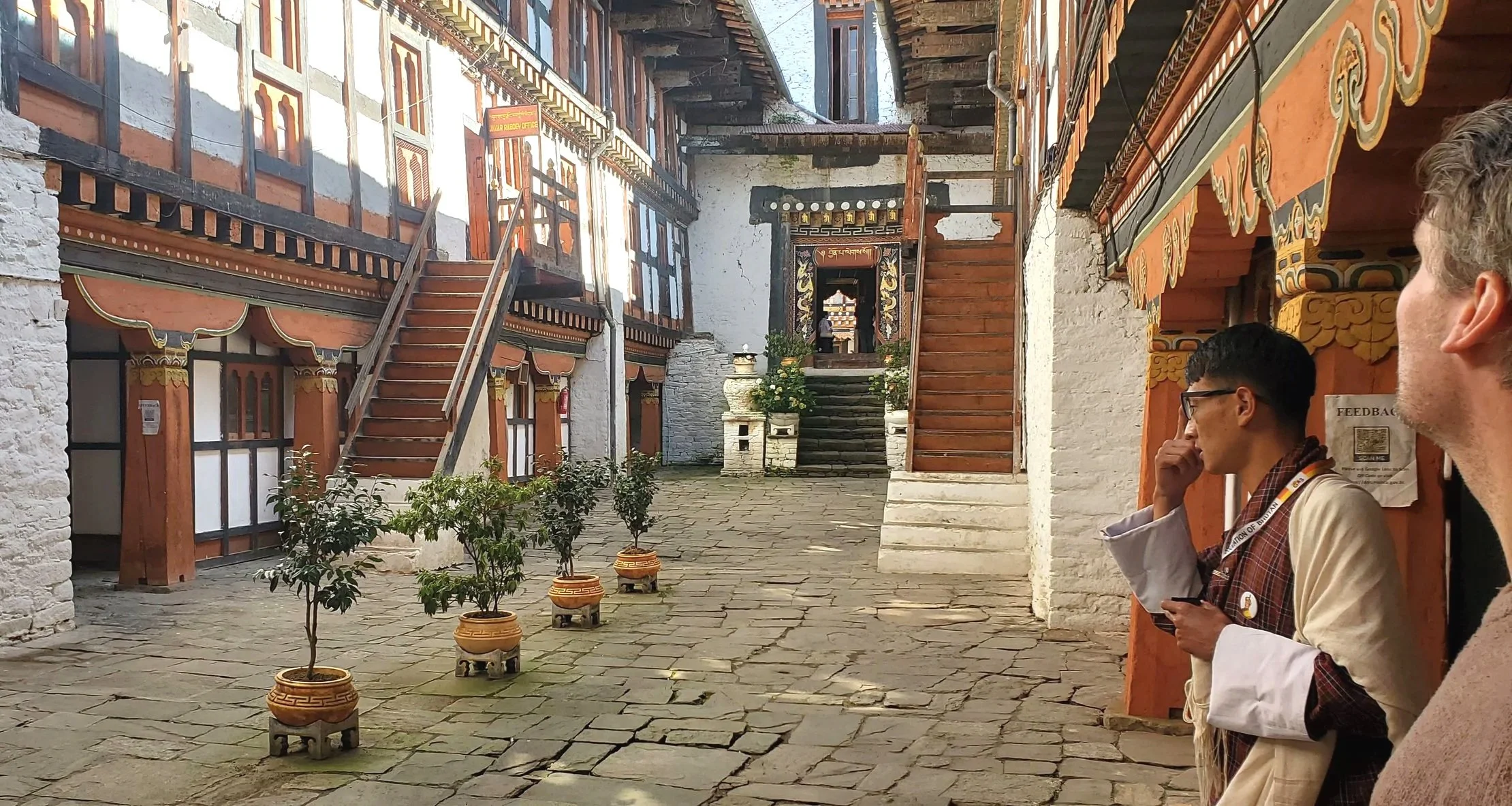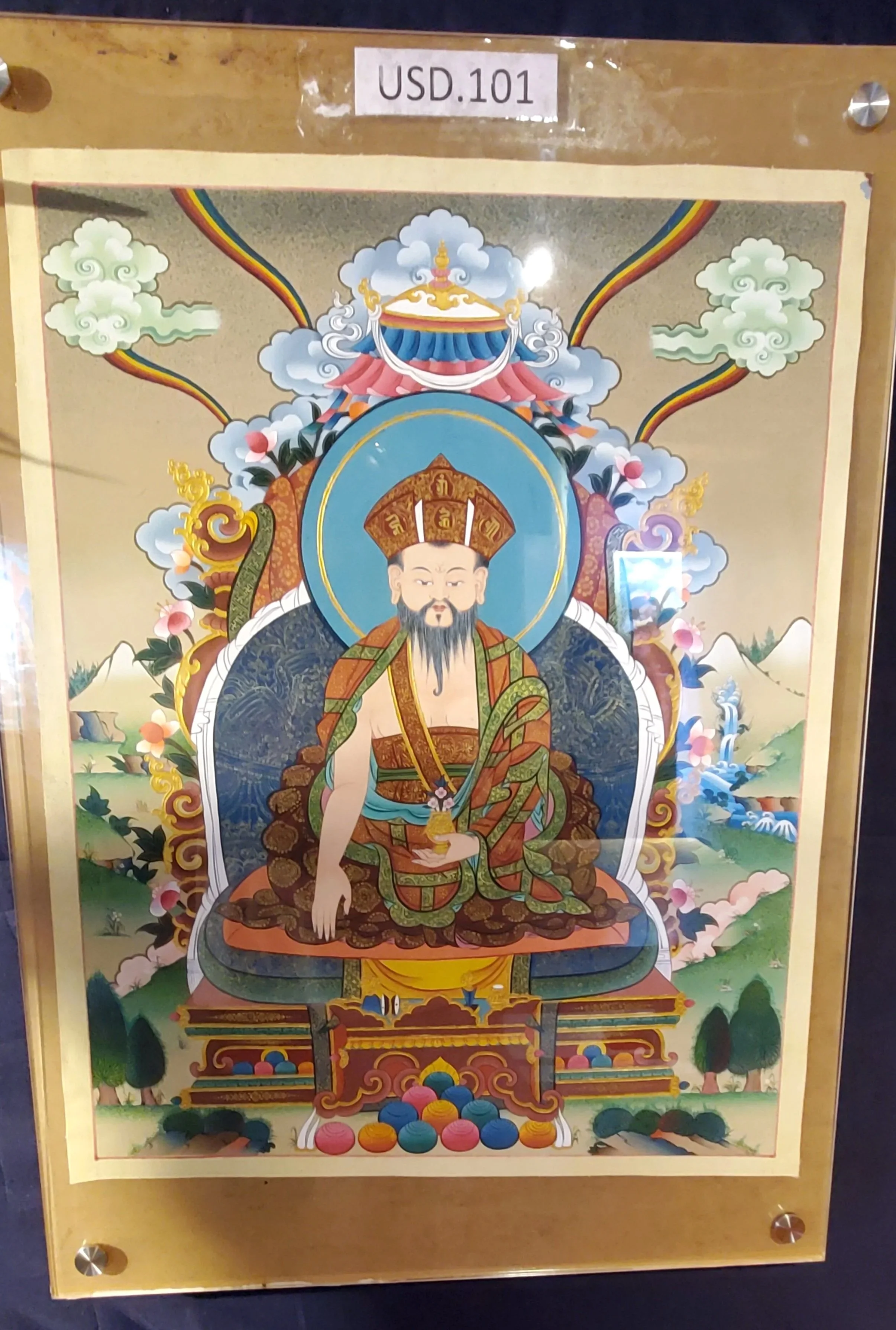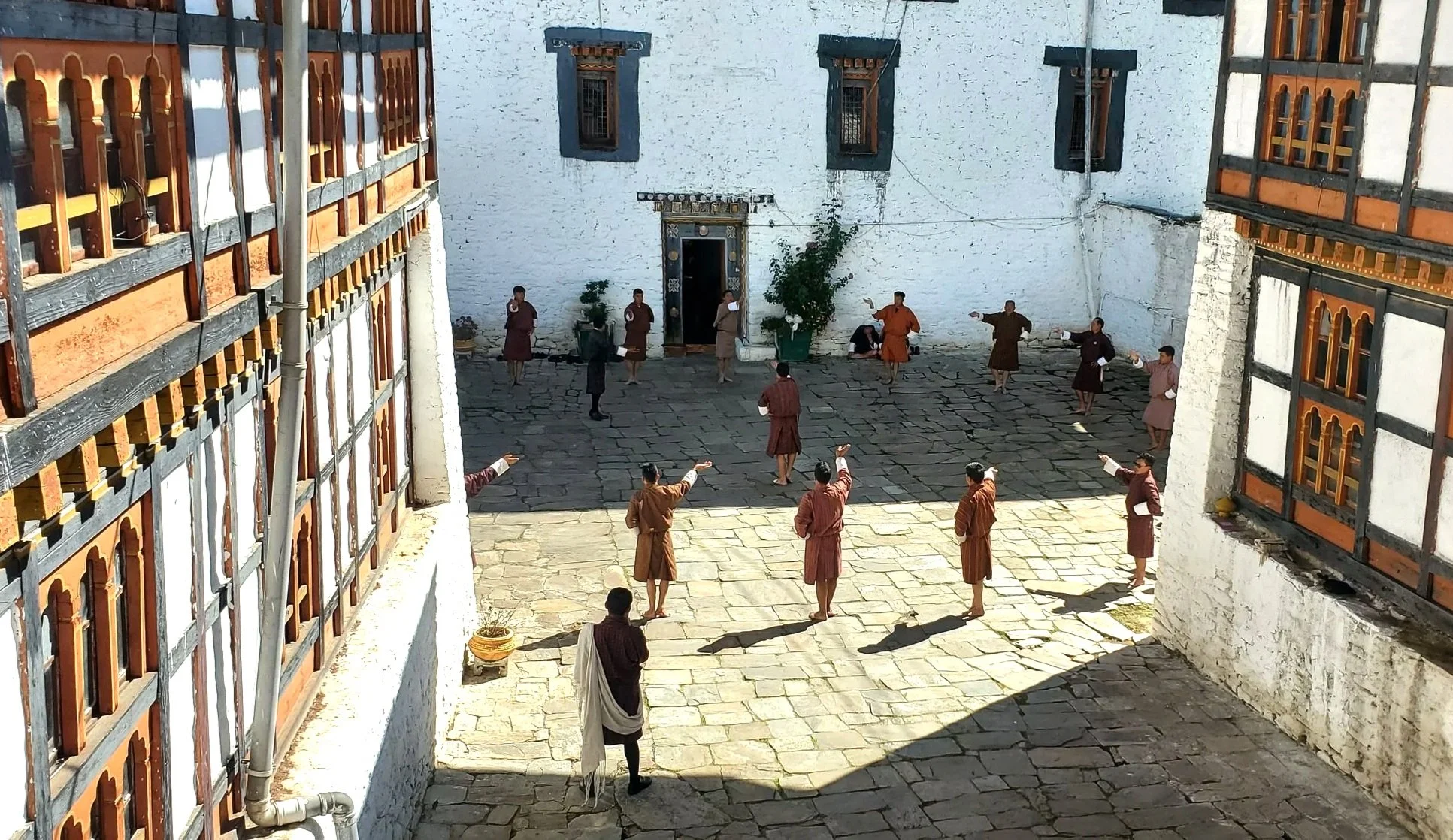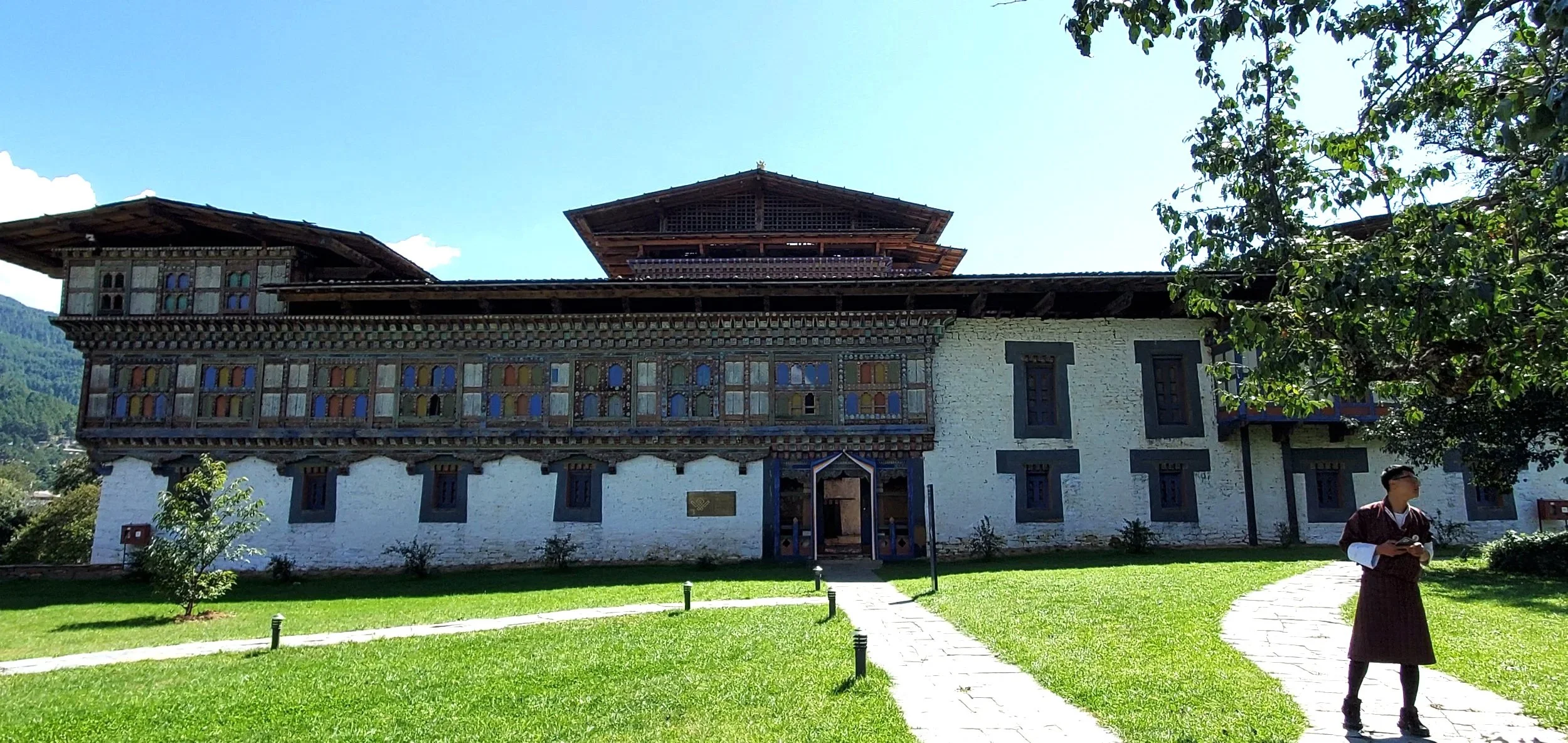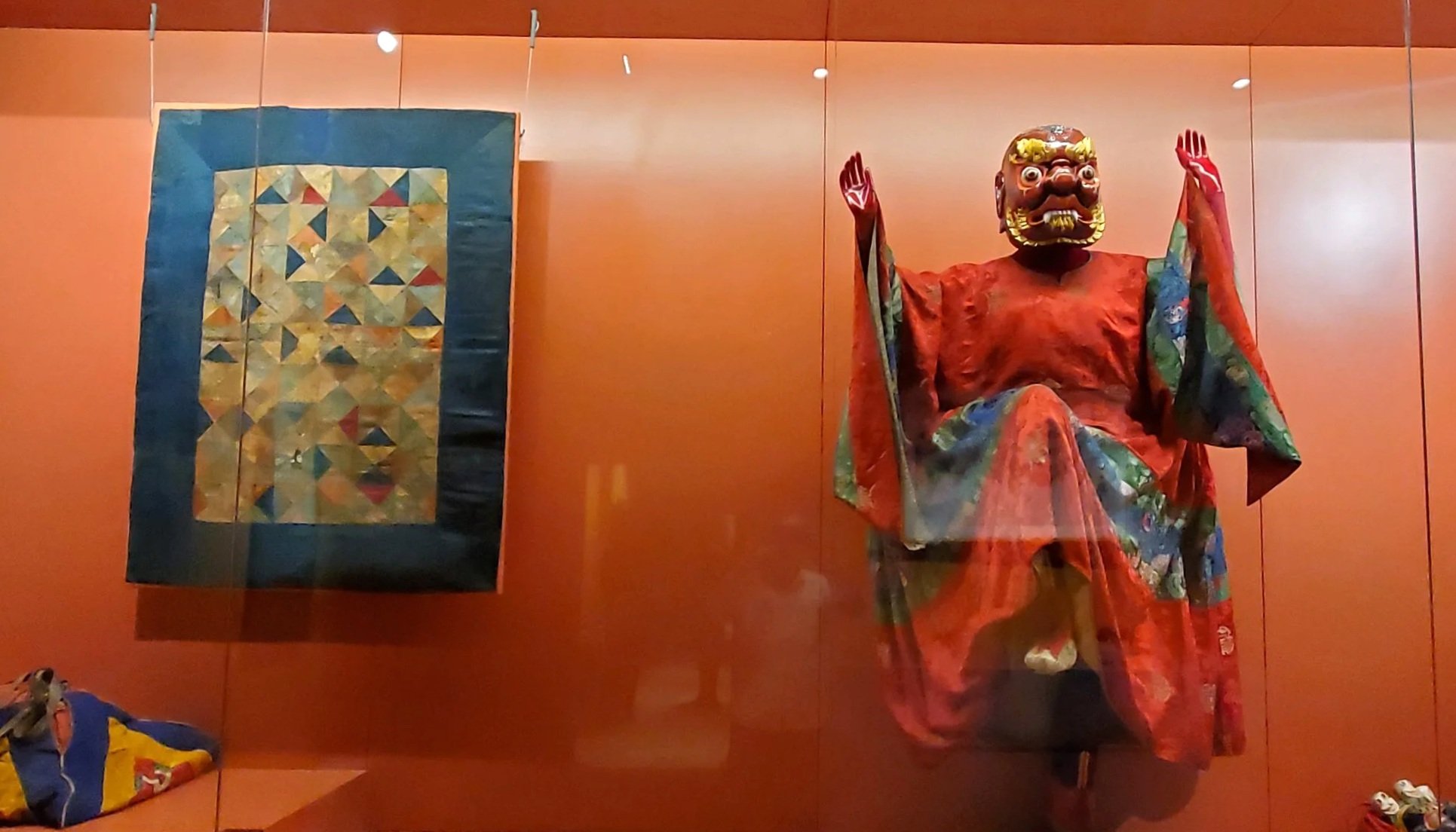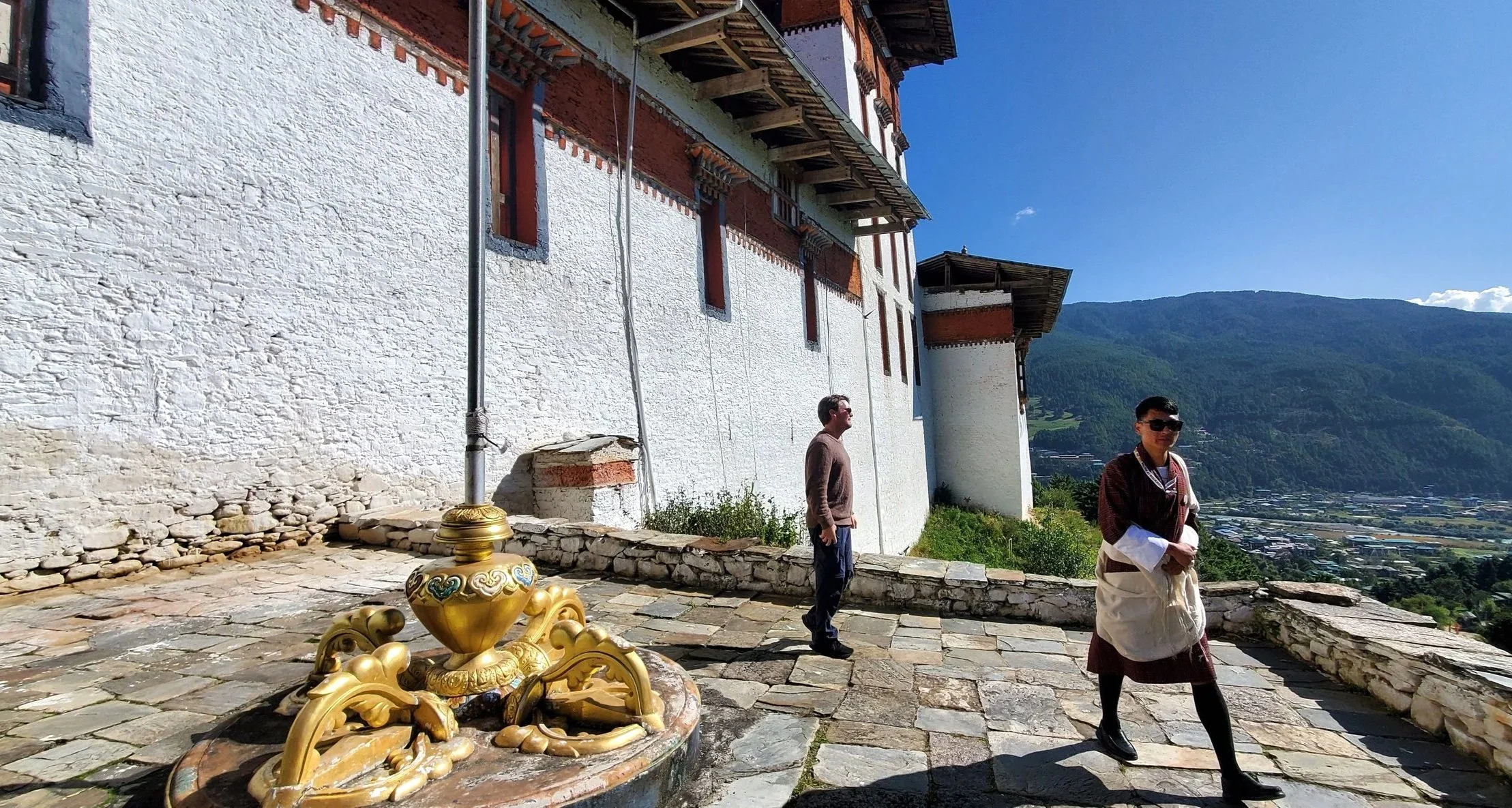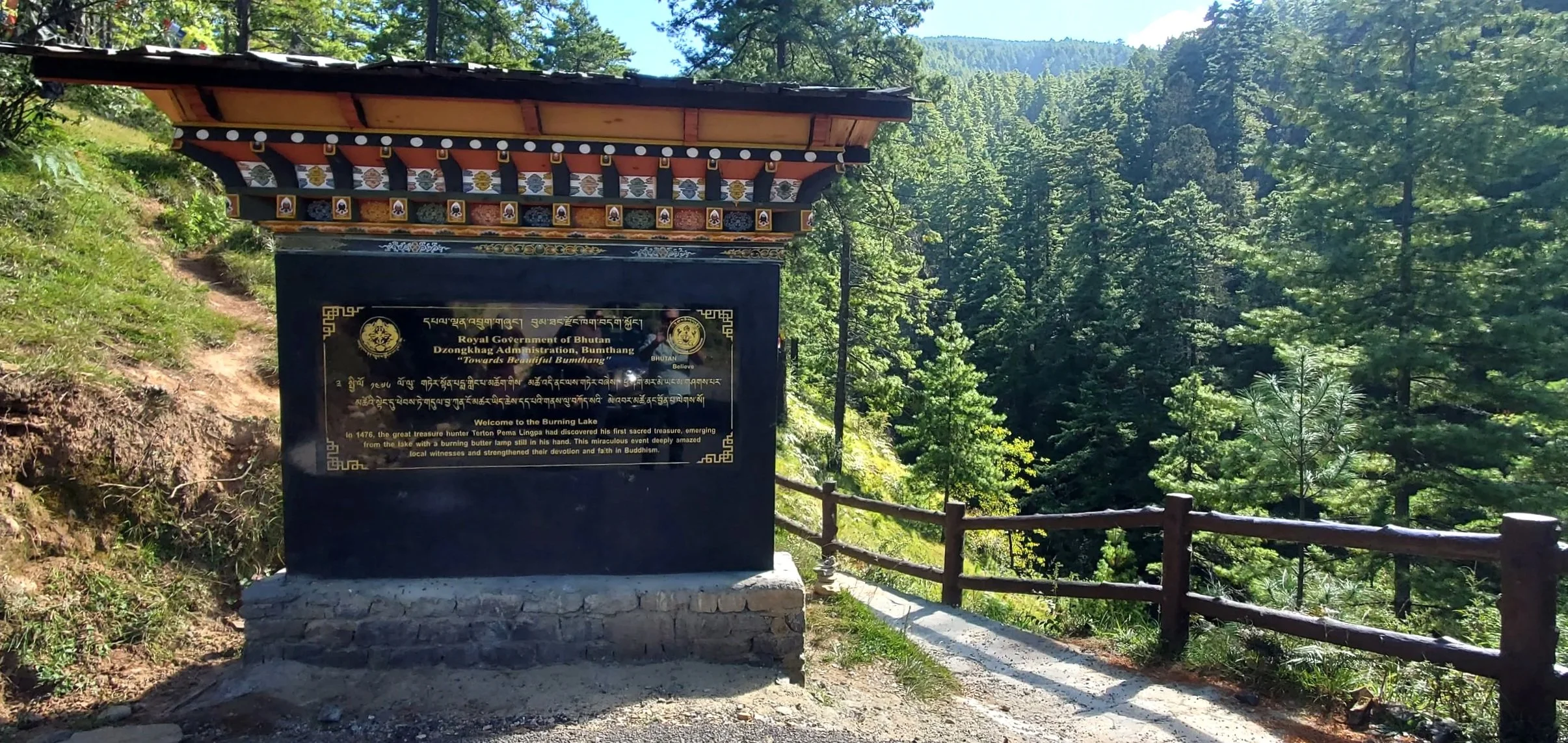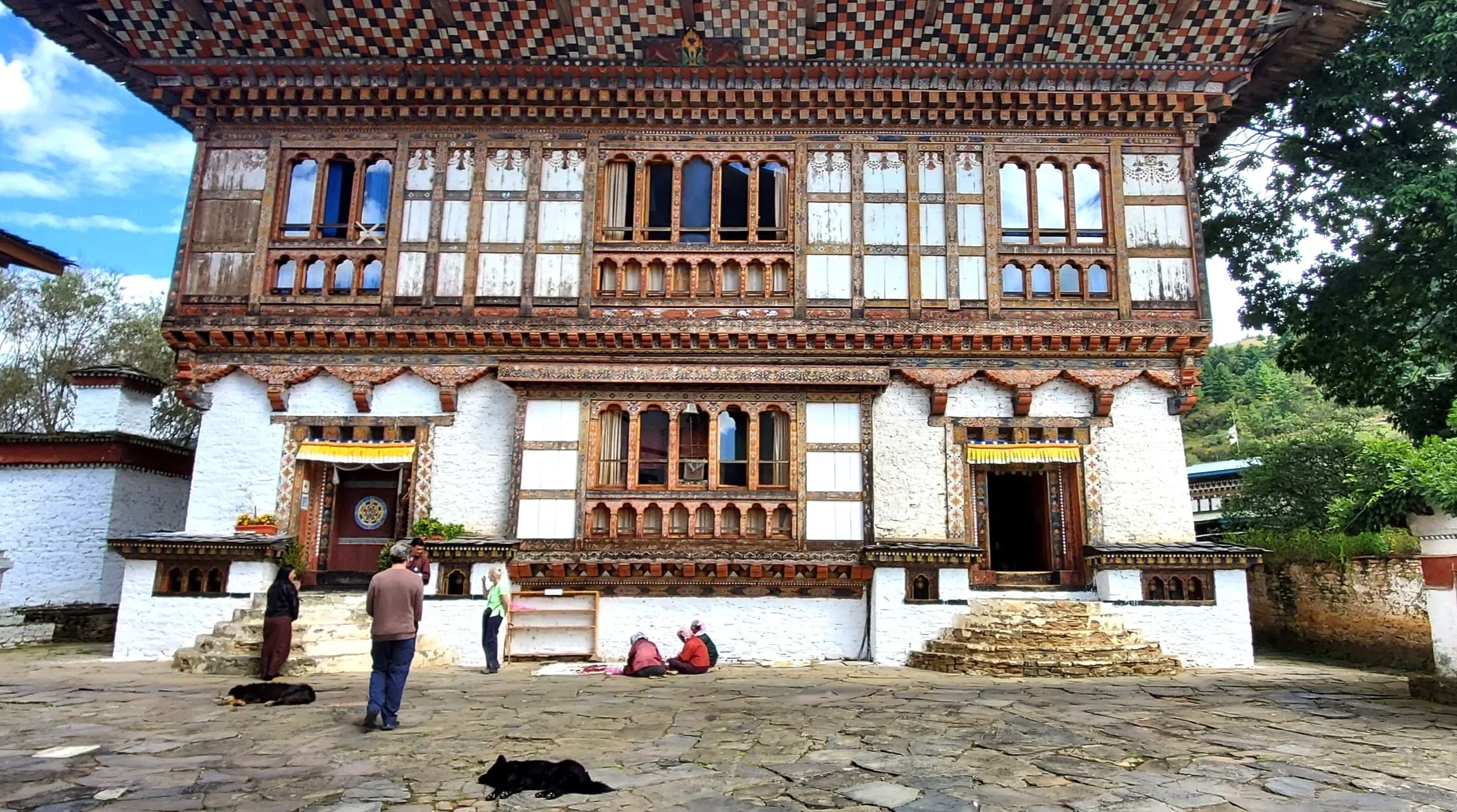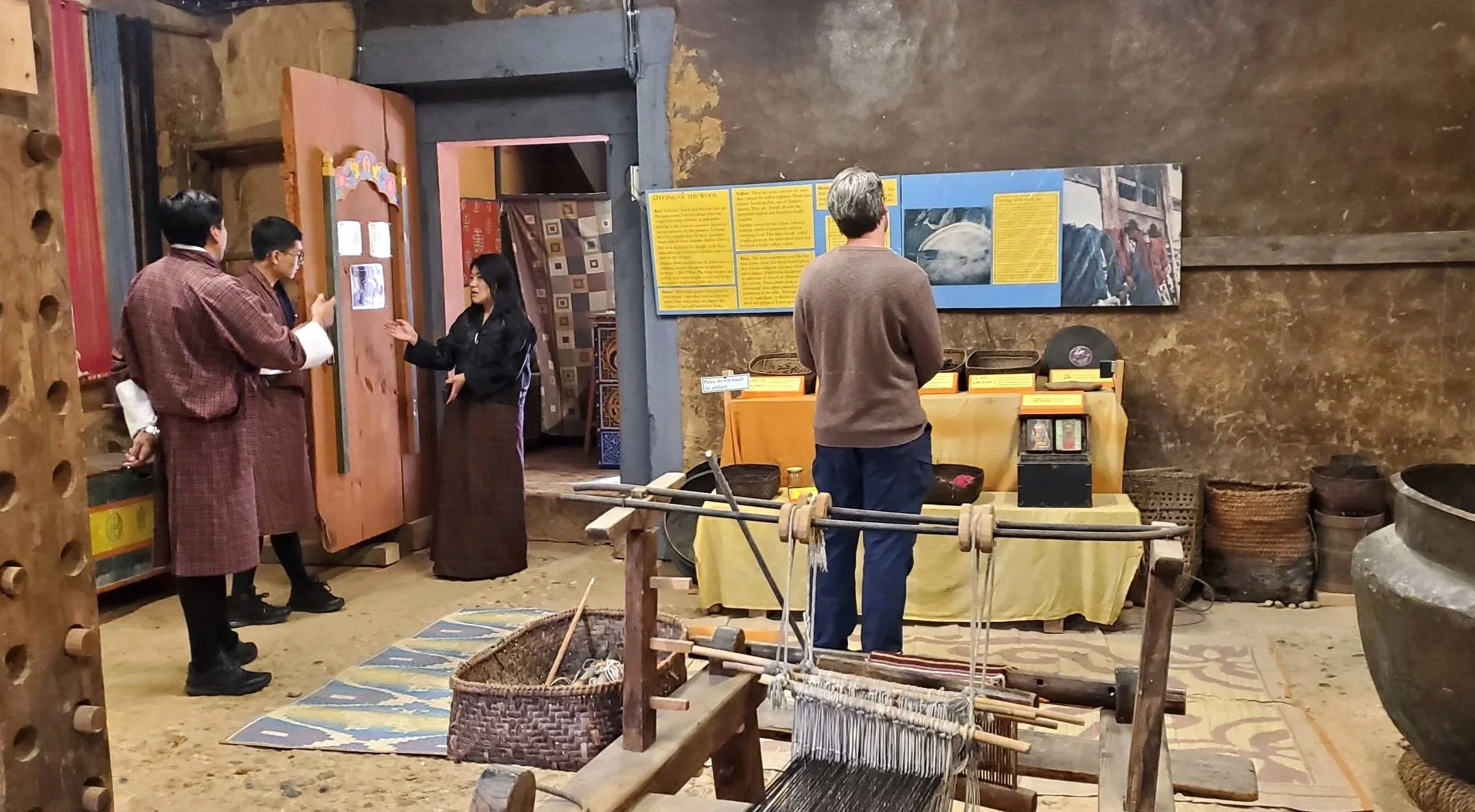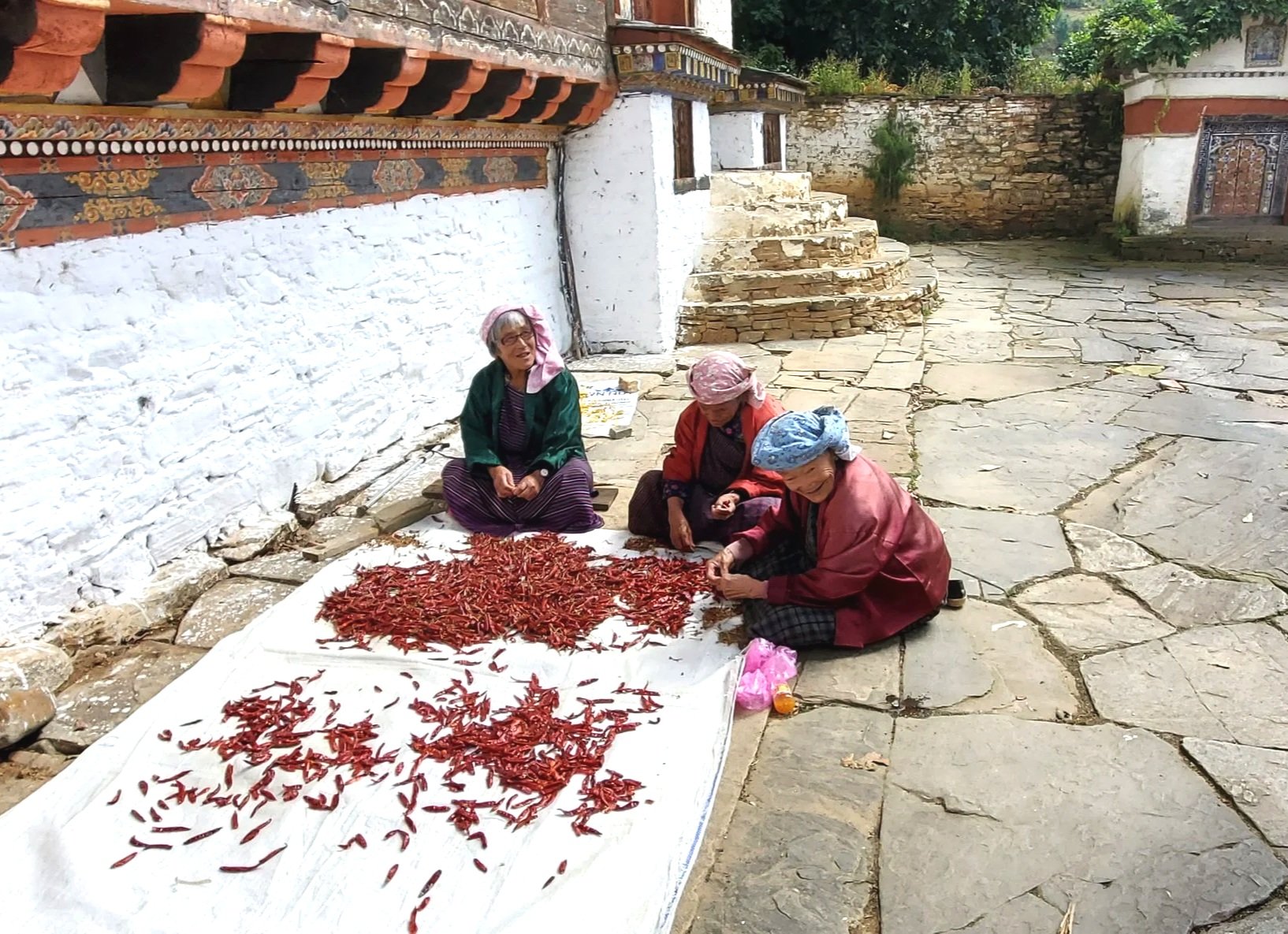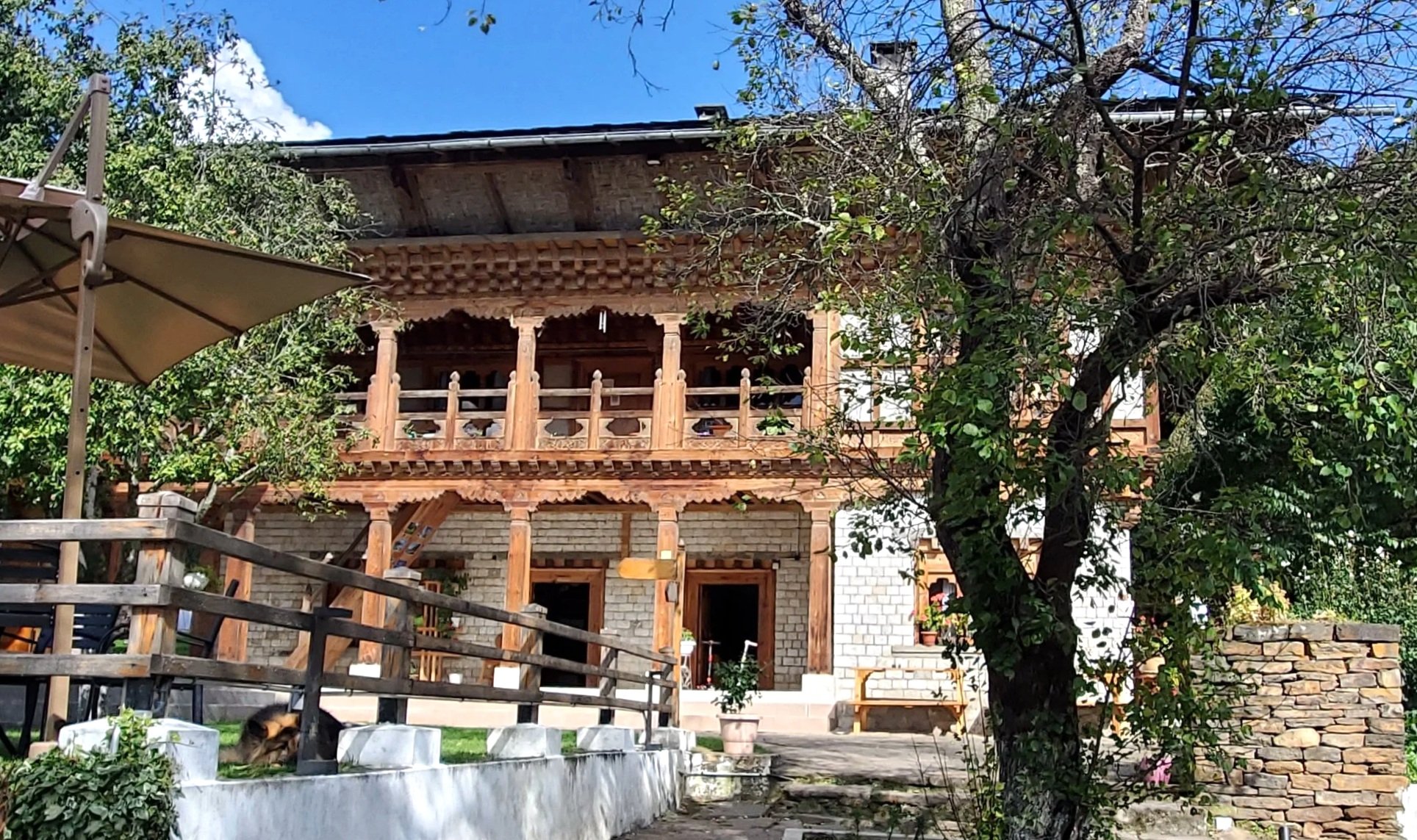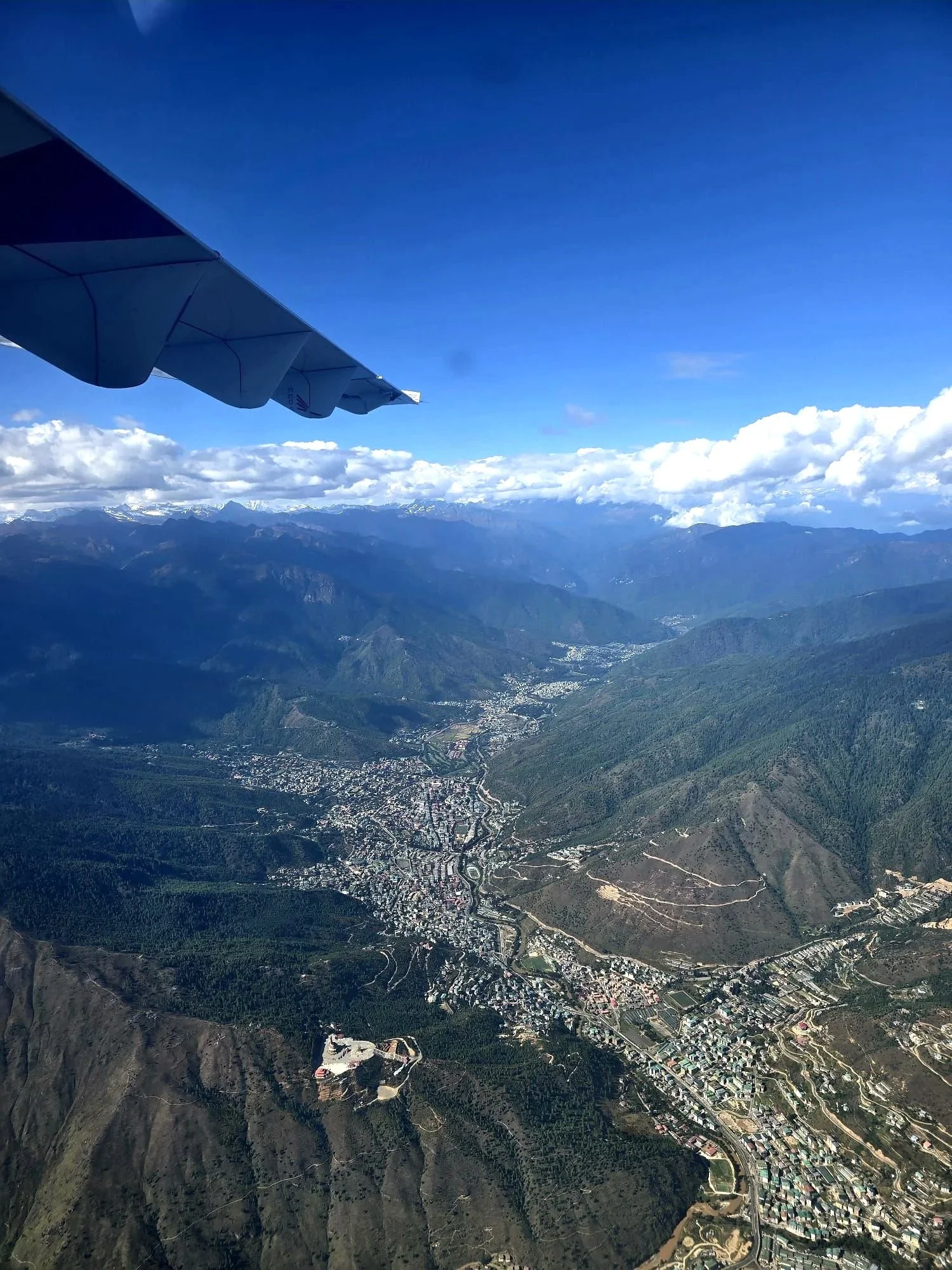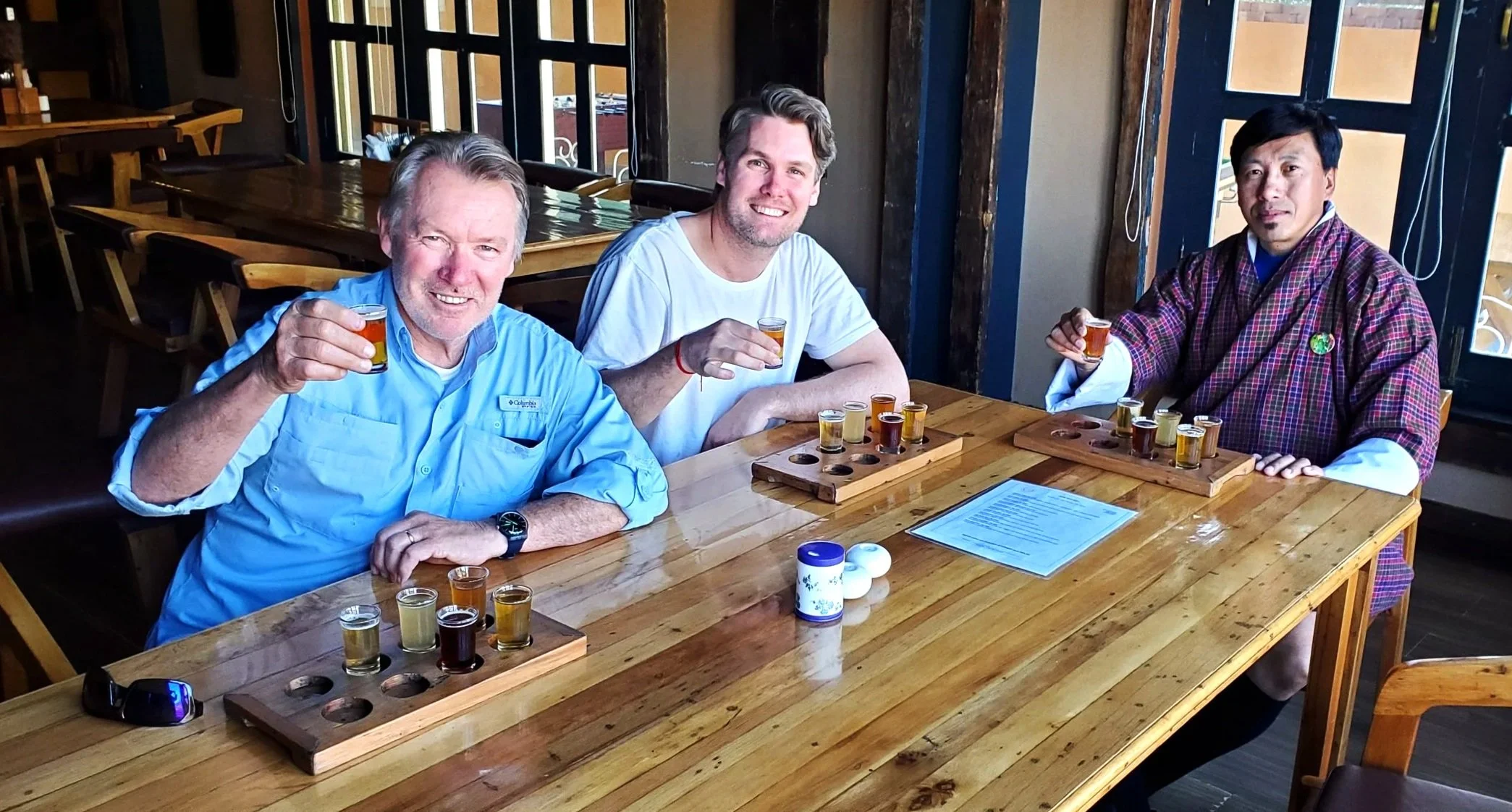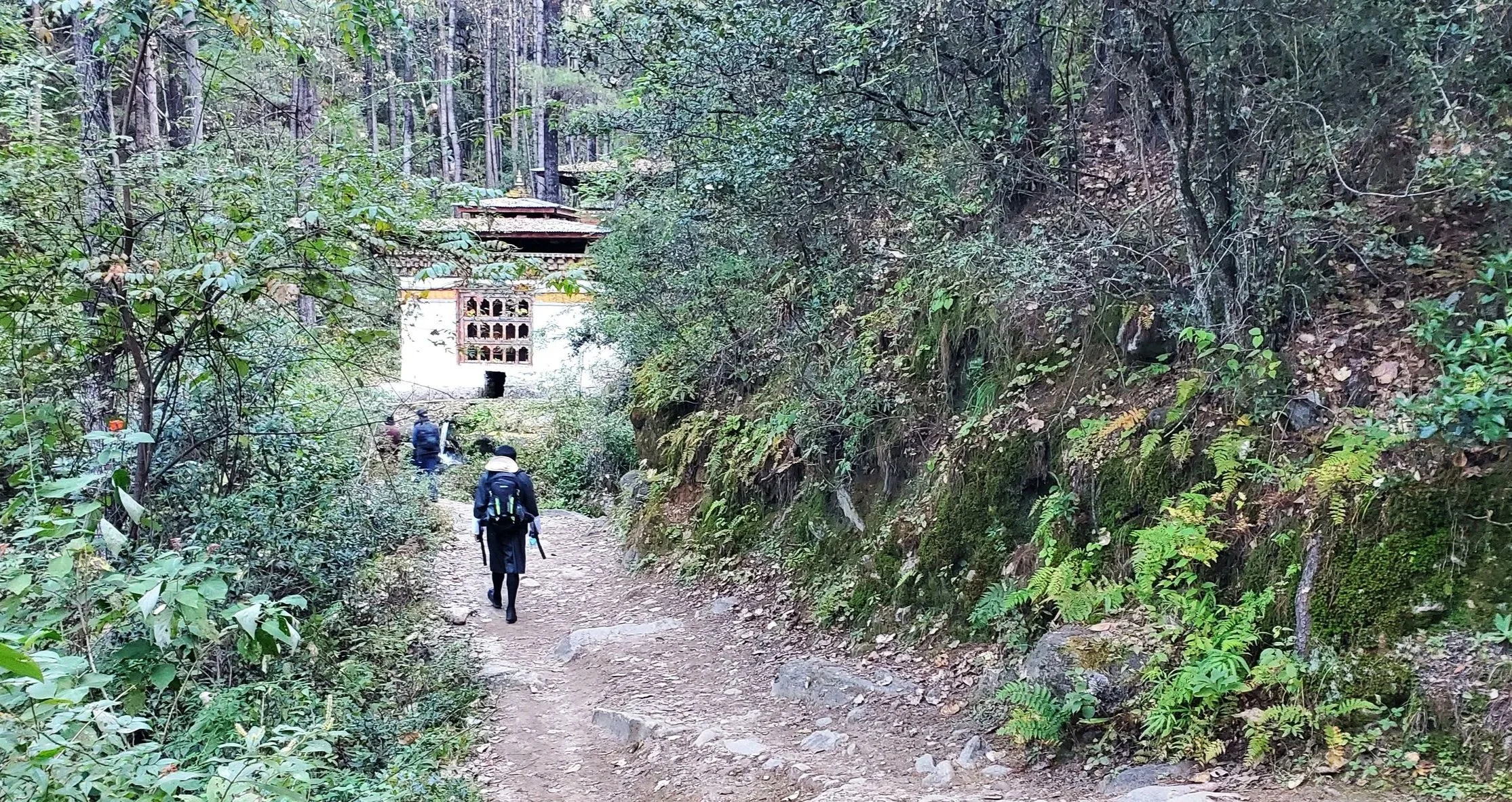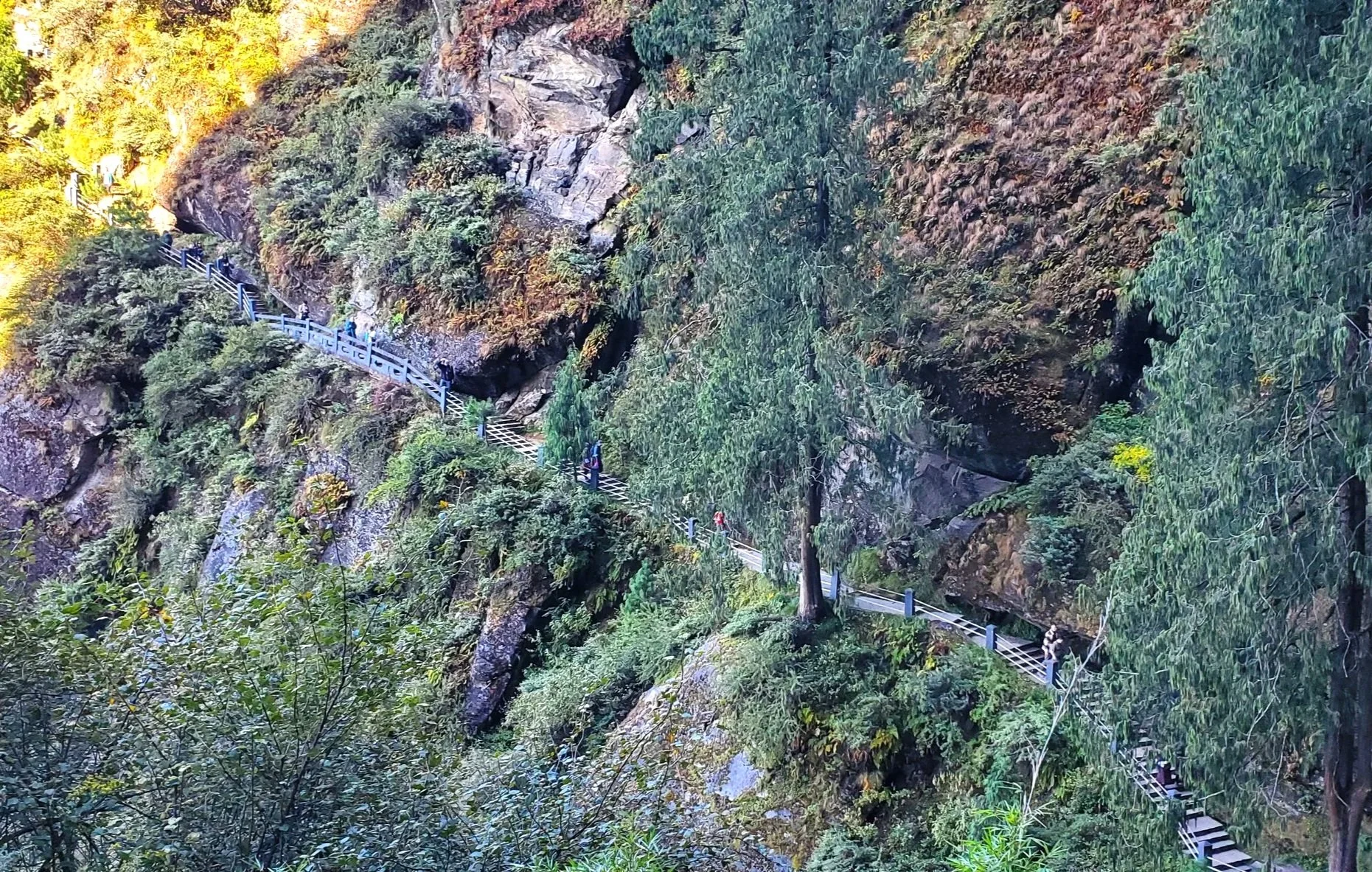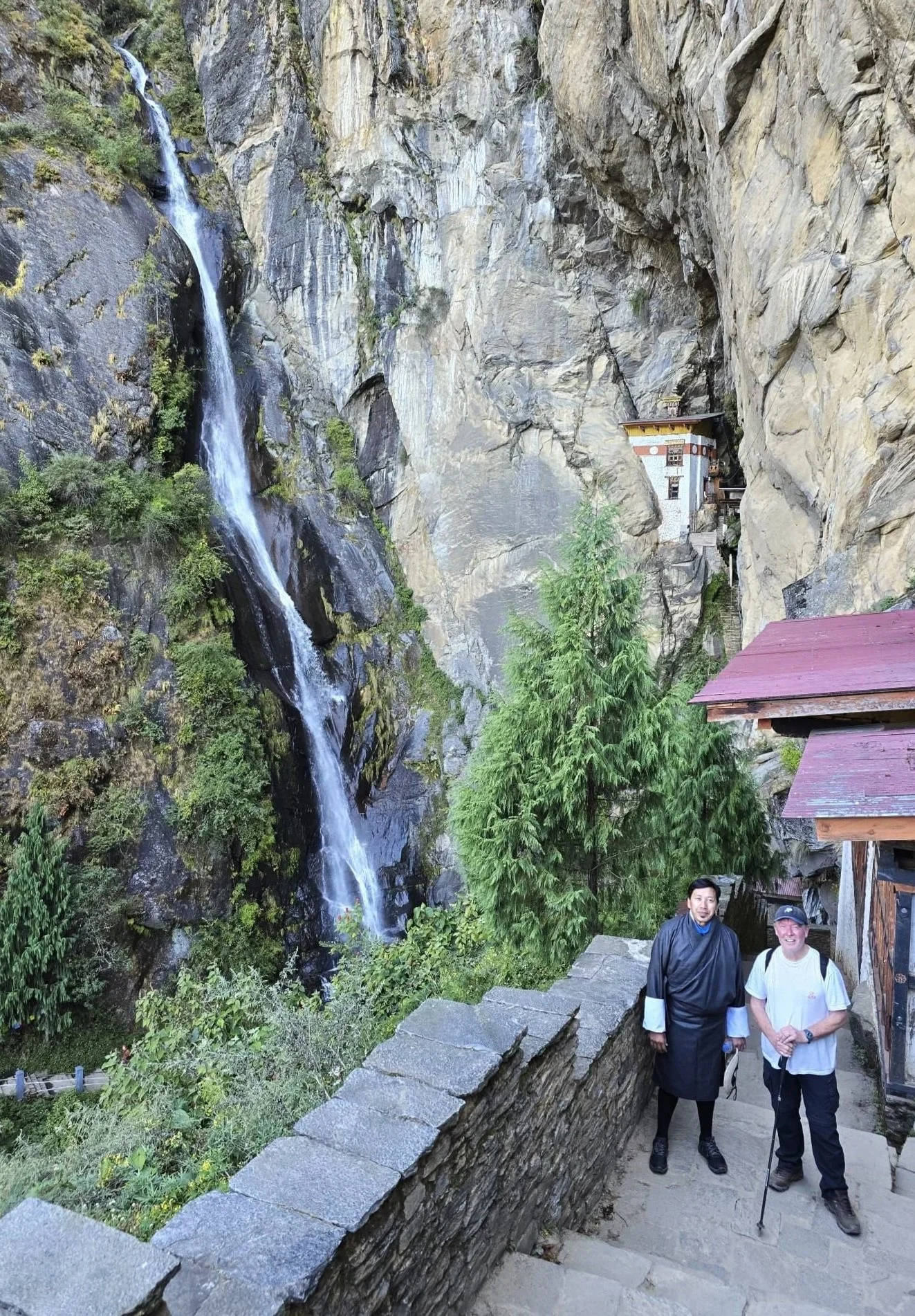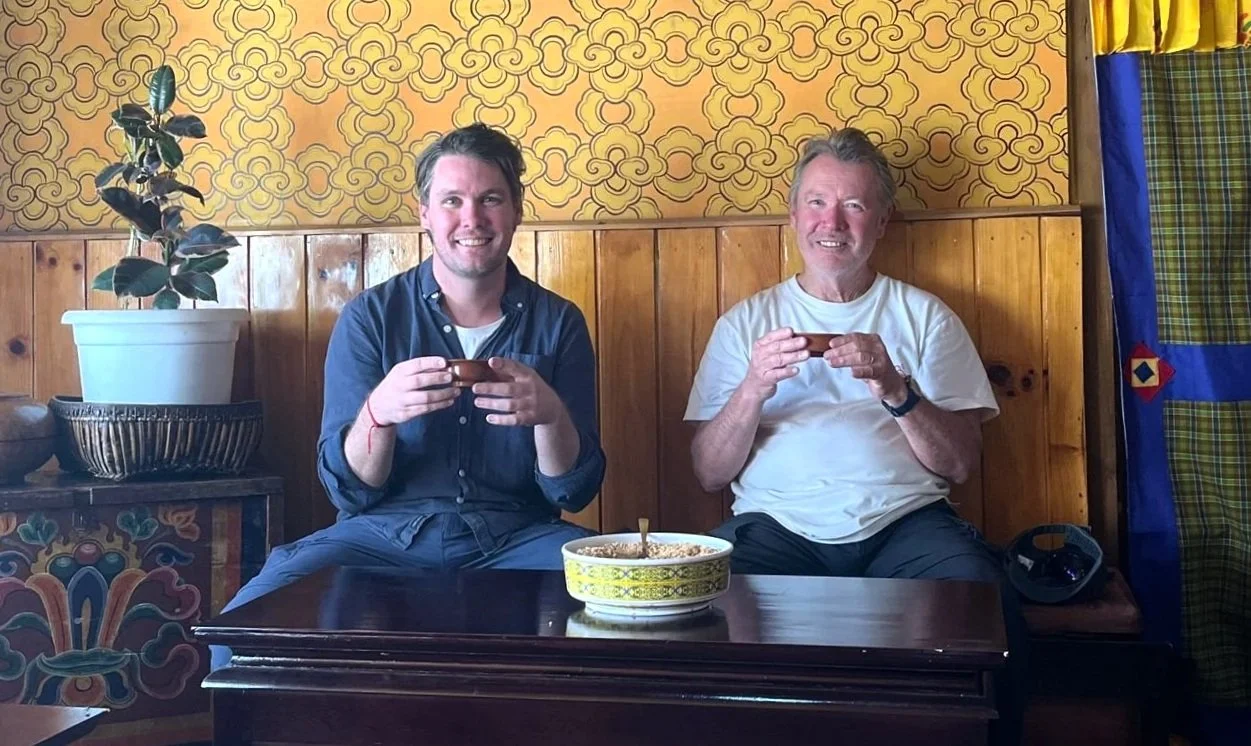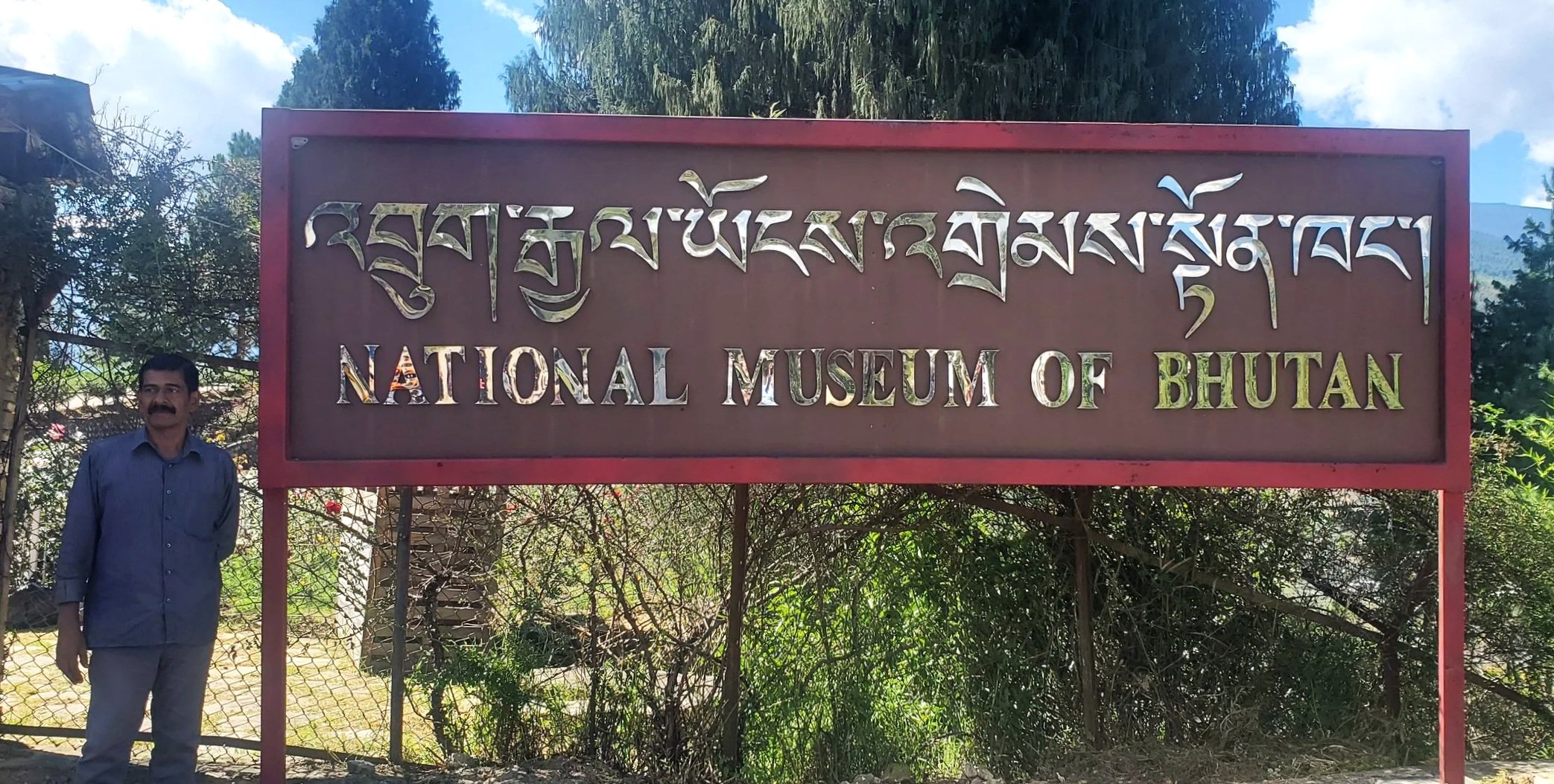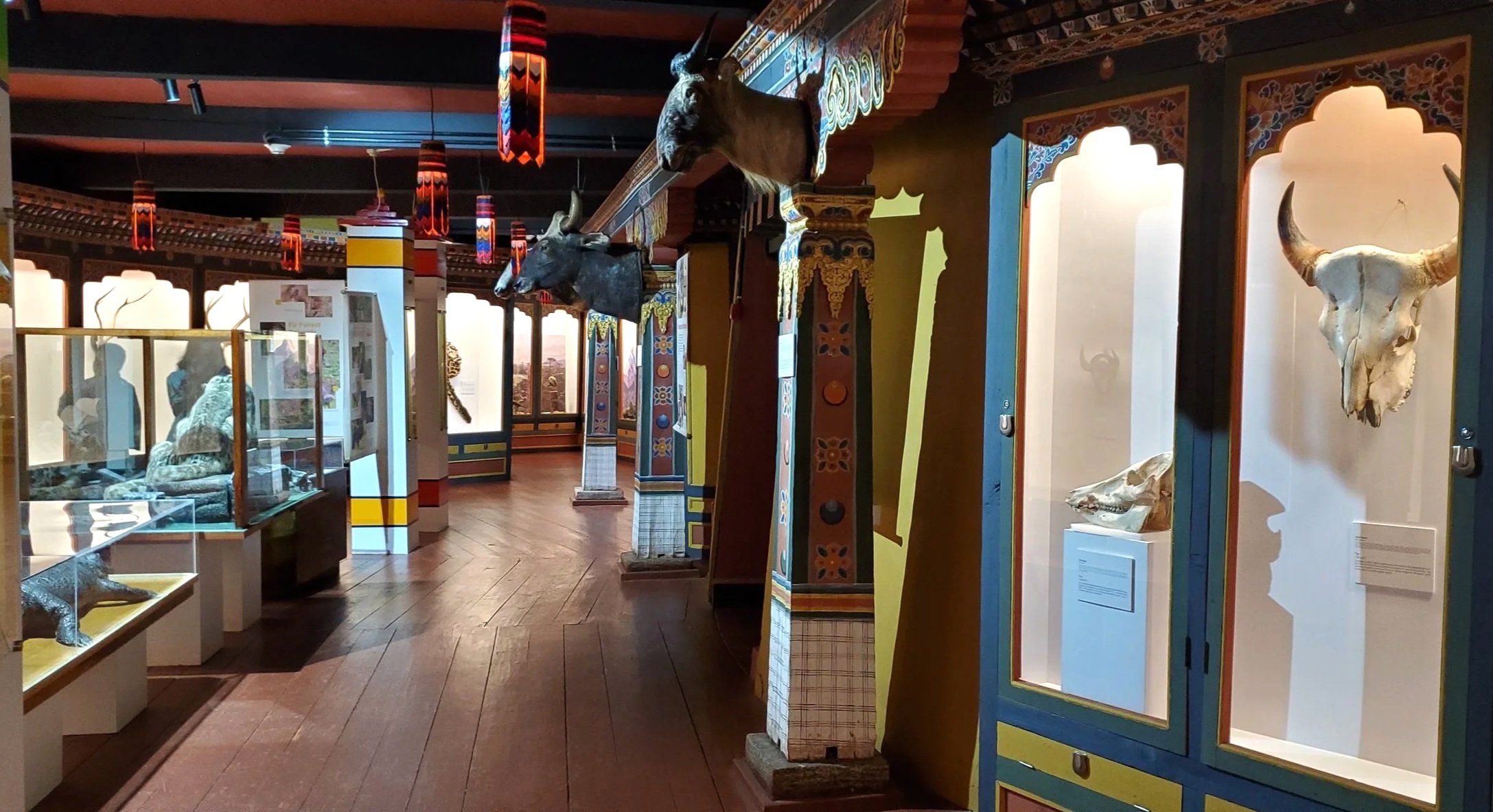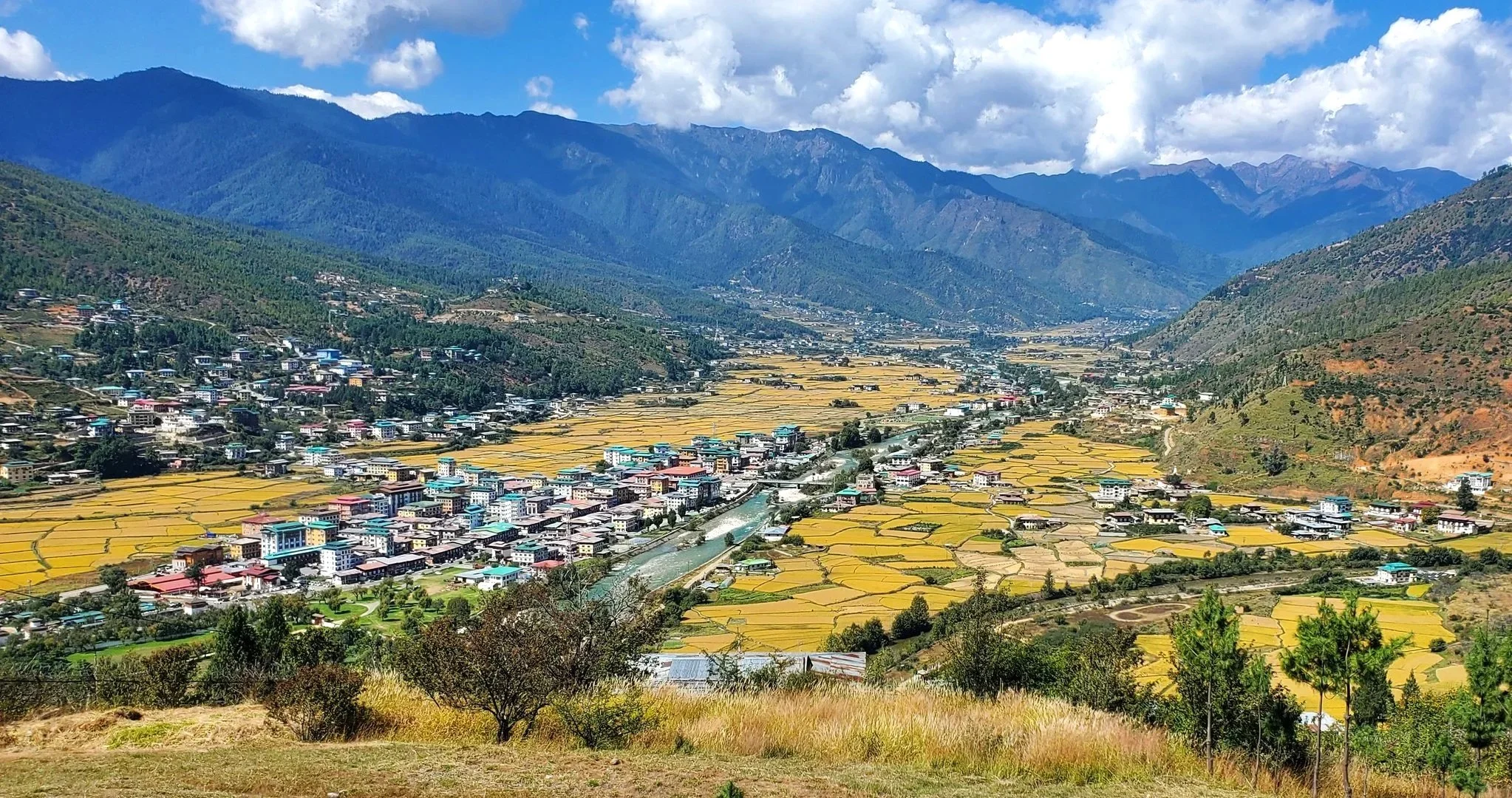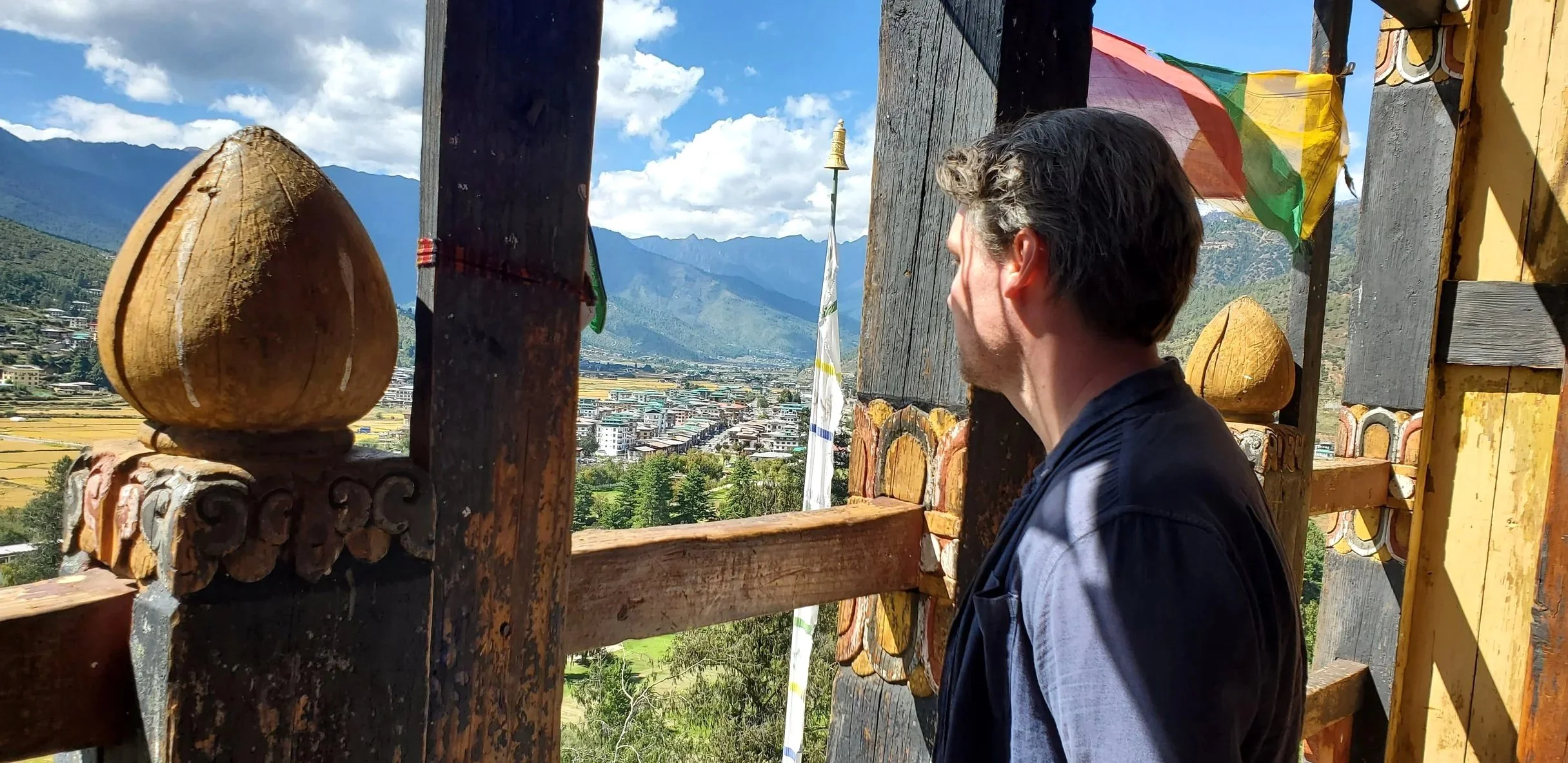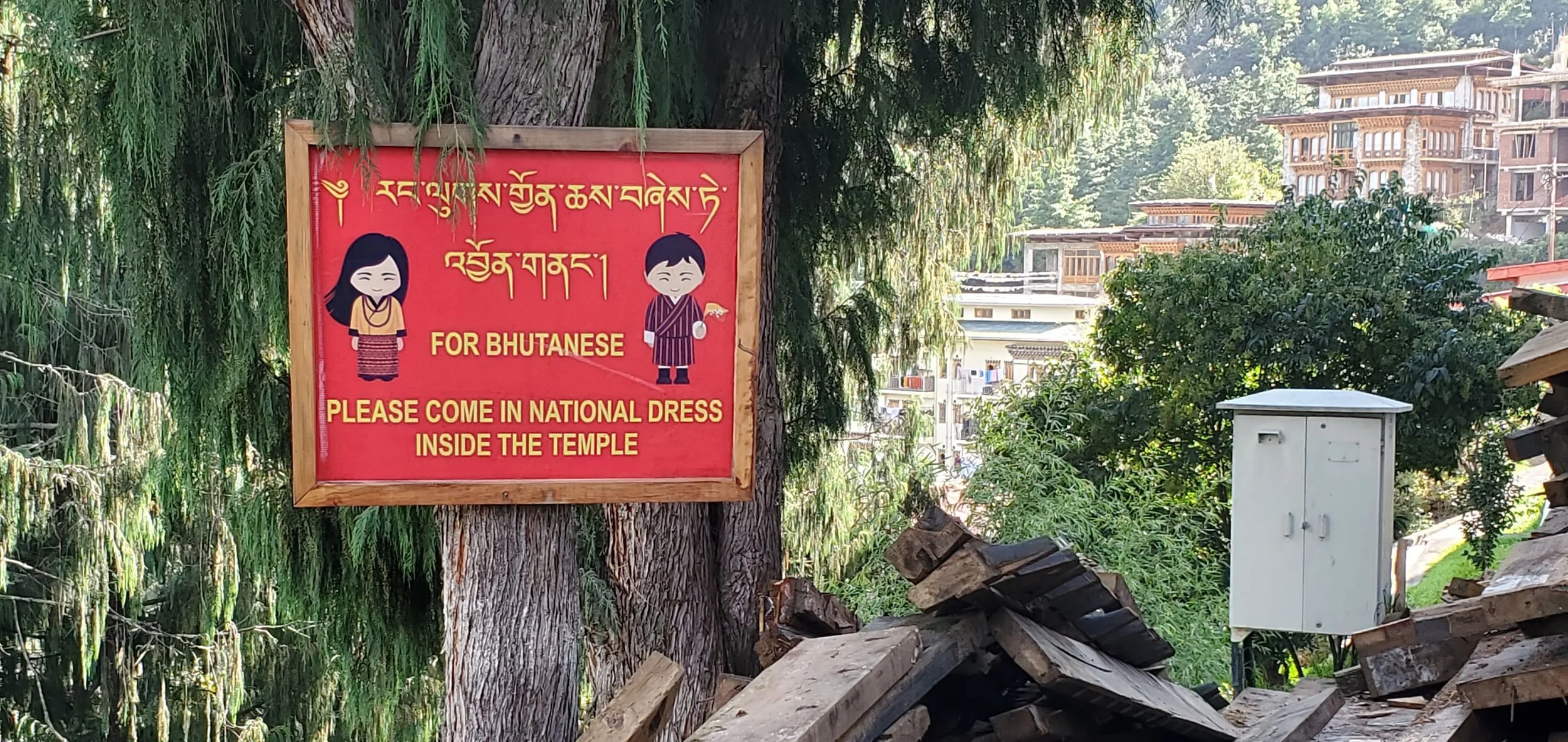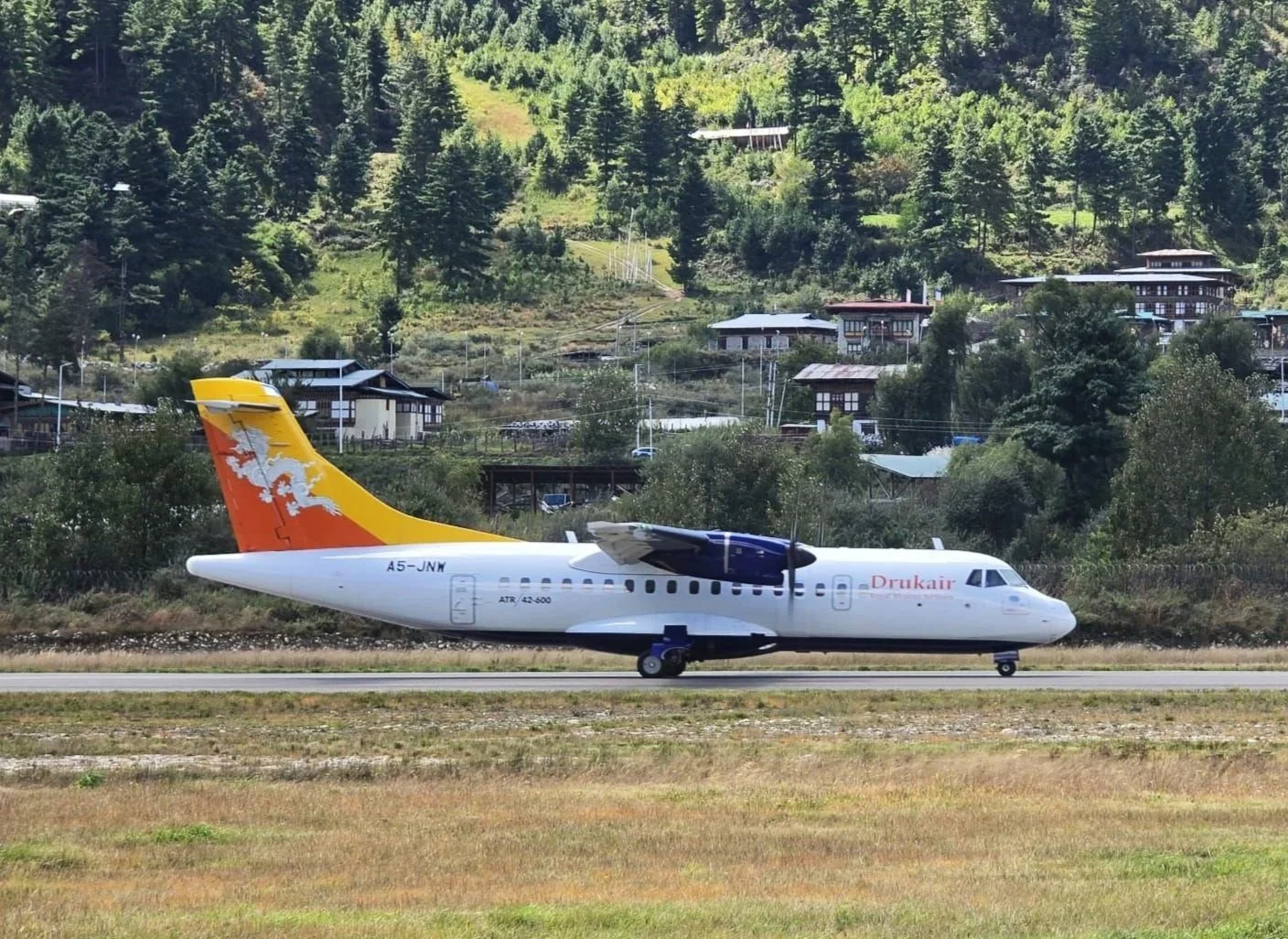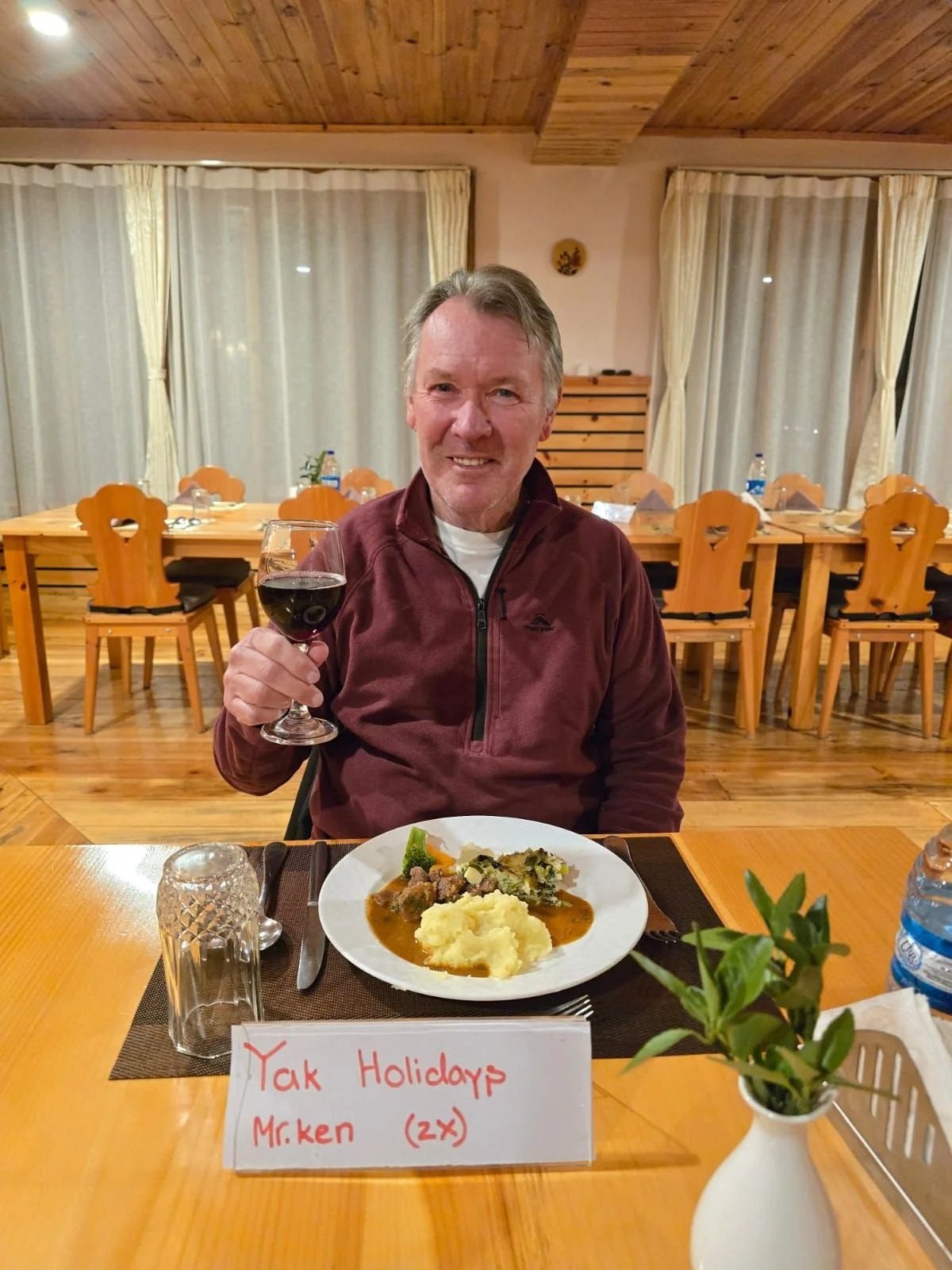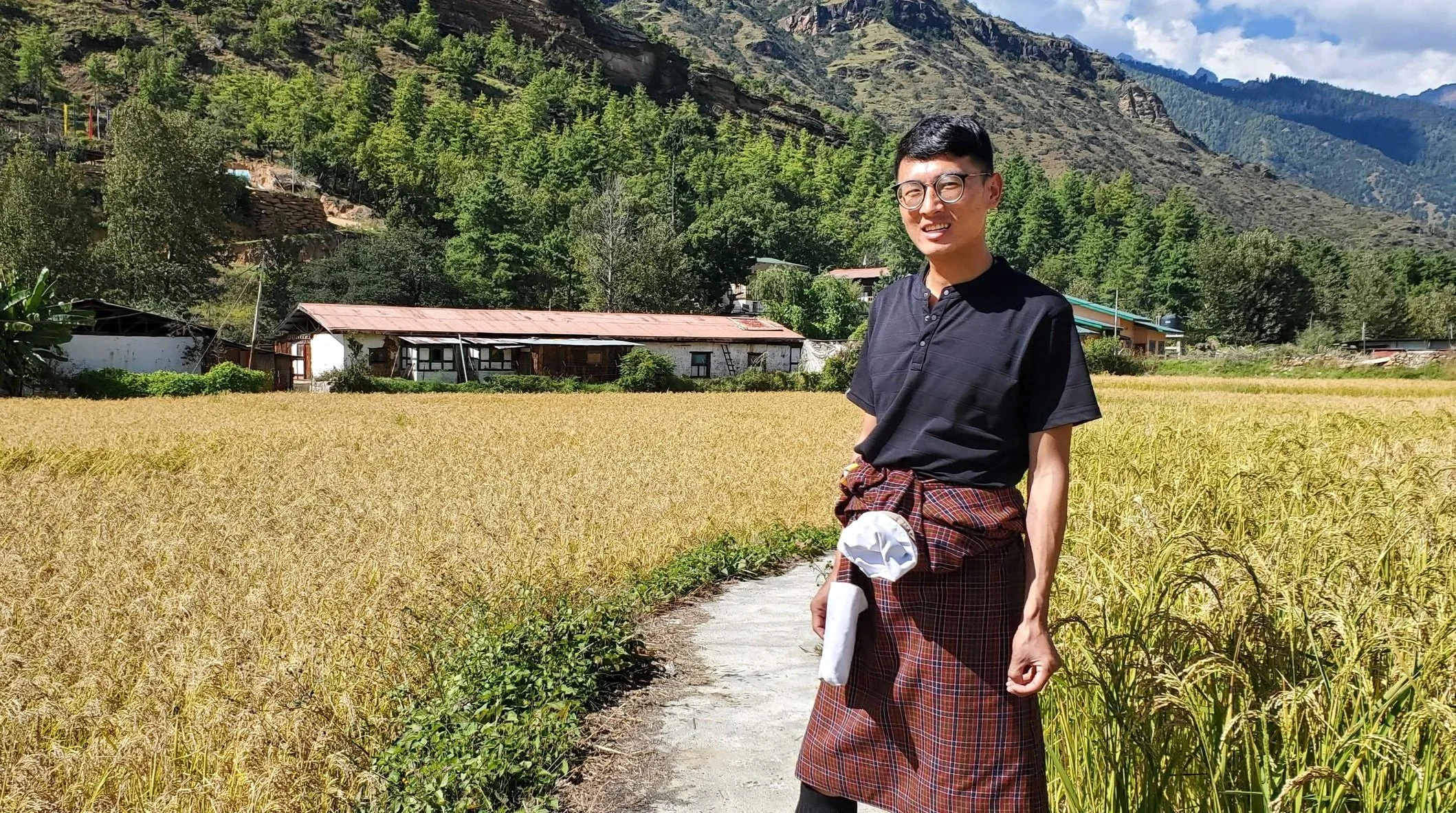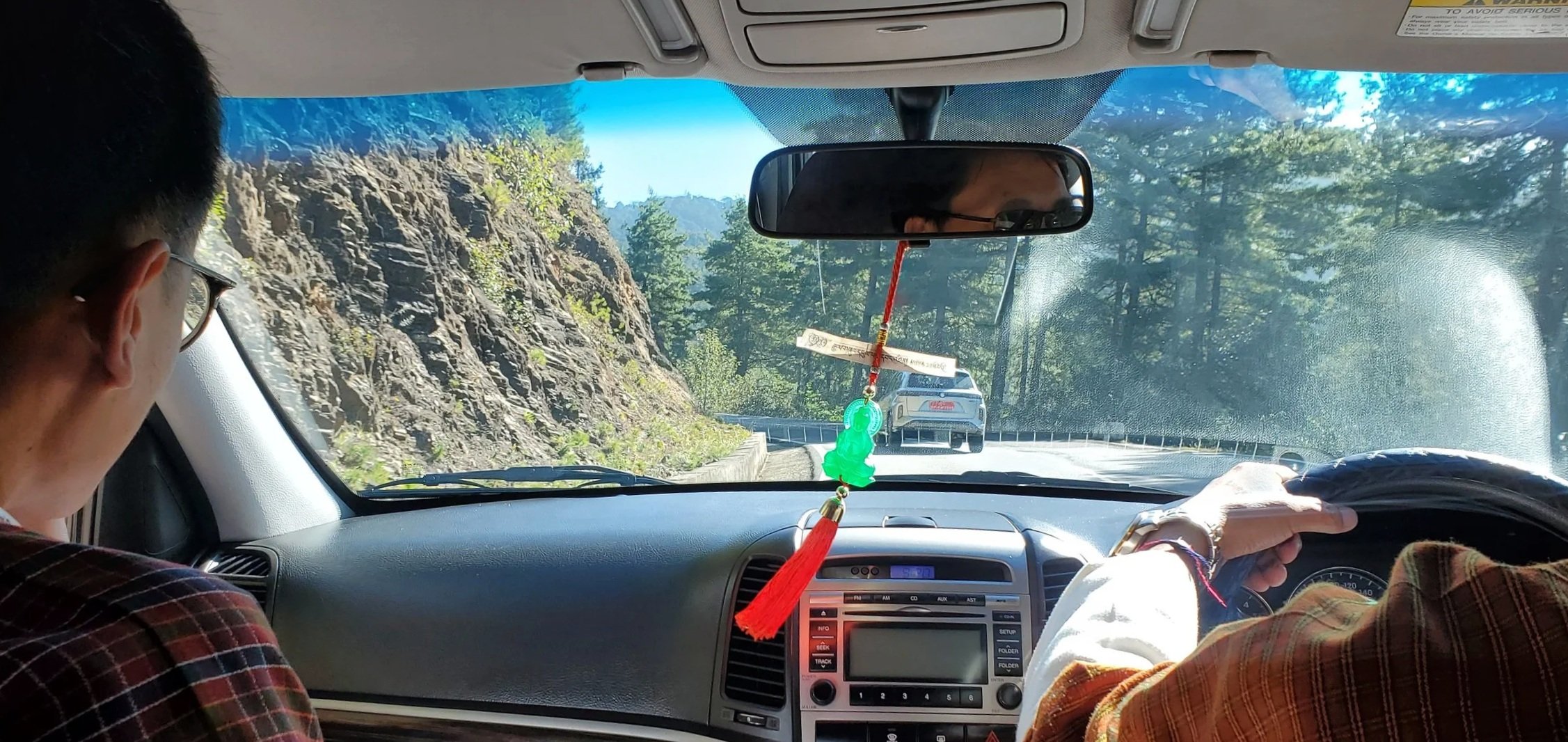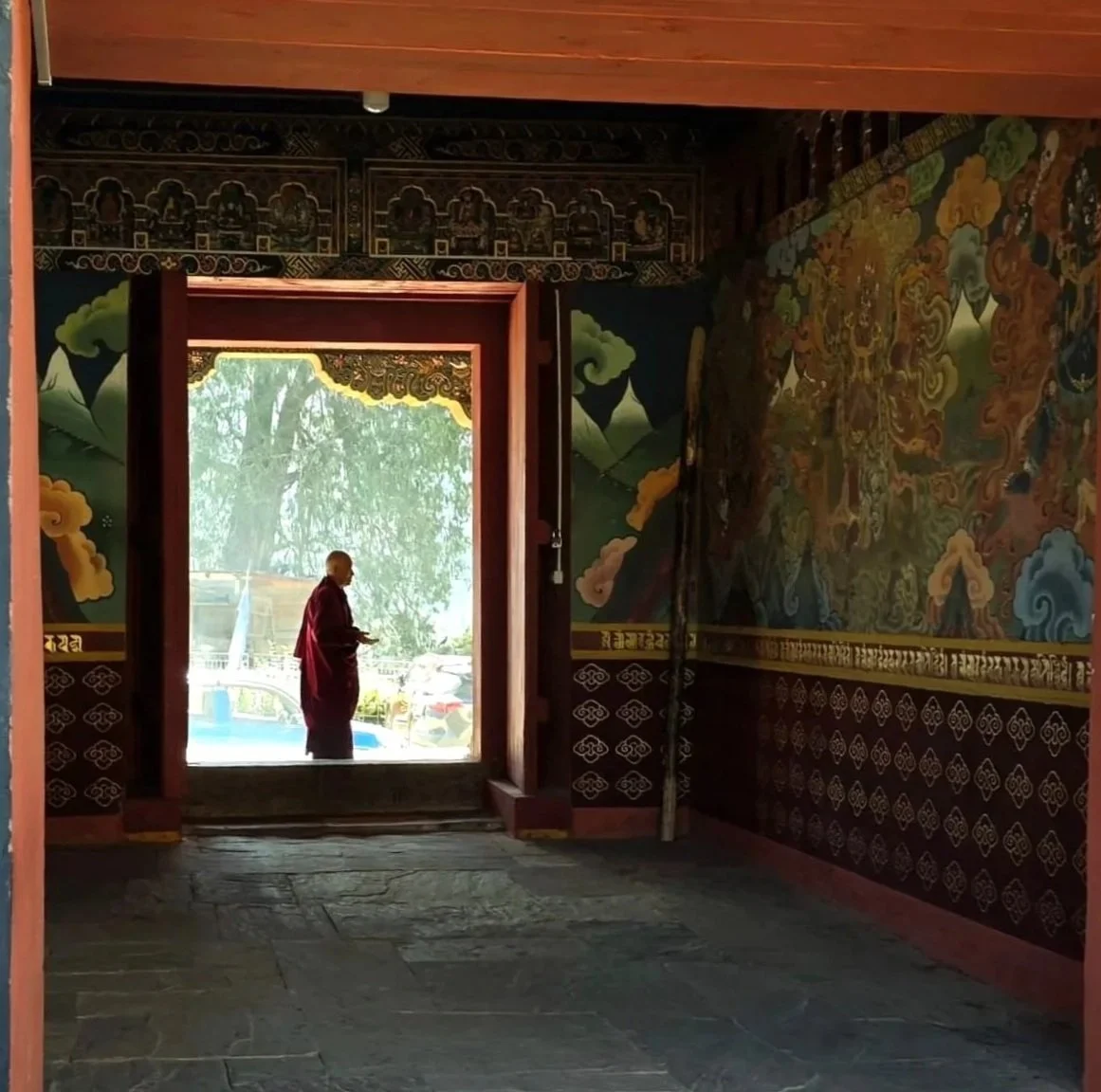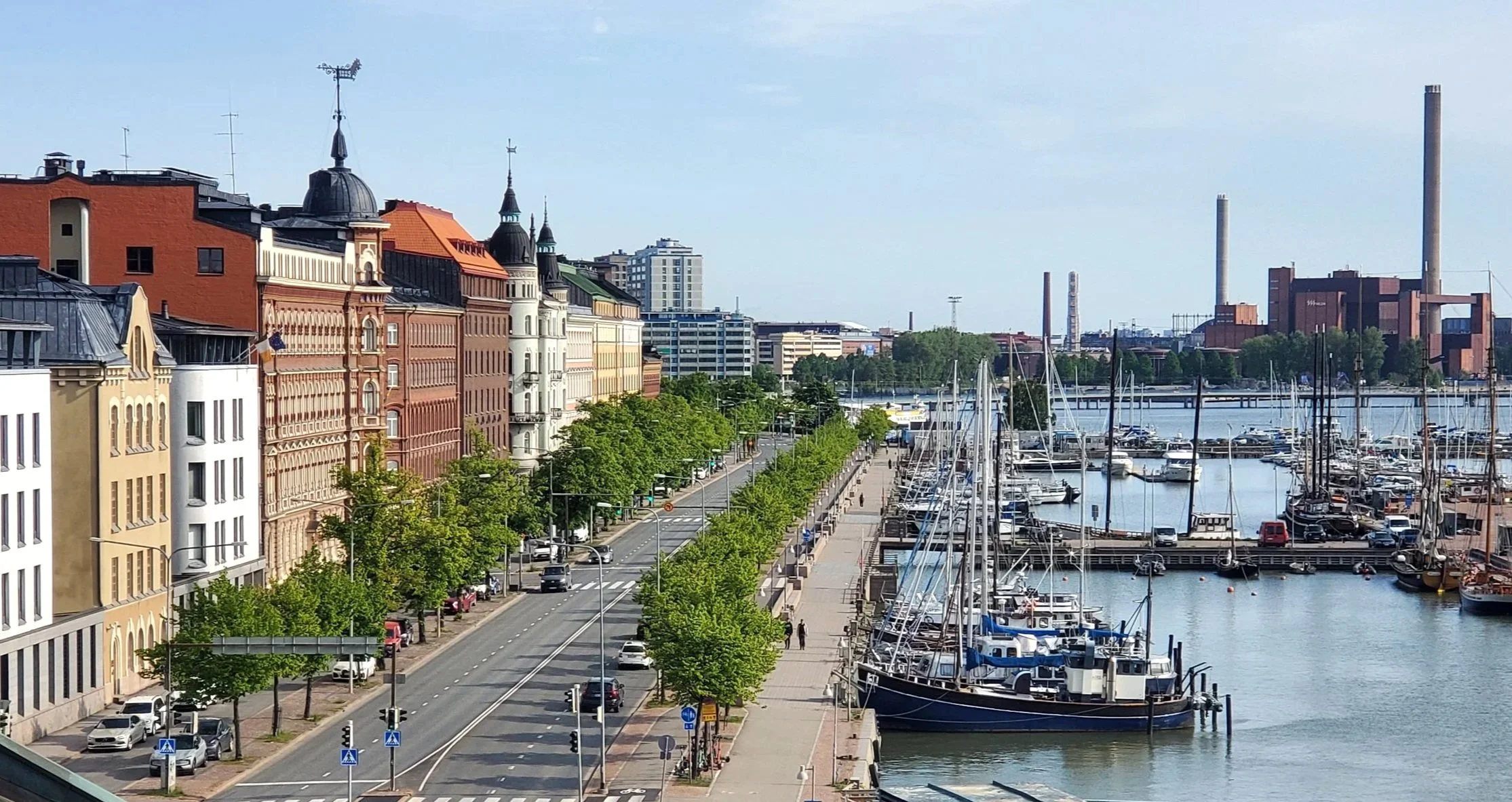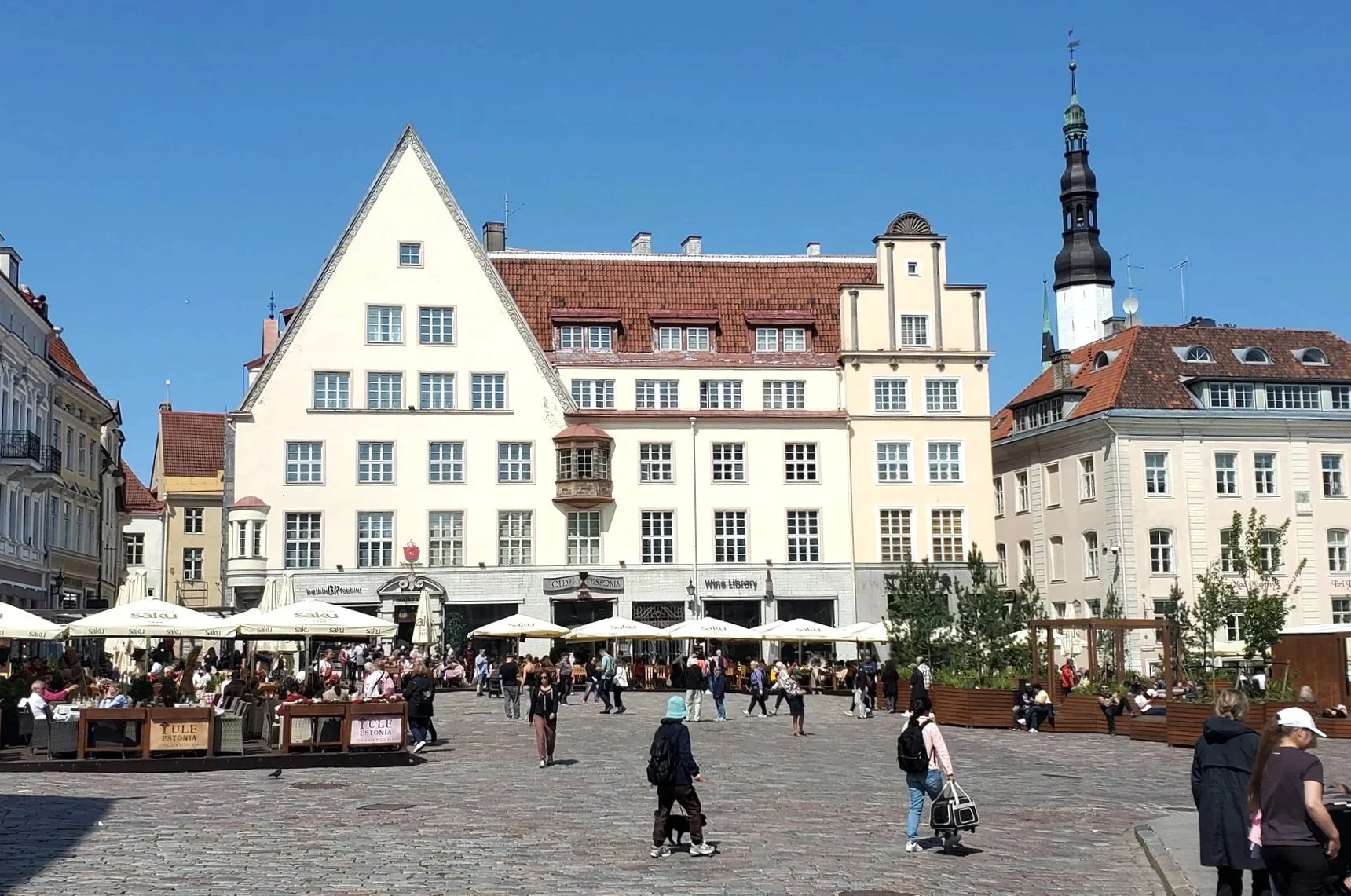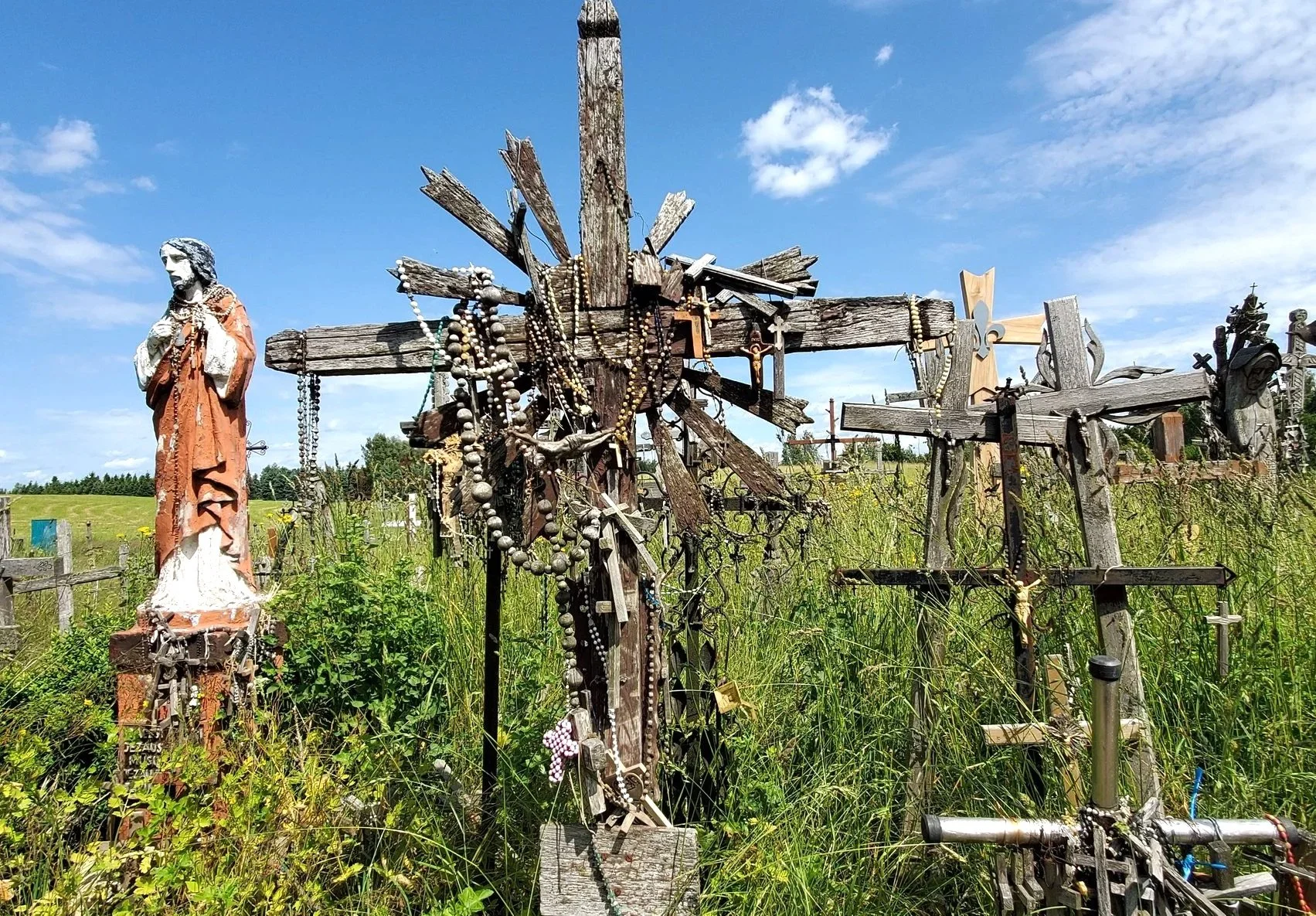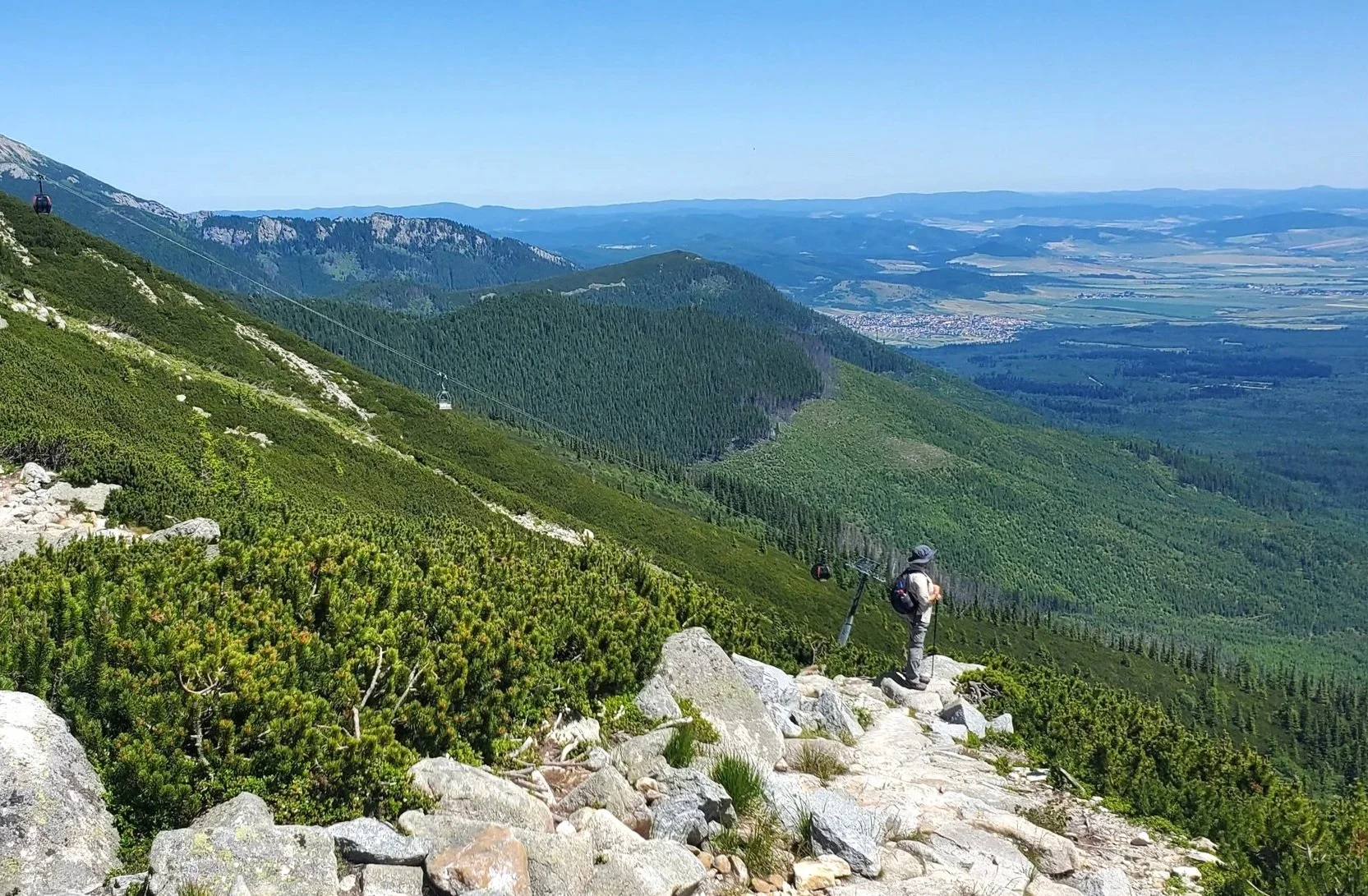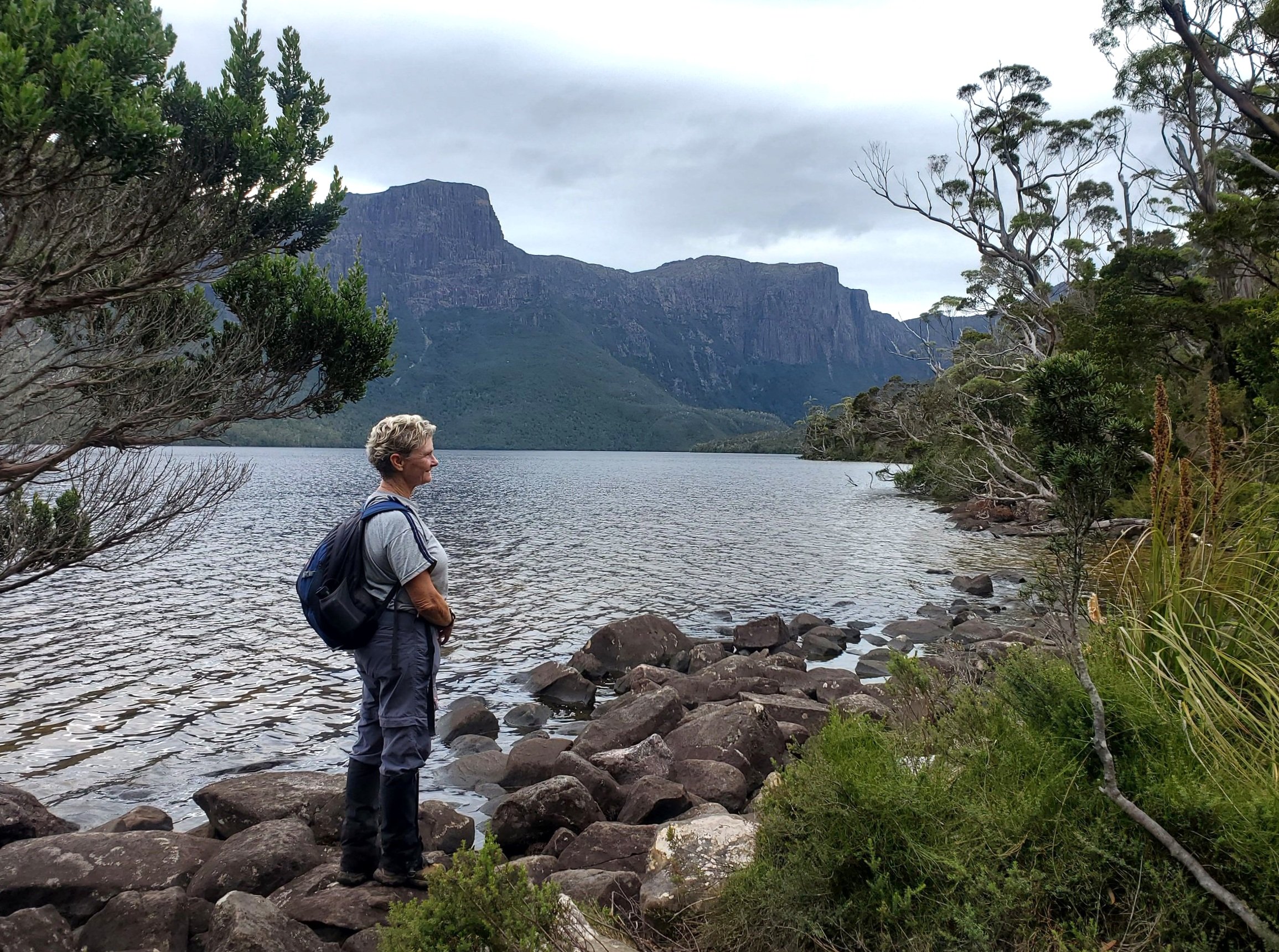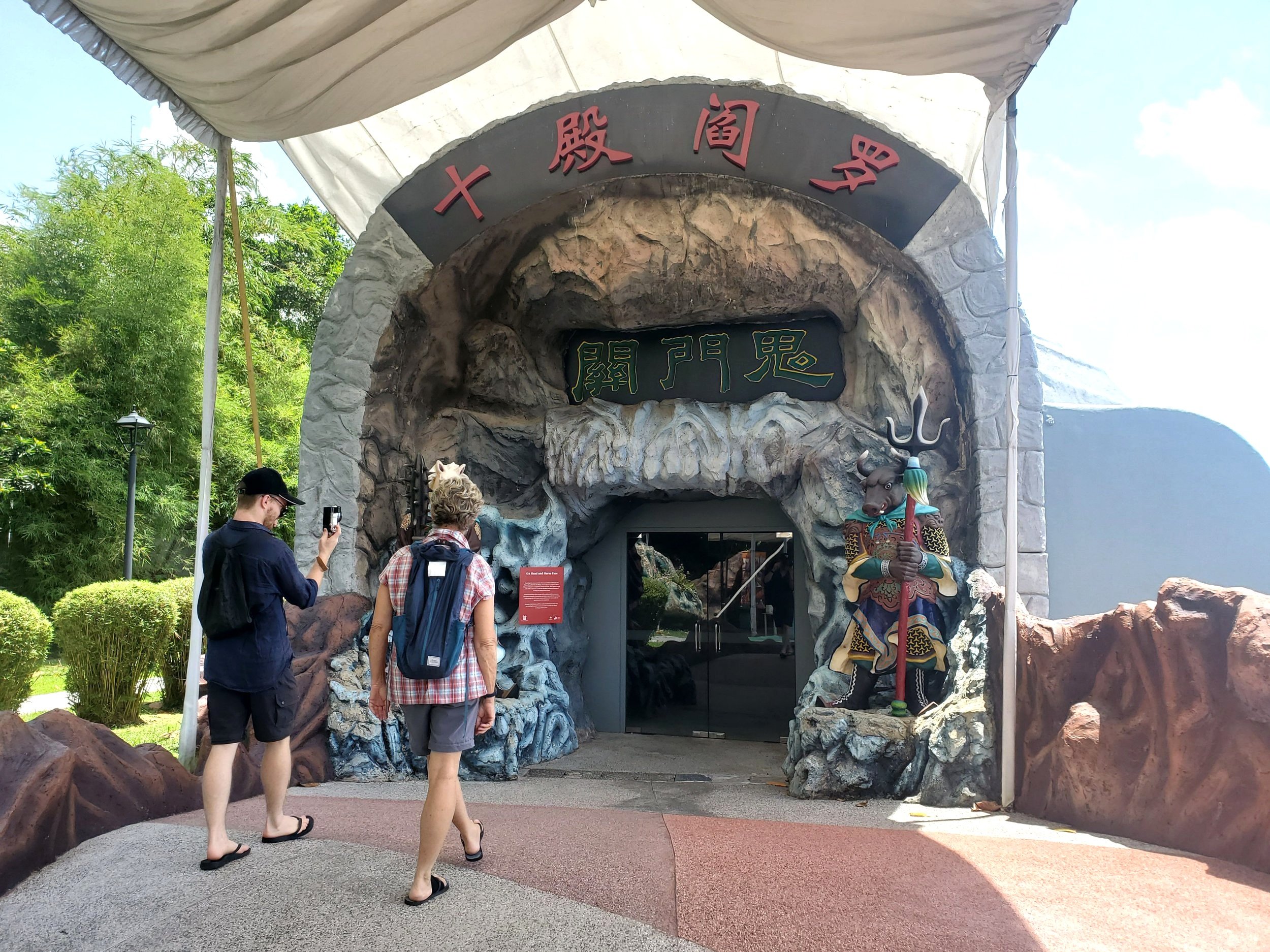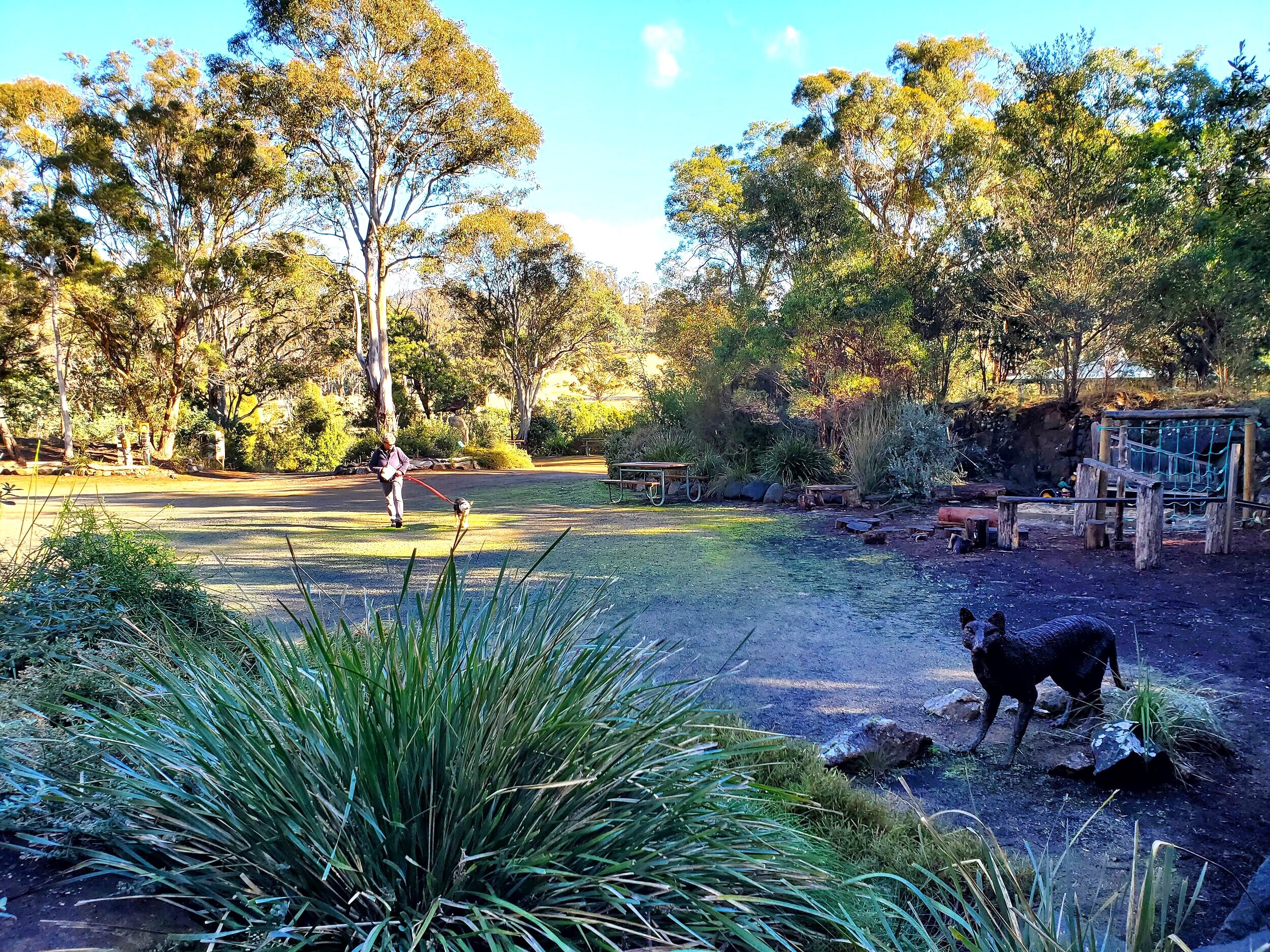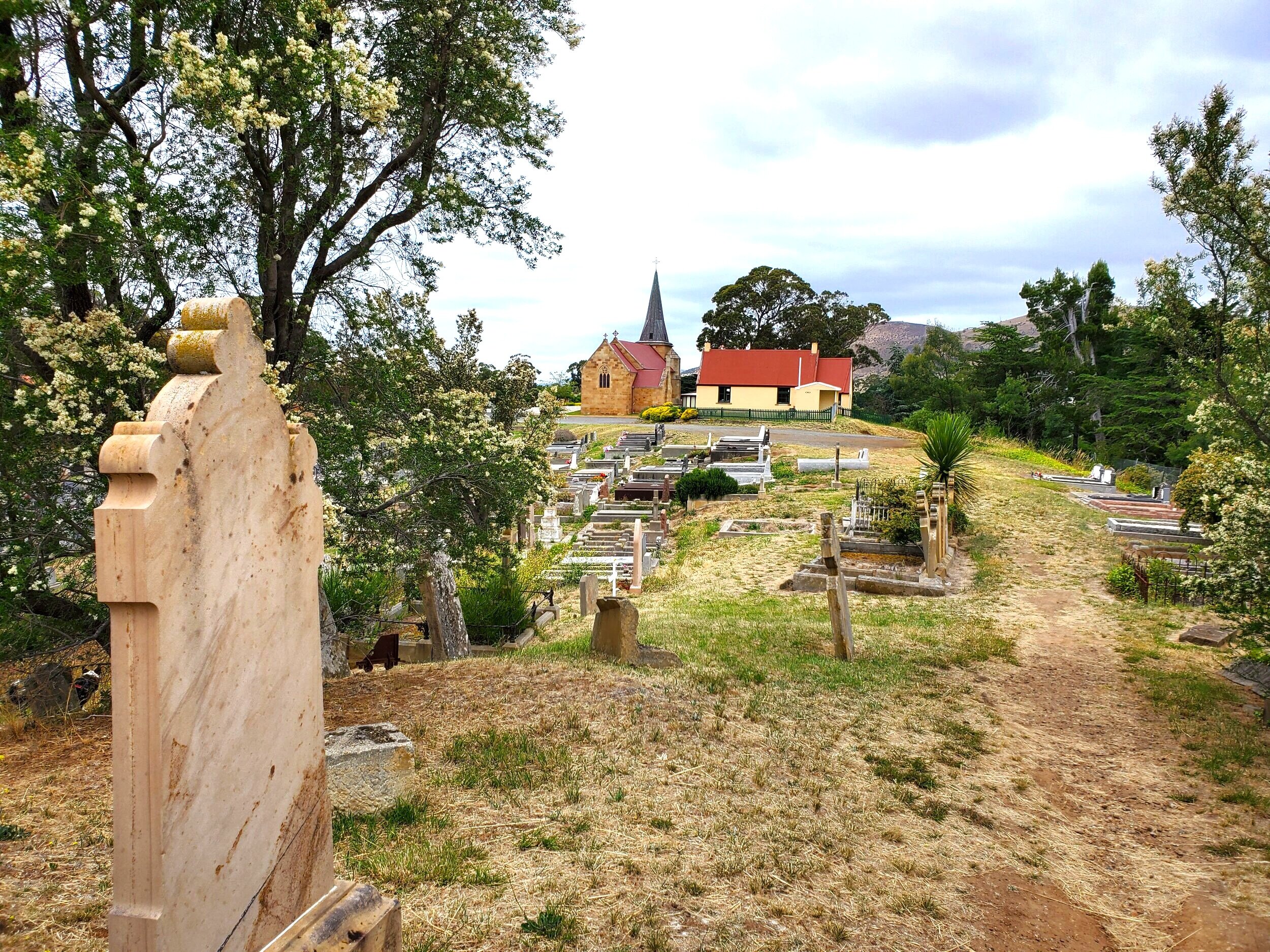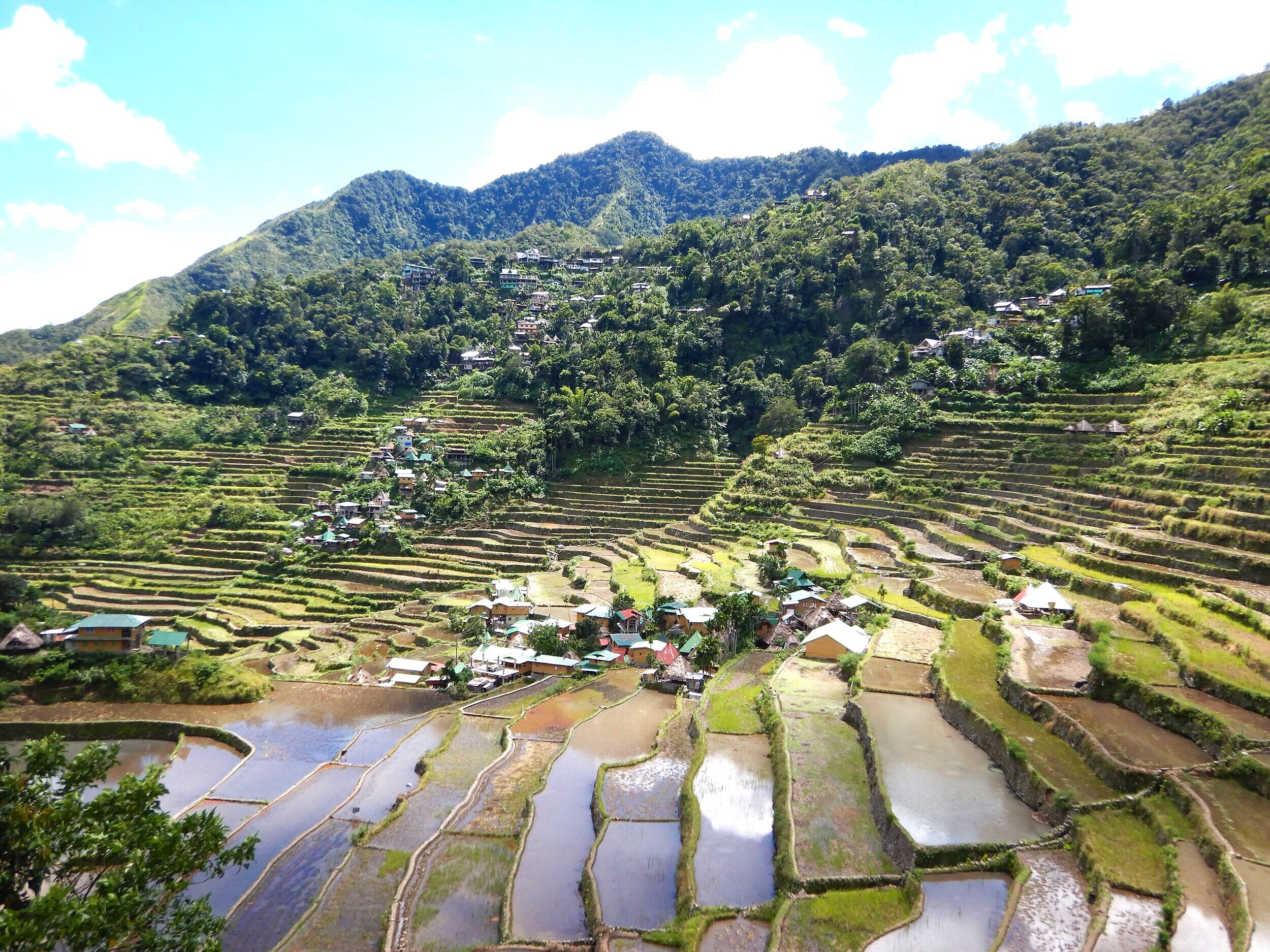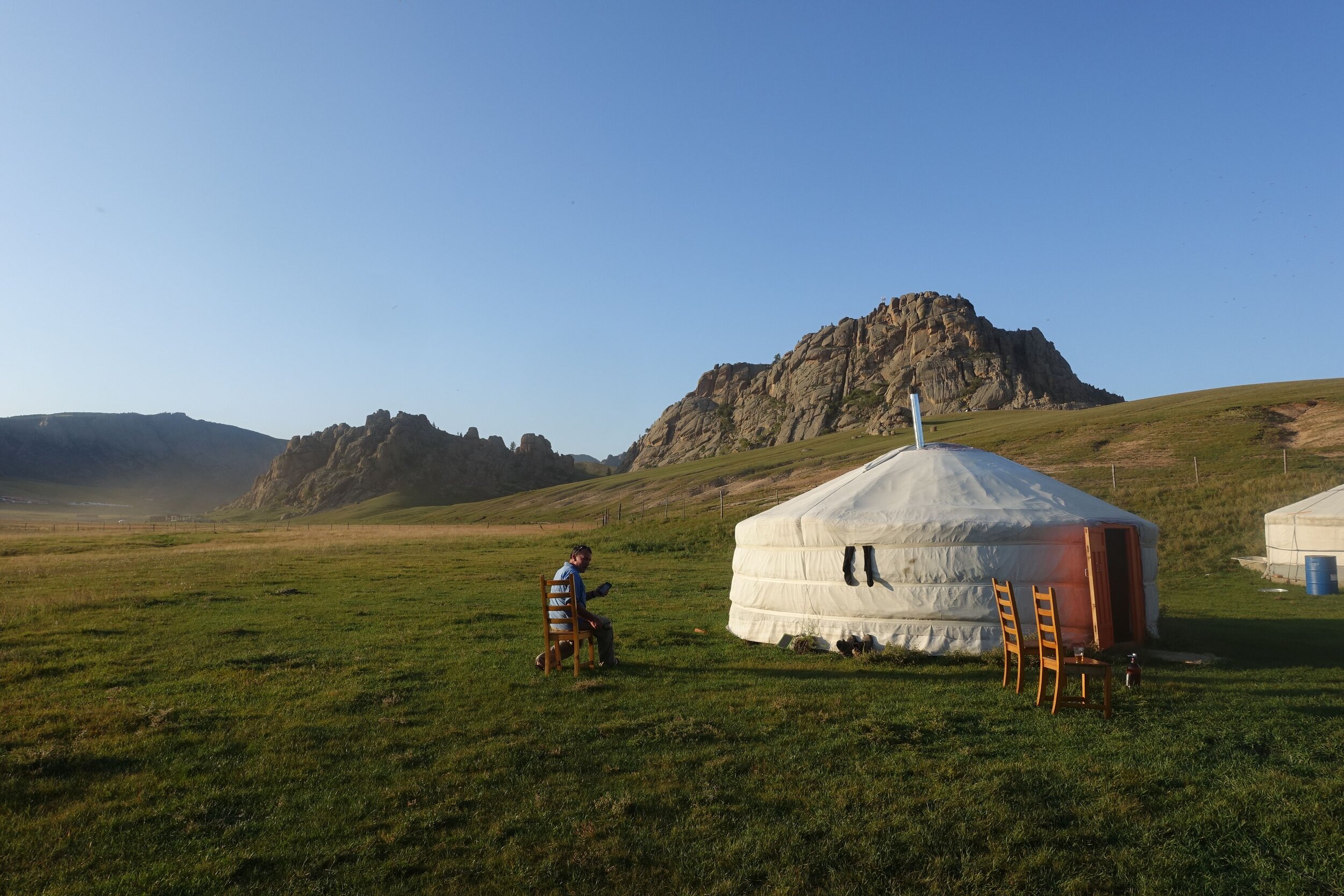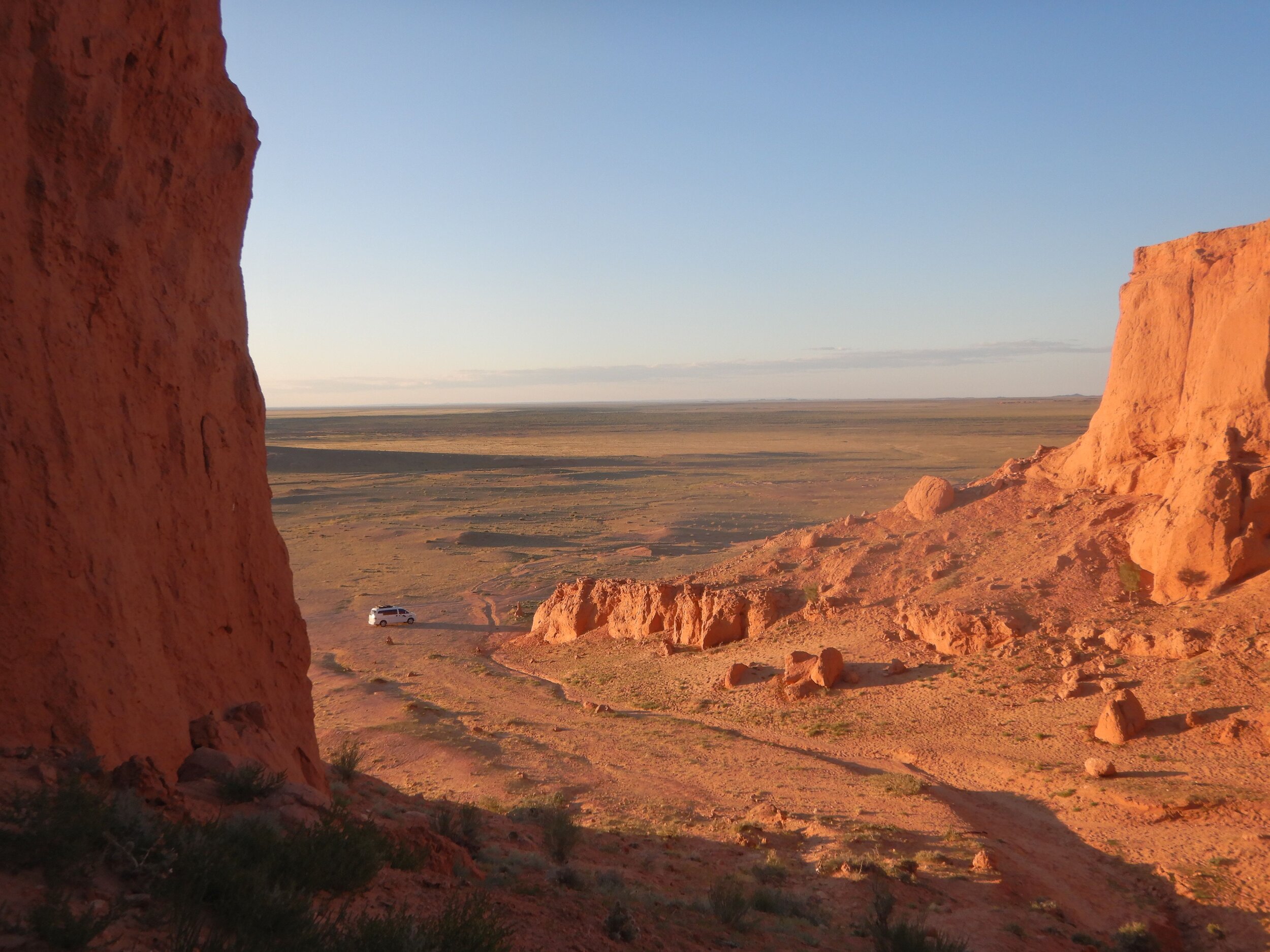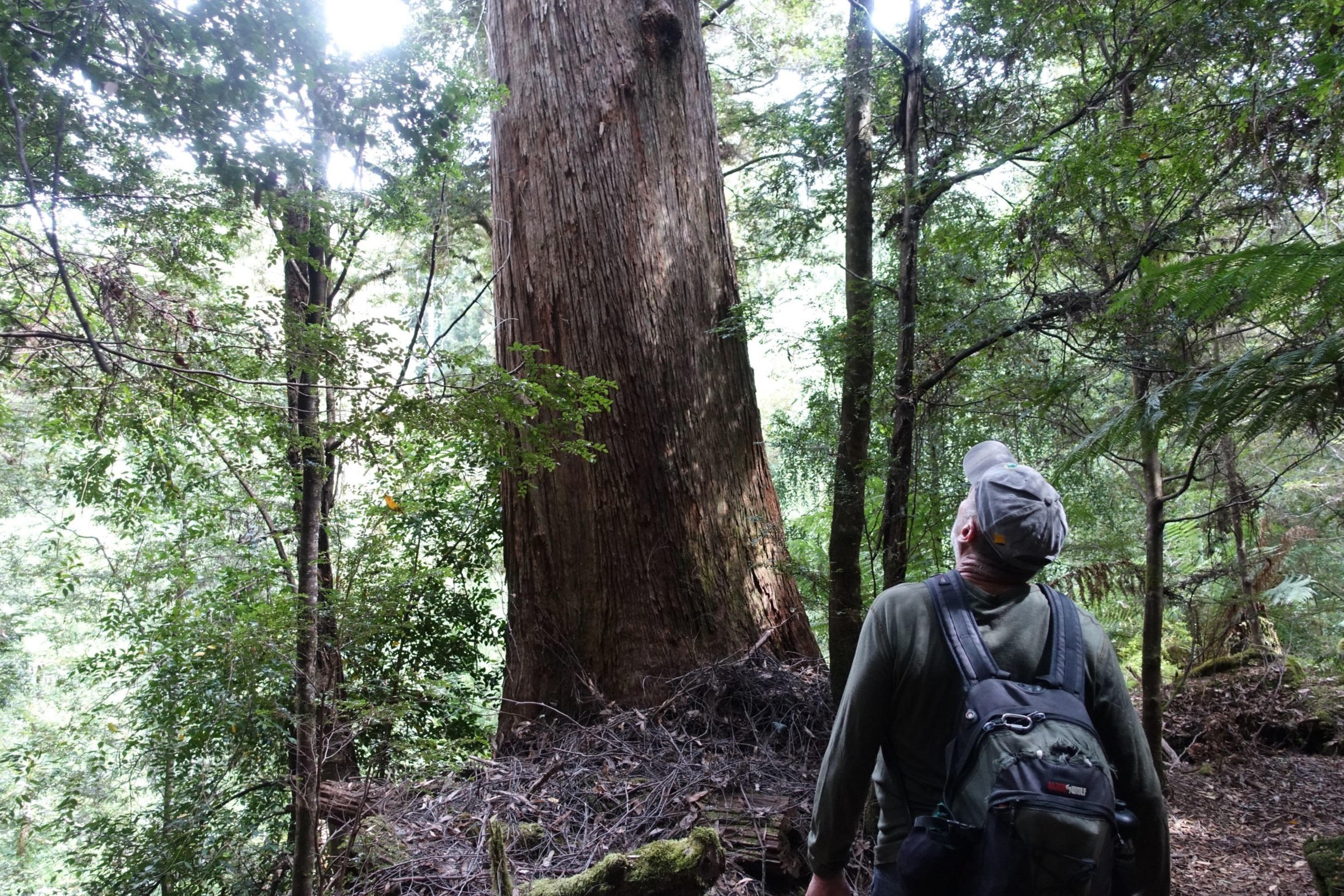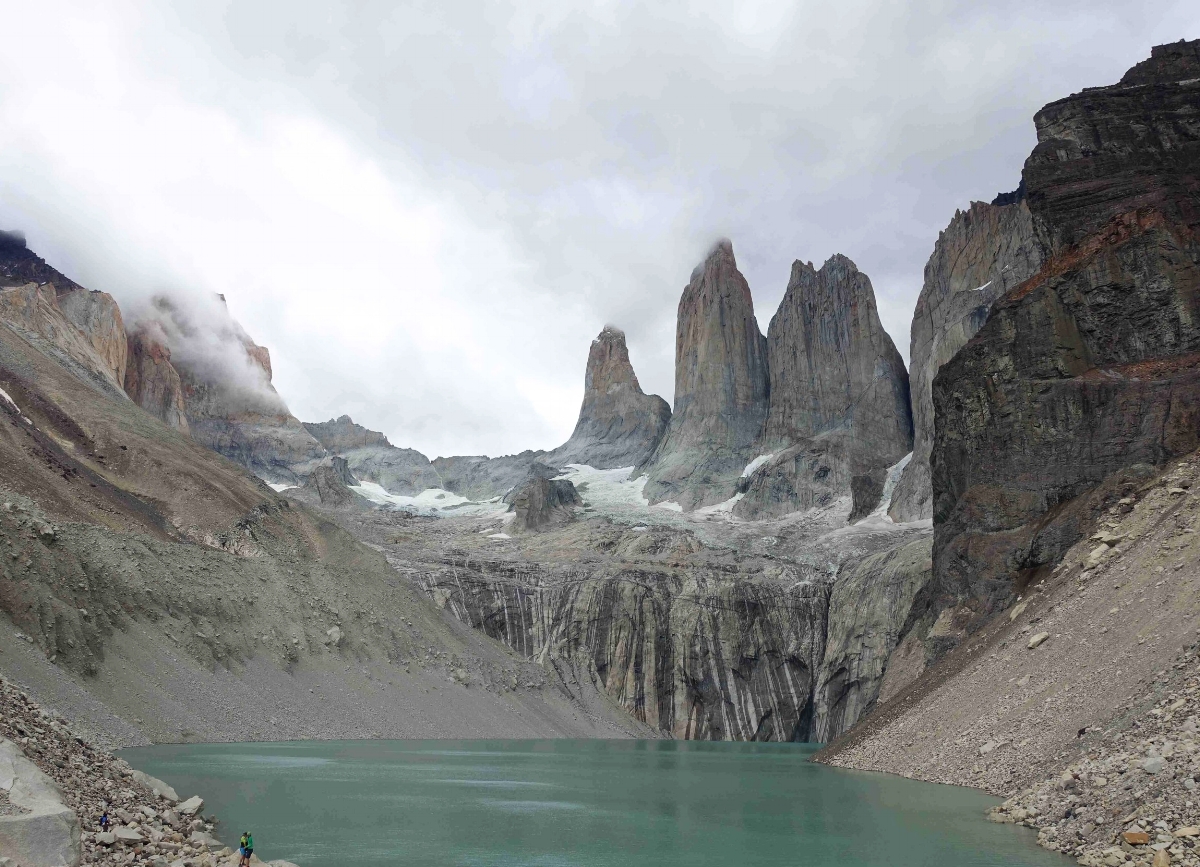Bhutan - Land of the Thunder Dragon
/Introduction
Midway through writing about our trip from Helsinki to Istanbul the opportunity arose to visit Bhutan with my son, Alex. So, I’ve parked Helsinki to Istanbul for a bit – back soon. But for now – it’s all about Bhutan, Land of the Thunder Dragon.
view of the himalayas on the plane to bhutan
Bhutan is a small Himalayan kingdom sandwiched between China (Tibet) and India. It is known for its Buddhist temples and fortresses, spectacular mountain landscapes, distinctive national dress and its pursuit of Gross National Happiness. Who could resist visiting such a place? Not us.
In October 2025 Alex and I did a 10-day trip across Bhutan starting in the west and travelling 300 km to the east of the country. Here’s what happened.
Some Practical Information
Bhutan charges foreign visitors a daily fee of $US100 known as the Sustainable Development Fee. In addition, all visitors must book through a government registered tour operator if you plan to go beyond the capital (Thimphu) or the town of the International Airport (Paro). Prior to arriving all visas, guiding, transport, accommodation and even meals are organised by your tour operator and the itinerary approved. It’s an approach known as “High Value – Low Impact” tourism.
the museum/watchtower above trongsa dzong - see day 5
After extensive research we chose Yak Holidays International. They had good reviews and responded promptly to all inquiries and queries. They were also very clear up front about costs, which not all operators were. They proved to be an excellent choice. More details about them at the end of this post.
chorten (stupa) and prayer flags - trongsa
A Tip: Wherever you travel, if you only learn two words in the local language, it should be -“hello” and “thank you”. In the Bhutanese language Dzongha, hello is “kuzuzangbo la” which is a bit of a mouthful, though “kuzangbo la” or even just “kuzangbo” will suffice. Thank you is “kadinchey la”.
Now, to the trip.
Day 1: Paro and Thimphu
We arrived in Bhutan on an afternoon flight from Delhi, India. We were met at Paro International Airport by our guide Jigme and driver Nima.
We promptly picked up a local sim card at the airport – quick and easy.
alex with jigme (his left) and Nima (rear) at a quick stop to admire the view of the road from paro to thimphu
We then drove the 54 km from Paro to Thimphu just in time to visit the Tashichho dzong, the seat of the national government and the central monastic body. We arrived just in time to see the ceremonial lowering of the national flag.
This was followed by a quick tour of the dzong. Dzongs, by the way, were originally built as fortresses to protect from attacks, particularly from Tibet, but nowadays are administrative and religious centres.
Tashichho dzong is Thimphu’s most impressive building.
Tashichho dzong
We then proceeded to our hotel – Hotel Tashi Yoedling.
From our room we had an unimpeded view of the National Memorial Chorten (stupa) built in honour of the Third King of Bhutan (the grandfather of the current king). It is beautifully lit up at night.
Day 2: Thimphu Sightseeing
From 6.00 am onwards devotees arrive at the chorten to say their prayers and circumnavigate it in a clockwise direction, as directed by their Buddhist faith.
After breakfast it was off to see the sights of Thimphu starting with the giant Buddha Dordenma.
The 51m high Buddha overlooks the Thimphu Valley and the city below.
You can also see the Himalayas from this location on a clear day.
It was then on to our ‘official’ visit to the National Memorial Chorten.
NB: It’s strictly shoes off and no photos inside Bhutan’s temples and chortens, so all you’ll get in this post is the outside surrounds of such buildings.
Bhutanese citizens are required to wear national dress in all temples and government buildings. In reality the vast majority of locals appear to wear their national dress most of the time. For the men it is called a gho and for the women the kira.
the children also wear the national costumes
In a day of hectic visitations, we went to:
· The National Textile Museum
textile weavers demonstrating their technique at the museum
· The National Institute of Traditional Medicine
· The Bhutan Postal Museum
· The National School of Arts and Crafts
· Dupthob Nunnery
And last, but not least, the Royal Takin Preserve.
This weird character is Bhutan’s National Animal.
It shares its Preserve with other endemic animals.
Oh yes, almost forget, we squeezed in a quick drive up to Sangaygang Viewpoint with its abundance of prayer flags and panoramic view of Thimphu.
On our way back to our hotel we stopped briefly downtown to watch the famous traffic police at the central roundabout (no traffic lights in Thimphu).
We also passed a stage in the centre of town where they were setting up for the annual Mr Bhutan body-building contest. It was on the next day, so sadly we’d miss it.
A slightly frenetic but rewarding day.
Day 3: Thimphu to Punakha – 76 km
So far, perfect weather and it continued day 3. October and November are Autumn months in Bhutan. The weather is generally stable and clear which is ideal for touring the country, hence this is high season.
Today’s drive to the town of Punakha took us through the epic Dochu la Pass at 3,140m.
It has 108 stupas or chortens. It was built in 2005 as a Buddhist atonement for the loss of life which occurred when the Bhutanese army fought Assamese militants who were using Bhutan as a base for strikes on their homeland, the Indian state of Assam, wanting it to be independent.
The weather was reasonably clear, so we were able to get some good views of the Himalayas to the north.
yes, those are the himalayas in the distance
It was a busy spot with plenty of ‘high value- low impact’ tourists competing for the best viewing points.
We made a brief stop for some tasty roadside corn.
Then down into the Punakha Valley to visit the Chimi lhakhang (Temple of Fertility).
chimi lhakhang
The temple was built in 1499 by Lama Drukpa Kuenley, known by locals as the Divine Madman.
He preached the notion of salvation through sex, and by all accounts was very successful with the ladies. Probably should’ve been called the Divine Pantsman.
Anyway, today there is a major cottage industry around the temple selling souvenir fertility symbols, i.e. wooden dicks of various sizes and colour schemes.
they even have t-shirts. I resisted the temptation.
You get the idea.
The walk through the village to the temple is a pleasant stroll but beware the ever-present dongers!
After all that phallus viewing it was time for lunch. And who doesn’t love a spot of local Bhutanese rum with their icecream? Not bad.
The Punakha Valley is considered one of the country’s most attractive. With the rice harvest occurring it was also a busy time for locals.
Our next stop was the magnificent Punakha dzong.
It was built in 1637 and is the winter residence of the Je Khenpo (Chief Abbot of Bhutan).
Next it was time for a bit of exercise. We crossed one of Bhutan’s many suspension bridges.
Then strode along paths in bright sunshine through rice paddies.
And scaled a steep hill to reach the Imperial Khamsum Yulley Monastery.
The view from the top was exceptional.
This was followed by a visit to another nearby suspension bridge across the Pho Chu (river), Bhutan’s longest at 160m.
The day ended at our digs for the night, the pleasant Meri Puensum Resort.
Day 4: Punakha – Wangdue Phodrang – Gangtey
Continuing east today’s drive was 75 km, but on the slow, narrow roads this took 2 hours. We stopped along the way to admire a roadside chorten with abundant prayer flags.
The view of the distant Himalayas was clear and majestic.
We called into the Gangtey Monastery built in 1613.
It was then on to the Black Necked Crane Education Center.
The endangered Black Necked Cranes over-winter in this part of Bhutan and the Education Center helps visitors to understand these impressive birds.
inside the education center
The center houses two permanent resident cranes – Pema and Karma, who both have serious permanent injuries that prevent them from flying and therefore migrating. Fortunately, they are well cared for and safe at the center.
There is an observation deck that allows close viewing of the cranes through binoculars without disturbing them. They usually arrive in November, so we were a little early being second week of October.
After lunch we took an easy 4 km stroll along the Gangtey Nature Trail in the Phobjikha Valley.
We couldn’t have asked for better weather.
There was another crane observation point on our route which was on the opposite side of the valley from the education center.
It was then time to check in to our accommodation at Kichu Resort.
Day 5: Gangtey to Bumthang via Trongsa
This was our longest driving day at 147 km – 4 hours. A small roadside temple caught our attention.
We stopped by a monastery to say hello to some young monks.
Our lunch stop café included an in-house waterfall.
It was then on to the magnificent Trongsa dzong.
This massive fortress and temple complex were built in 1644. The first two modern-day kings of Bhutan ruled from here at the beginning of the 20th century.
As in other dzongs photos are permitted in the grounds but not inside the temples.
It is a formidable structure.
Behind the dzong on the hill above is an ancient watchtower.
in the watchtower grounds
Today it houses a museum.
We were lucky to observe some local men practicing their dance moves for an upcoming festival.
After our long drive and dzong viewing we arrived in Jakar, the main town in the Bumthang region. We checked into the Swiss Guest House, a longstanding travellers’ favourite in Bumthang, started in 1969 by a chap from Switzerland.
Day 6: Bumthang Sightseeing
We had a more relaxing start to our day as we didn’t need to do a lot of driving. We commenced by visiting the Wangdichholing Heritage Museum.
It began life as a palace in 1857.
It was home to the first King of Bhutan – King Ugyen Wangchuck.
It is now a cultural museum.
Next stop was Jakar dzong, which means Castle of the White Bird.
In the afternoon it was time for a spot of mountain biking. We convinced Jigme and Nima to come with us, which they did, while still wearing their traditional ghos.
We did a circuit riding along one side of the Chamkhar Chhu (river) to Kenchosum Monastery.
The original building was constructed in the 6th century and renovated in 1995.
We also stopped by the Tamshing Ihakhang (Temple of the Good Message), established in 1501 by Pema Lingpa (more on him later).
We crossed over a bridge and returned to Jakar along the other side of the river.
Bikes returned, it was now time for a well-earned beer at the Red Panda Café.
Not bad.
Day 7: Tang Valley
One of the prettiest parts of the Bumthang region is the Tang Valley.
tang valley
Our first stop on our drive there was to see the renowned Burning Lake. It was so-called because the aforementioned Pema Lingpa plunged into the lake carrying a burning butter lamp and emerged carrying a sacred treasure (as he’d predicted) and the lamp was still burning – hence the name, “burning lake”.
The ‘lake’ is, in fact, a smallish, quiet pool section of a stream. It is a pilgrimage site for many Bhutanese people.
We then made our way to the Tang Valley and the Ogen Choling Palace Museum. This museum is privately-owned.
It is also a place of religious studies.
We came across three older women busily sorting chillies.
We also had lunch there. The Bhutanese people love chillies, but be warned, they like their food hot. Don’t try to match them – you’ll regret it.
It was then back to Jakar and the Swiss Guest House.
swiss guest house
Day 8: Return to Paro
To avoid the long drive back to the west of the country we’d arranged a short domestic flight from Bumthang to Paro (35 minutes). The delightful Badbalathang Airport has one of the nicest departure lounges you’re ever likely to come across.
The short flight was scenic and smooth, thanks to pilot’s skill and the good weather.
thimphu from the air on our return to paro
Jigme and Nima had made the 7-hour drive back to Thimphu the previous night and were on-hand to meet us on arrival. It was now mid-afternoon, so with no time to lose, it was off to downtown Paro for some souvenir shopping.
downtown paro
Then came some more Bhutanese craft beer at Namgay Artisanal Brewery.
This was definitely one of our most relaxing, un-demanding days.
We then checked-in to the River Front Resort.
Day 9: The Tiger’s Nest!
We’d saved the star of the show until last – the famous Tiger’s Nest Monastery (Taktsang Goemba). It was the sight we were most interested to see on our trip.
We met Jigme and Nima at 6.30am to get to the car park early for the walk up to the monastery. But plenty of other people had the same idea. It was already very busy, including some school groups.
Horses and their handlers milled about. Their main role is to carry supplies to the monastery and the café at the halfway point. Yes, there’s a café.
The walk is 4.5 kms each way. The start is at 2400m above sea level and the monastery is at 3100m, a rise of 700m, so it’s a solid walk in thinner than usual air. It takes most people around 2 hours to get there and a bit less going back. It starts in a pleasant forest.
Then gradually rises. There were plenty of others doing the walk.
As we got closer the Tiger’s Nest came into view.
It was then down a long slope before the final rise to the monastery.
And across a bridge with a waterfall backdrop.
We’d made it.
On our way back we stopped at the café for a breather and photo op.
By the time we got back to Paro it was lunchtime, so we called into a local farmhouse for lunch.
enjoying a farmhouse lunch after visiting the tiger’s nest
And a spot of archery – the national sport.
The day was not over yet. We still had time to visit another temple – Kyichu lhakhang. It was built in 659 AD by Tibetan King Srongtsen Gampo.
Finally, it was time to stop so we returned to our hotel.
Day 10: Farewell Bhutan
Our flight out of Bhutan didn’t leave until early afternoon so there was time to squeeze in a couple more sights, starting with the National Museum of Bhutan. It is housed in the watchtower which overlooks the imposing Paro dzong.
It was originally built in 1649 and renovated in 1968.
It has some interesting cultural and historical exhibits.
And its hilltop location provides expansive views of Paro and the valley.
Our last stop was the Paro dzong itself.
paro dzong
We witnessed a procession of monks arriving at one of the dzong’s temples.
It was then off to Paro Airport and our flight out of Bhutan.
Conclusion
Sadly, that was that. It was now time to leave. It’d been a fantastic 10-day journey into the landscape, culture and religion of this unique country.
If you ever get the chance to visit Bhutan, take it – you won’t be disappointed.
Some Notes on Travel to Bhutan (and Some Thank Yous)
Firstly, locals don’t call it Bhutan but Druk. You’ll see Druk references everywhere. The national airline is Druk Airlines. The most common beer is Druk Lager.
Secondly, a critical factor that made our trip so successful was choosing the right tour company. In our case it was Yak Holidays International. A big thank you to Sithar Tamang at Yak who organised our itinerary and all that went with it.
a cheeky bhutanese red
Our guide Jigme was excellent. The bewildering cast of characters that make up Bhutanese Buddhism has the potential to make visits to temples with their innumerable statues and wall paintings a confusing and blurring exercise for foreigners.
But with our guide Jigme, his knowledge and ability to explain the symbolism and history made every temple visit interesting and rewarding. A good guide is fundamental.
our guide, jigme
Also, our driver, Nima was top class.
alex and nima
The windy, often narrow, mountain roads are not for the inexperienced. We always felt very safe in Nima’s hands and like Jigme, he was good company.
Yak did not know we had a travel blog until I mentioned it on our departure, so we got no special treatment. We received the level of service all their clients receive. Here is a link to their website.
I also want to thank our Tassie friend Lynne Maher, who had lived and taught in Bhutan and shared a lot of useful tips and information with me before we departed. Thanks Lynne.
traditional masks worn during festivals
Oh yes, and lastly, why is it called the Kingdom of the Thunder Dragon? The Thunder Dragon is on its national flag. The name Thunder Dragon or Druk Yul is said to come from the wild thunderstorms that strike the Himalayan valleys which were once believed to be the roar of a dragon. It is also a national symbol representing enlightenment and the guardian of Buddhist teachings.
Ken

